The Detourist’s list: Buildings that make you smile
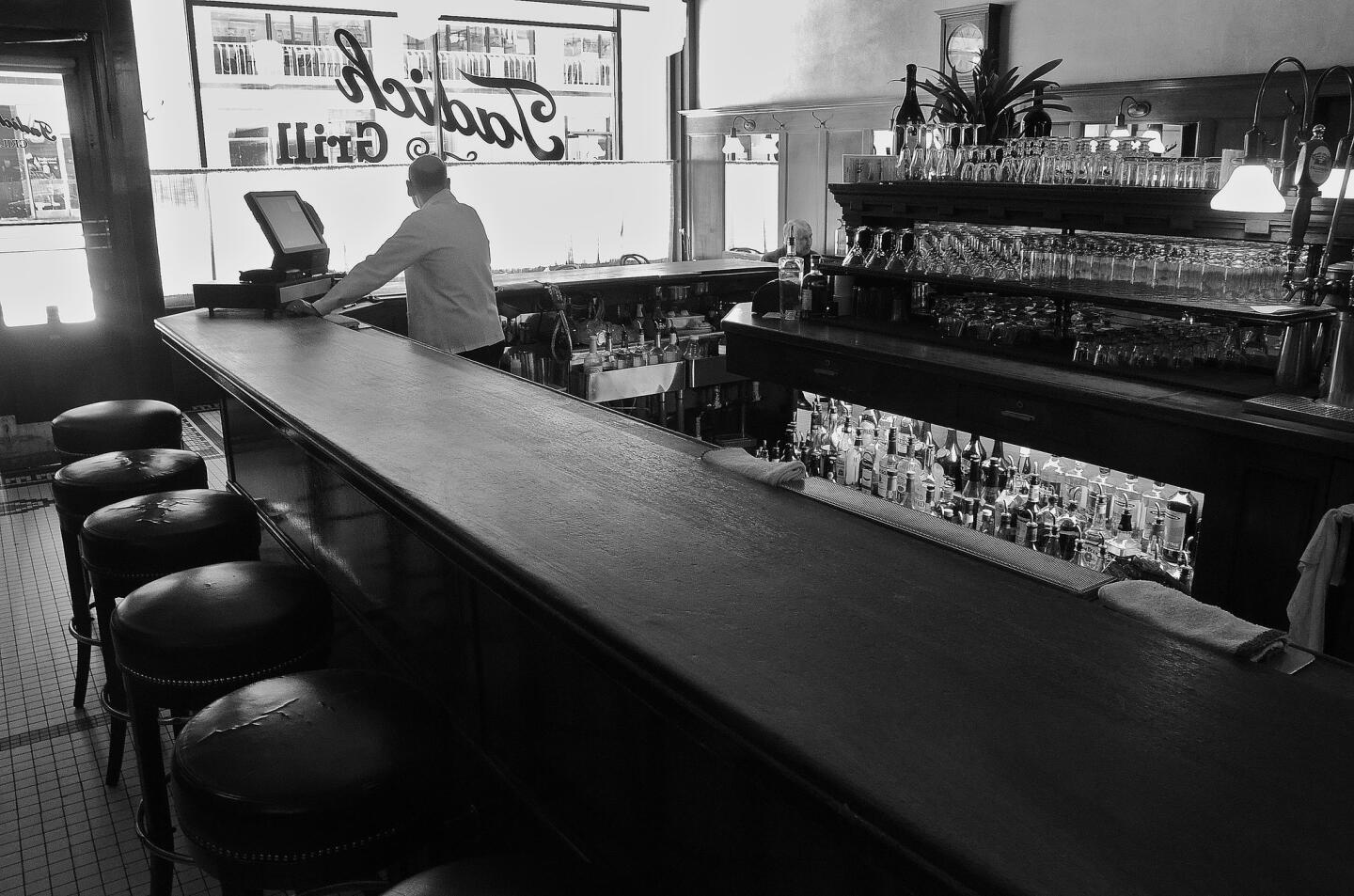
This was a lazy afternoon on California Street in the Financial District of the city. The Tadich Grill (can you reach the sign backwards?) is one of the city’s oldest restaurants. Seafood is a specialty -- sand dabs in particular. Photo taken in 2013. (Christopher Reynolds / Los Angeles Times)
This slideshow, shot and written by Times staffer Christopher Reynolds, looks at architecture and design worldwide. More Daily Detour photos
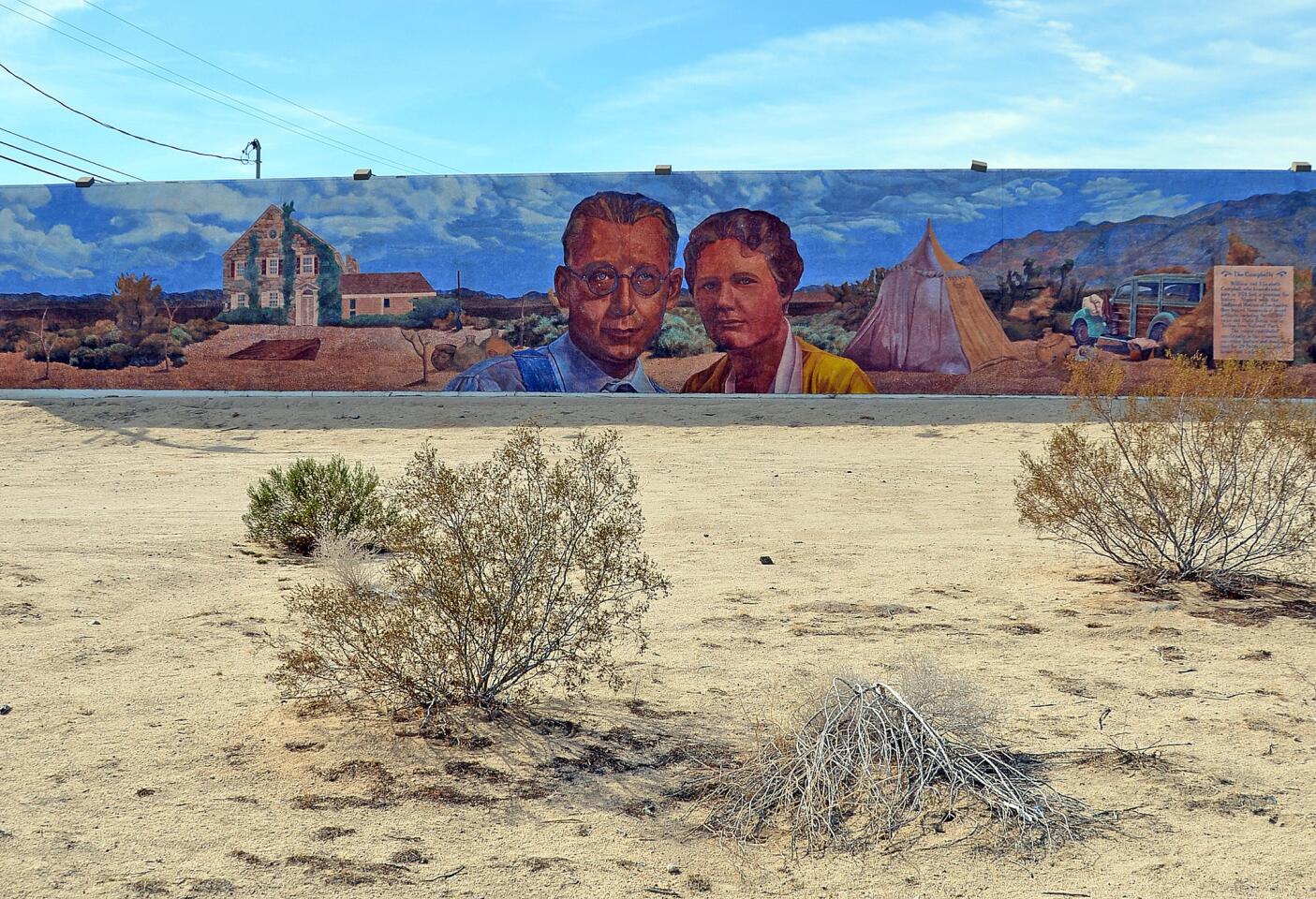
Back in the 1990s, the leading boosters of Twentynine Palms, near Joshua Tree National Park, decided to make the desert town an “oasis of murals.” This one, by L.A. artist Richard Wyatt, celebrates William Campbell and his wife, Elizabeth Crozier Campbell, who came to town in 1924. (Christopher Reynolds / Los Angeles Times)
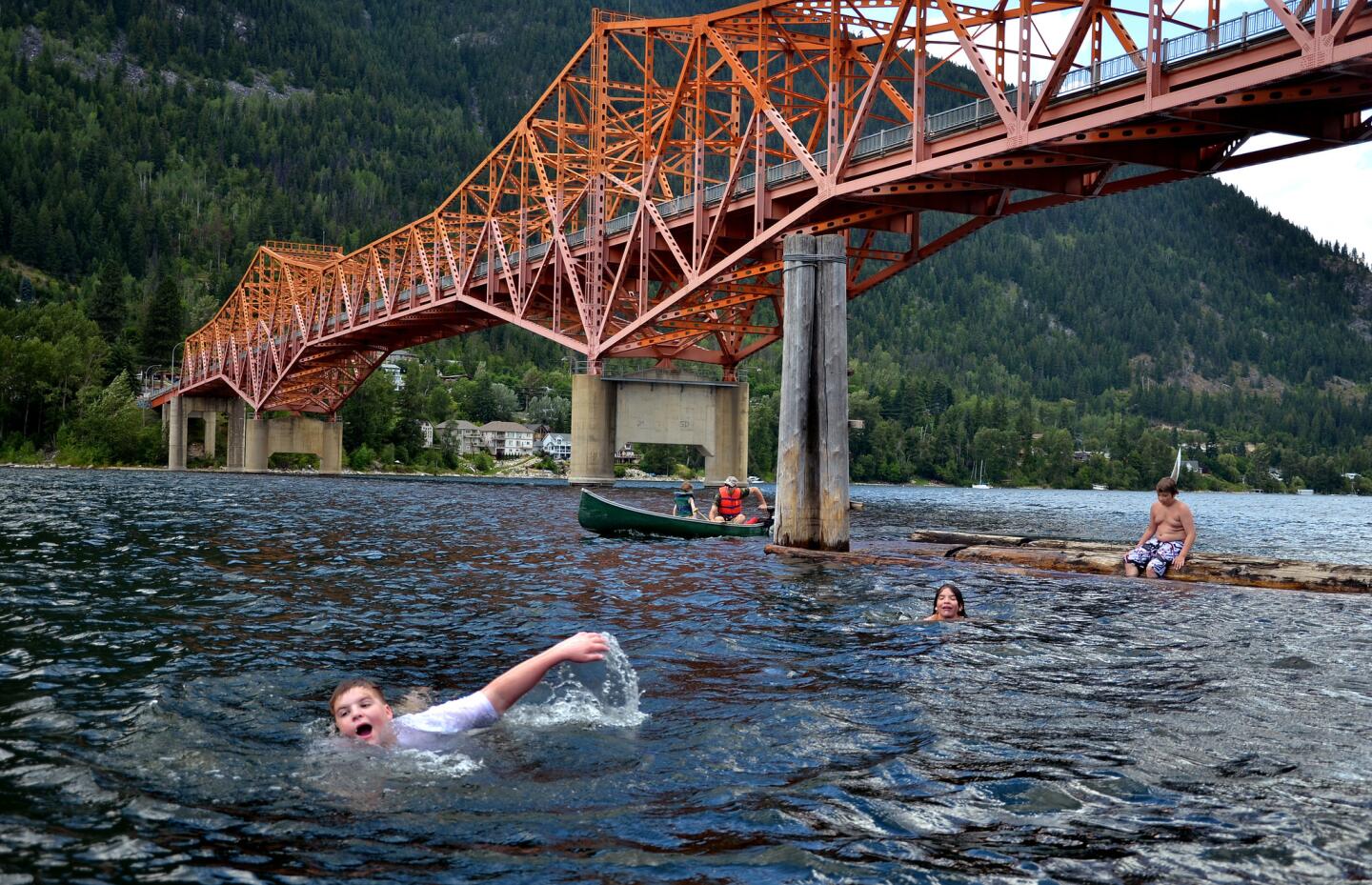
The big orange bridge over Kootenay Lake near Nelson, B.C., is known by some as the West Arm Bridge, by some as the Nelson Bridge, and by others (because it is big and orange) as B.O.B. Shot in 2011. (Christopher Reynolds / Los Angeles Times)
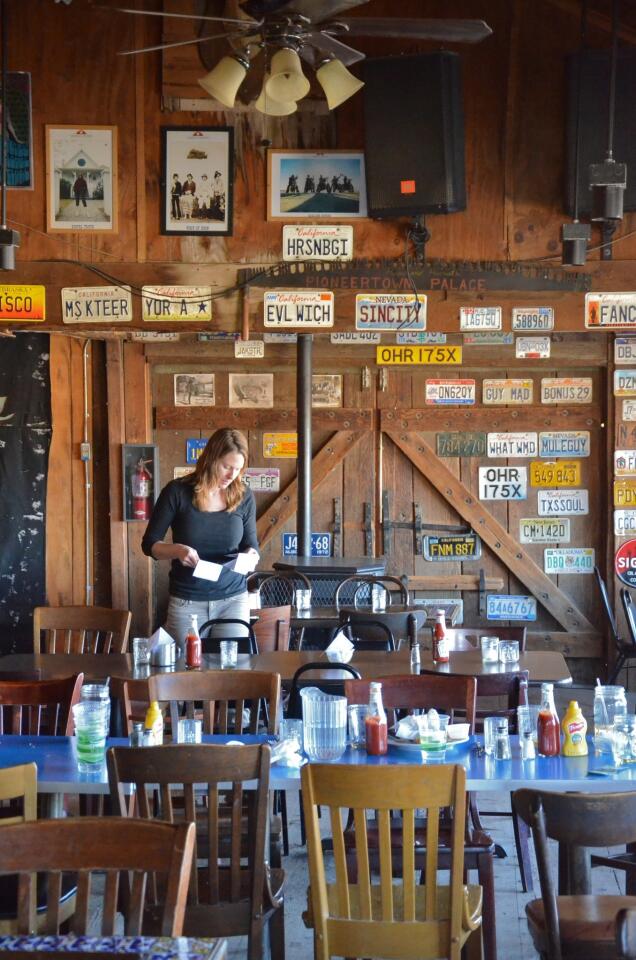
Pappy and Harriet’s Pioneertown Palace, about 45 minutes north of Joshua Tree, is a desert watering hole with a rich musical element. Besides food and drink, regular can count on live music most nights, with an emphasis on American roots.Photo shot in 2012.
Read more: Joshua Tree National Park and Desert Hot Springs
Advertisement
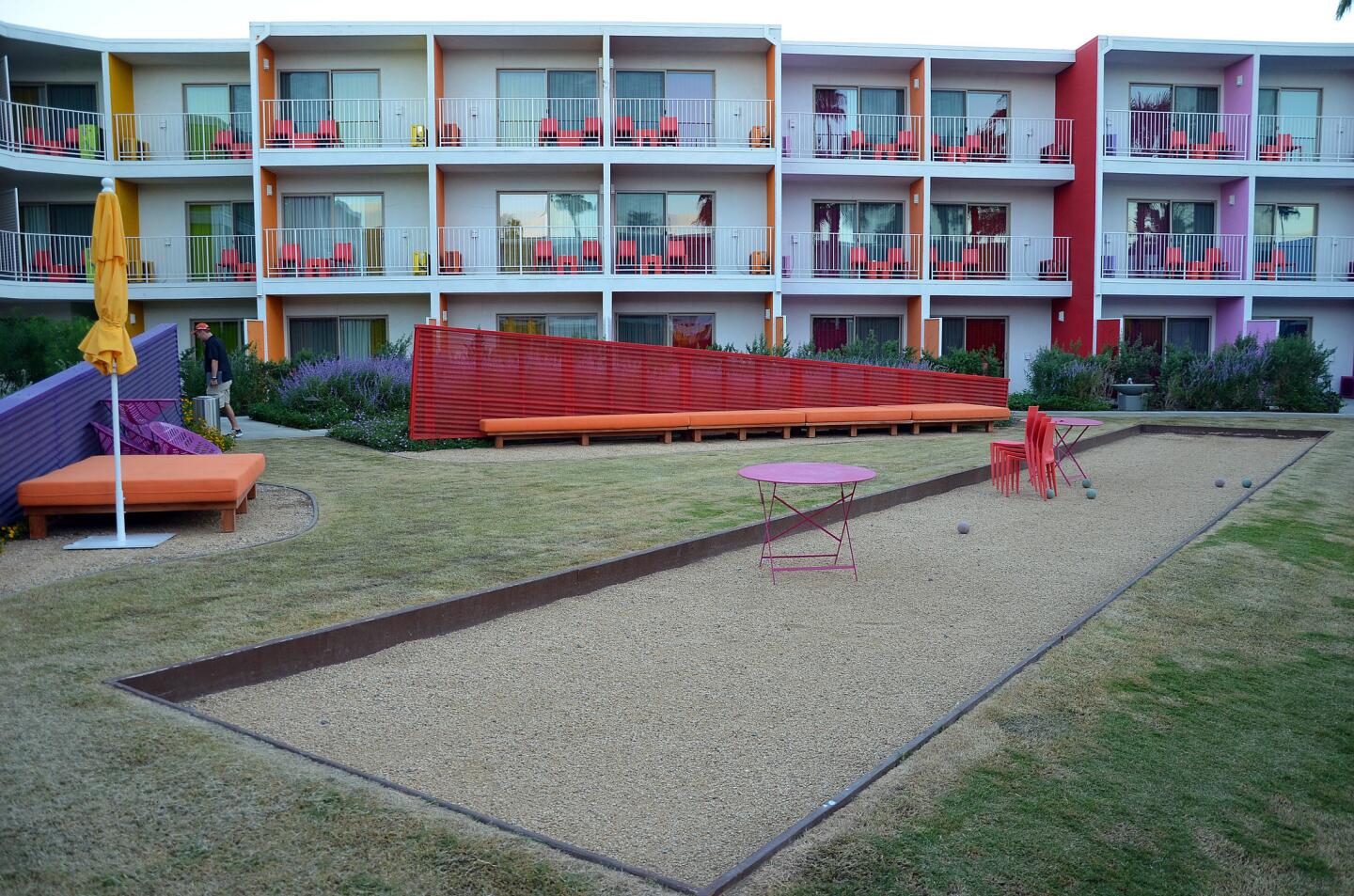
The Saguaro Hotel stands on East Palm Canyon Drive in Palm Springs. Besides drenching it in colors inspired by desert flora, its designers have underlined its mid-century look by adding geometrically bold game areas and benches. Photo taken 2012. (Christopher Reynolds / Los Angeles Times)
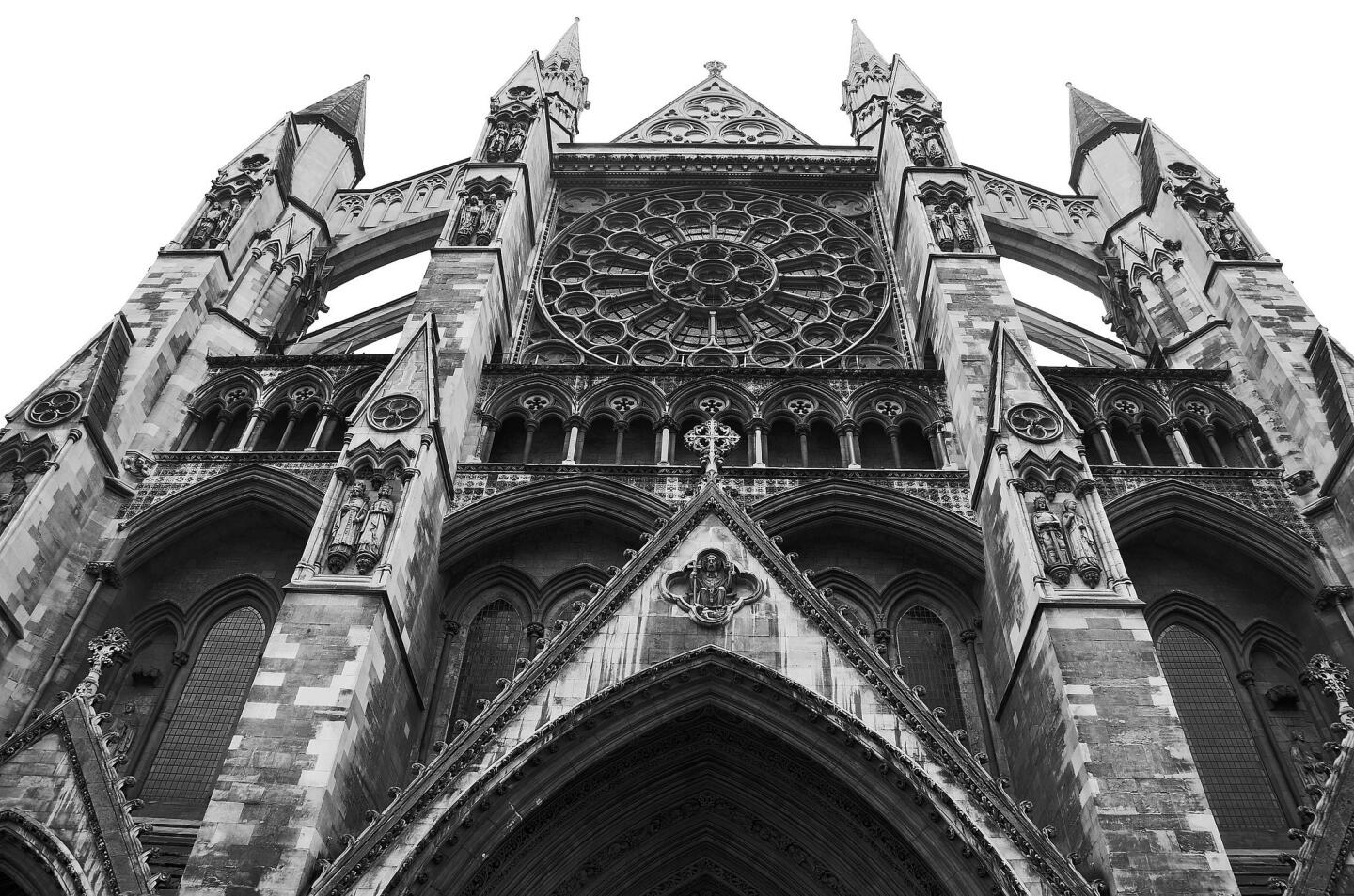
Westminster Abbey, which dates to 960, is the resting place some of the English-speaking world’s best-known names, including Geoffrey Chaucer Charles Dickens, Charles Darwin and Rudyard Kipling. But it’ll cost you to browse past the chiseled stones: As of early 2014, admission fee for a non-worshipping adult tourist was roughly $30. (Christopher Reynolds / Los Angeles Times)
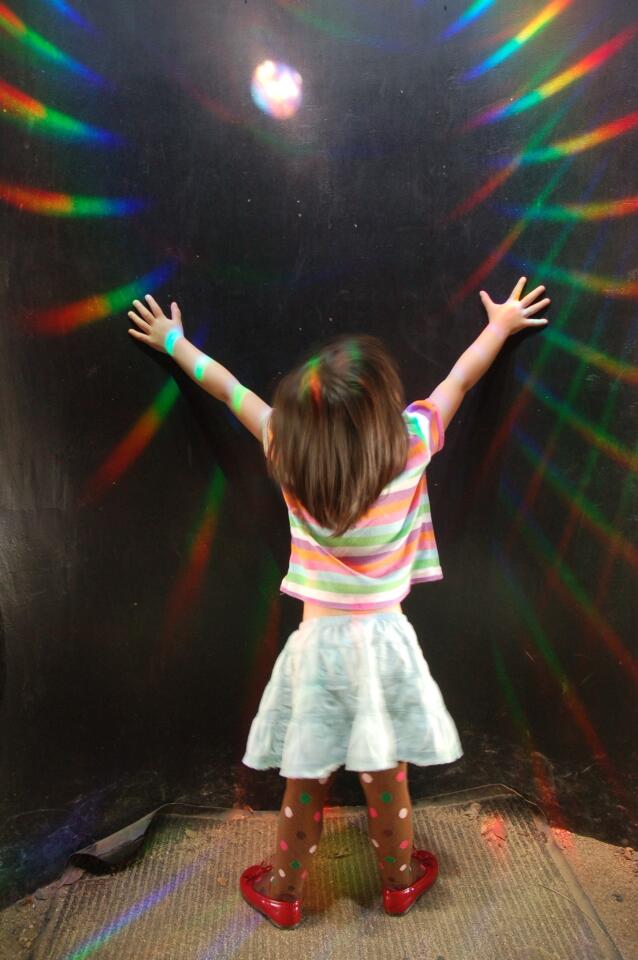
The Huntington Library and Gardens are mostly known for their grown-up assets, especially books, art and well-coifed flora. But the Huntington’s Children’s Garden includes water features, a fog grotto, a fragrance garden and, much to the delight of this 3-year-old, a prism tunnel. Photo taken in 2008. (Christopher Reynolds / Los Angeles Times)
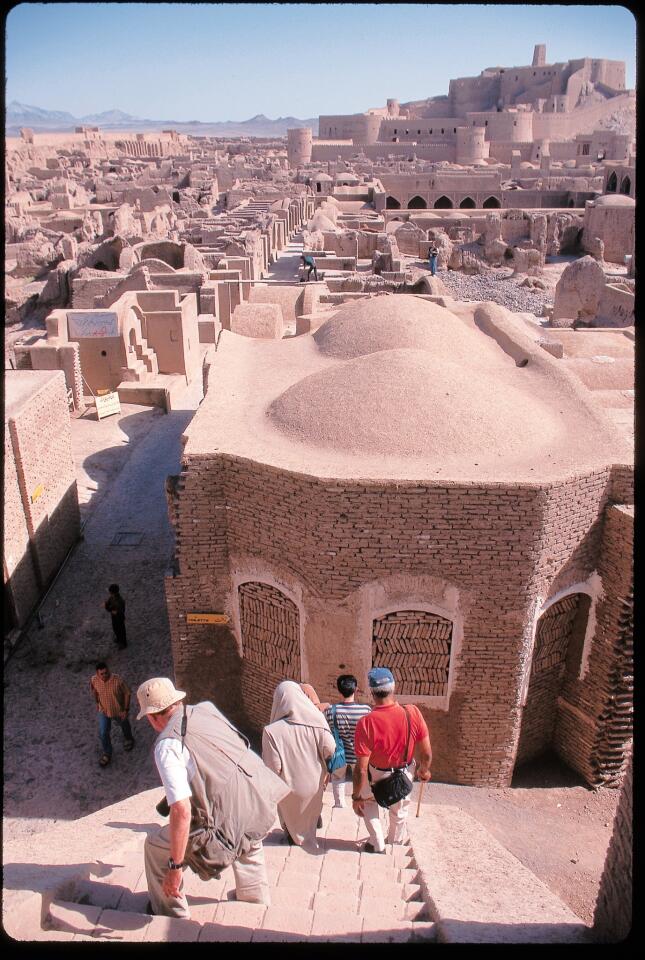
This archeological wonderland is the ancient citadel of Bam -- or at least it was. I took this photo in 1998. Five years later, the area was hit by a major earthquake that killed thousands of people and reduced much of the 2,000-year-old mud-brick citadel to beige rubble. (Christopher Reynolds / Los Angeles Times)
Advertisement
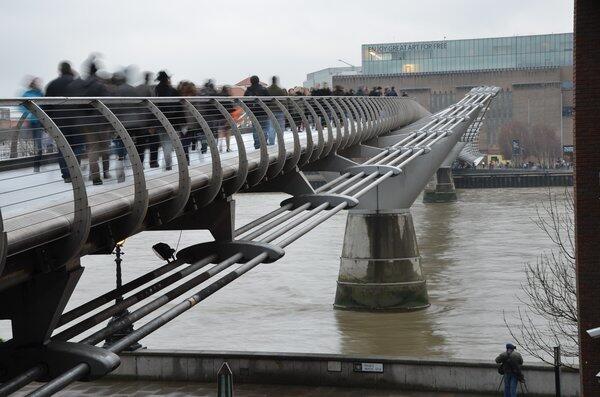
This is the sleek, busy Millennium Bridge, which delivers pedestrians across the Thames River between St. Paul’s Cathedral to the former power plant that is now the Tate Modern museum. That’s the museum across the water, bearing a sign that says: “Enjoy great art for free.” Photo shot in 2011. (Christopher Reynolds / Los Angeles Times)
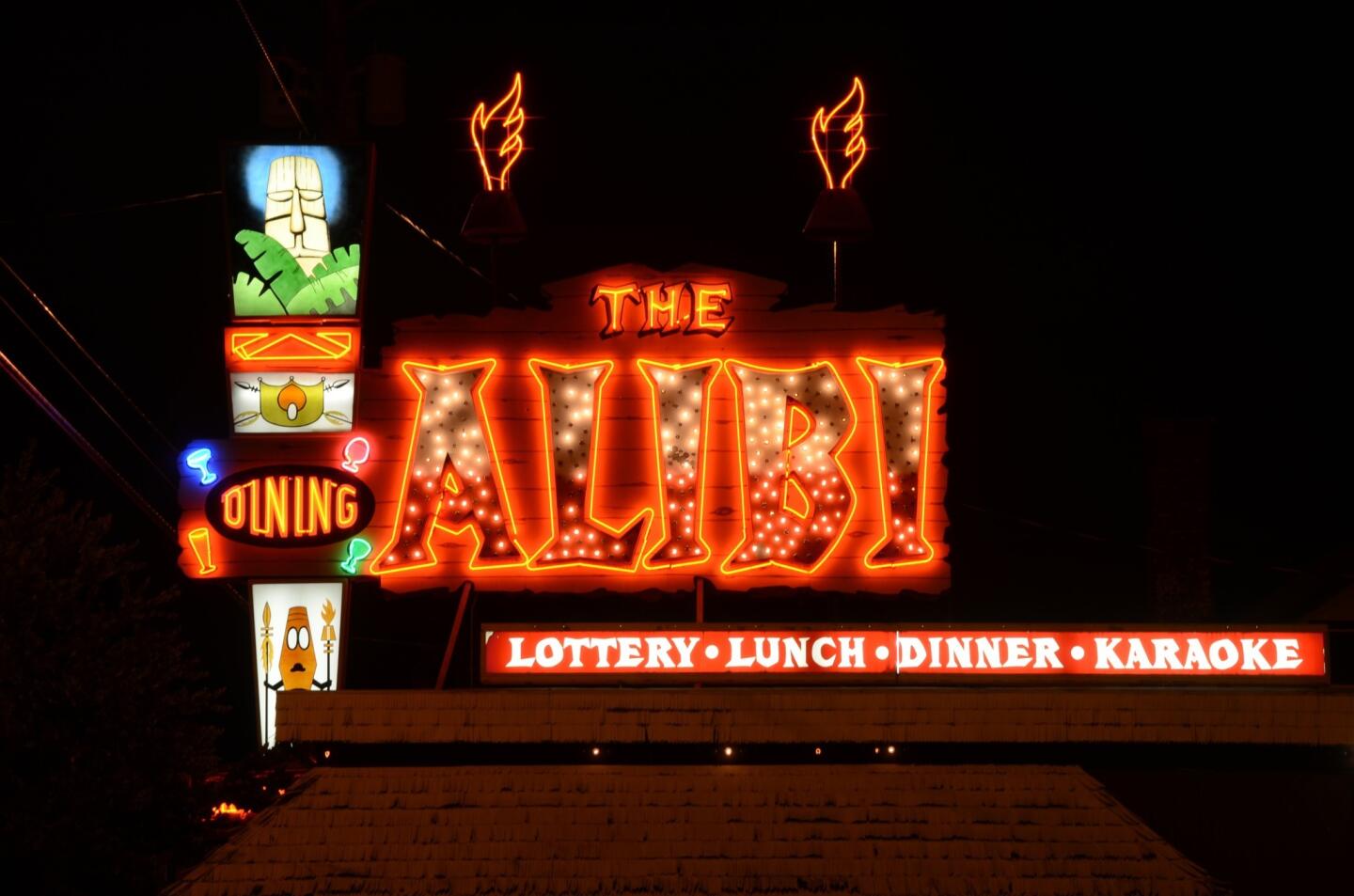
The Alibi has one of the most striking signs in Portland, Ore. -- a symphony of red and white lights that all but orders you to pull off North Interstate Avenue and come inside. Once you’re in, the Alibi is heavy on tiki touches and karaoke. The bar goes back more than 60 years. (Christopher Reynolds / Los Angeles Times)
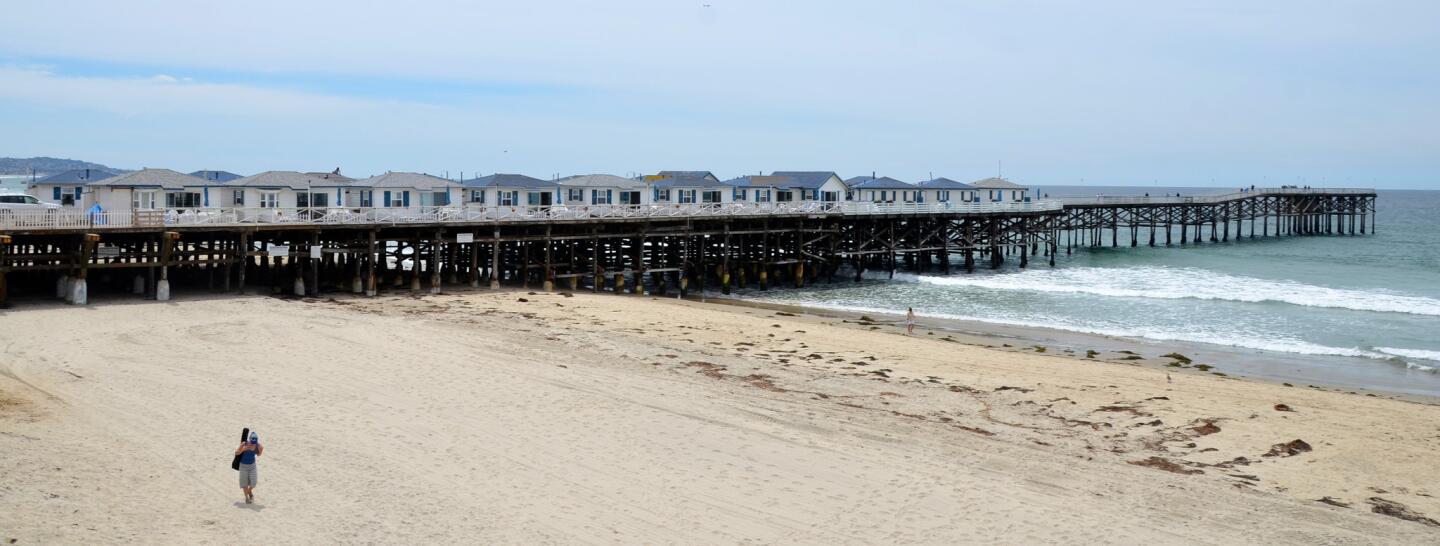
Since the 1930s, the Crystal Pier Hotel has been perched on stilts at San Diego’s Pacific Beach. Photo taken in 2012.
Read more: San Diego, Coronado and La Jolla (Christopher Reynolds / Los Angeles Times)
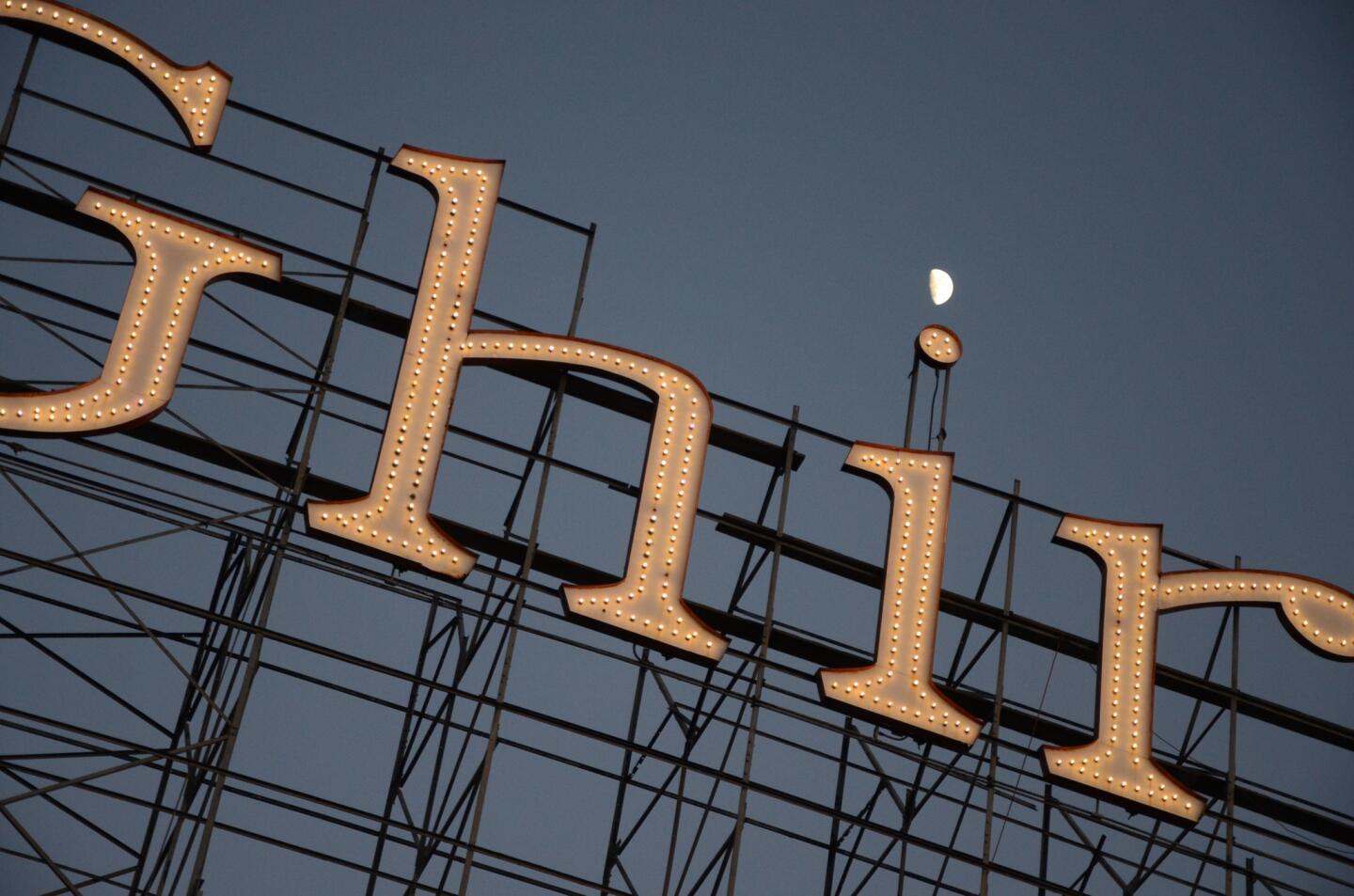
A January moon lines up like a second dot over the first “i” in the Ghirardelli Square sign. The Ghirardelli block, long a landmark near Fisherman’s Wharf, began its life as a chocolate factory in the 1890s, but after 70 years, the company was ready to move production elsewhere. So in 1964, the building complex was reborn as an upscale mall. Was this the first successful adaptive reuse project in the country? The Ghirardelli website makes that claim. I’m skeptical -- but I’m also glad the sign and buildings survived.
Read more: San Francisco’s famed cable cars (Christopher Reynolds / Los Angeles Times)
Advertisement
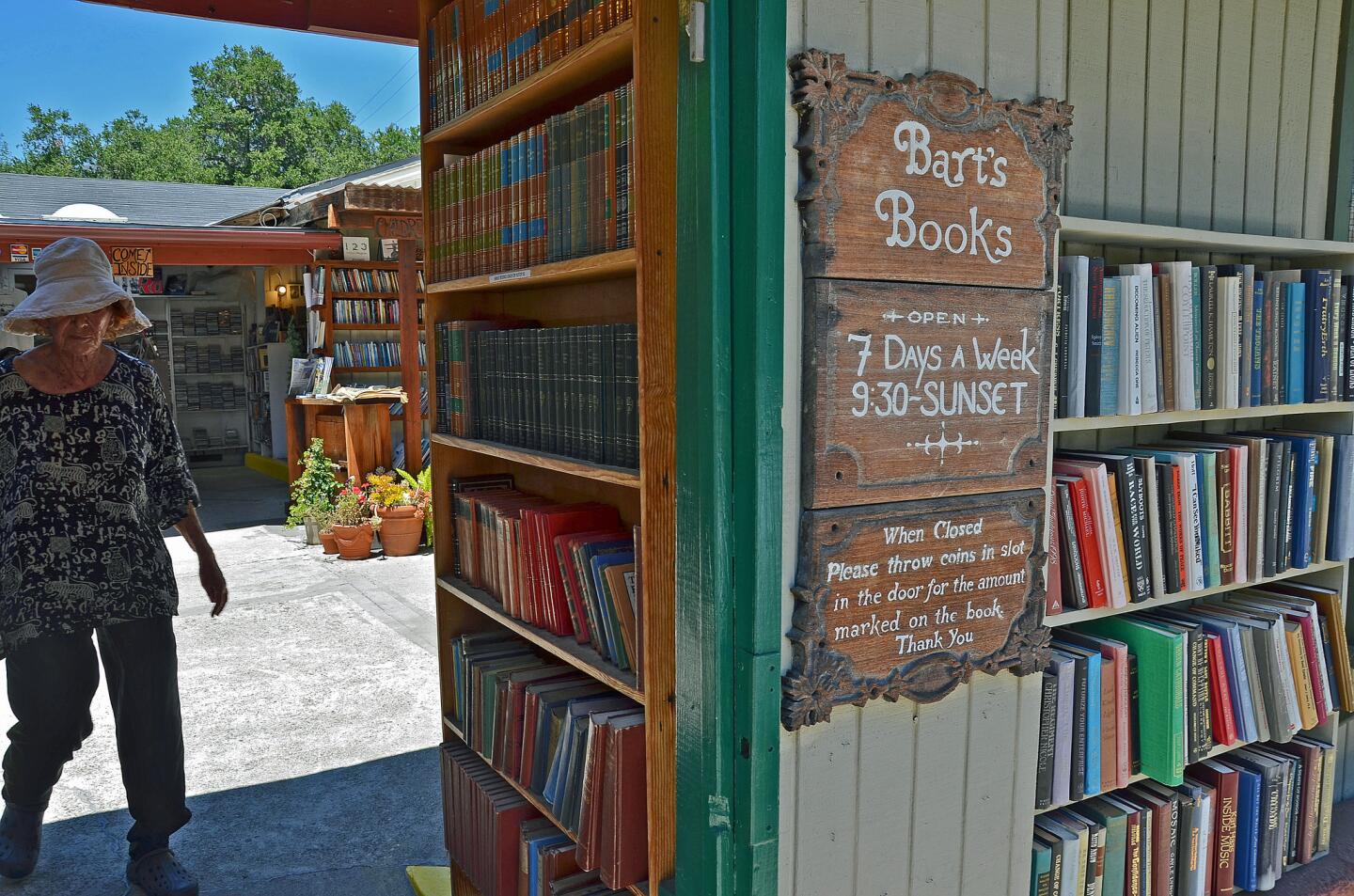
It makes no sense: a bricks-and-mortar bookshop that uses the honor system and stocks most inventory outdoors. And yet Bart’s Books celebrates its 50th anniversary in 2014. (Christopher Reynolds / Los Angeles Times)
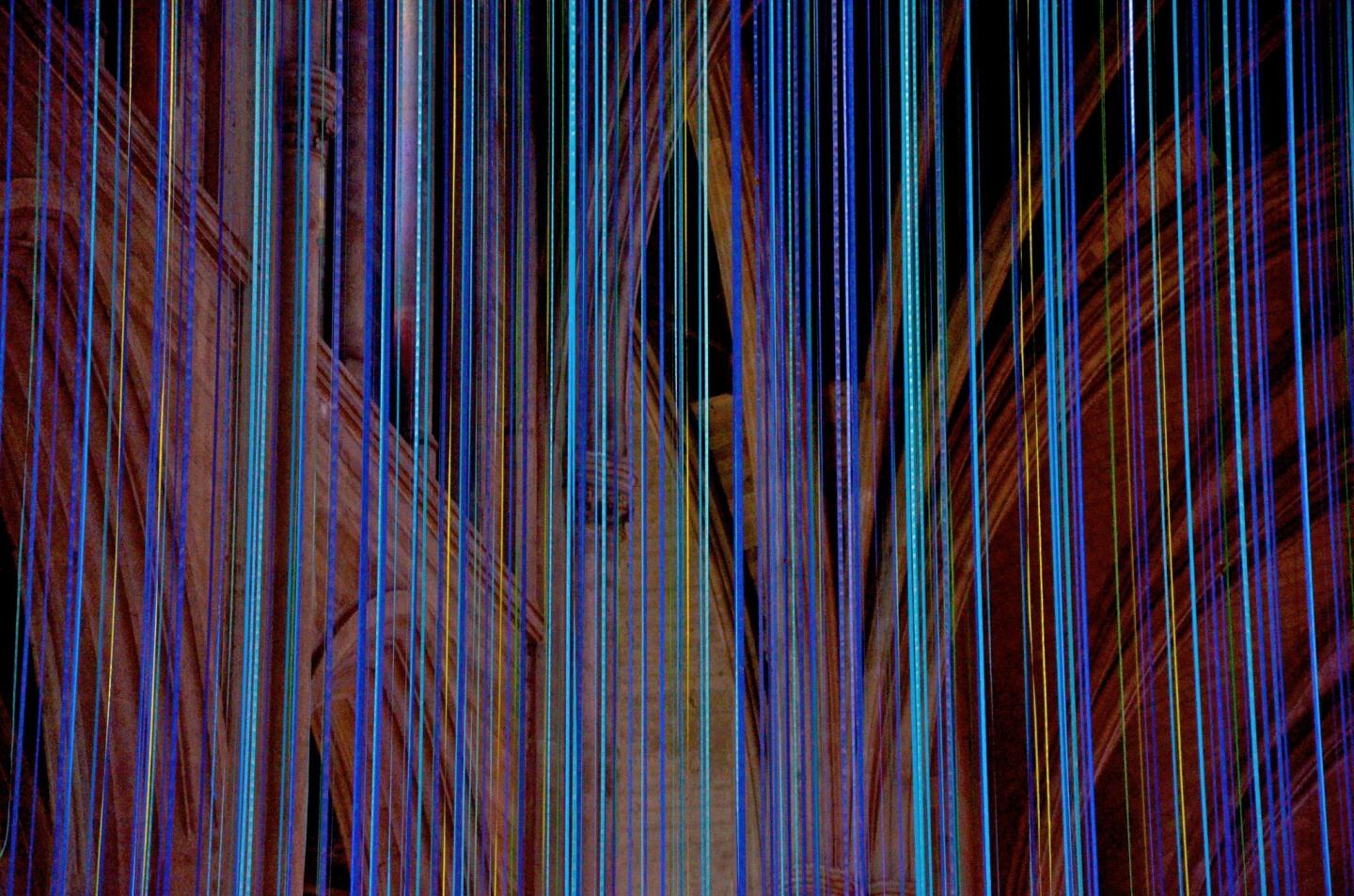
This half-abstraction is Grace Cathedral, festooned with colored streamers. If you buy the idea that design is frozen music, this might be a marimba-pipe organ duet. Photo taken in 2013.
Read more: San Francisco’s famed cable cars (Christopher Reynolds / Los Angeles Times)
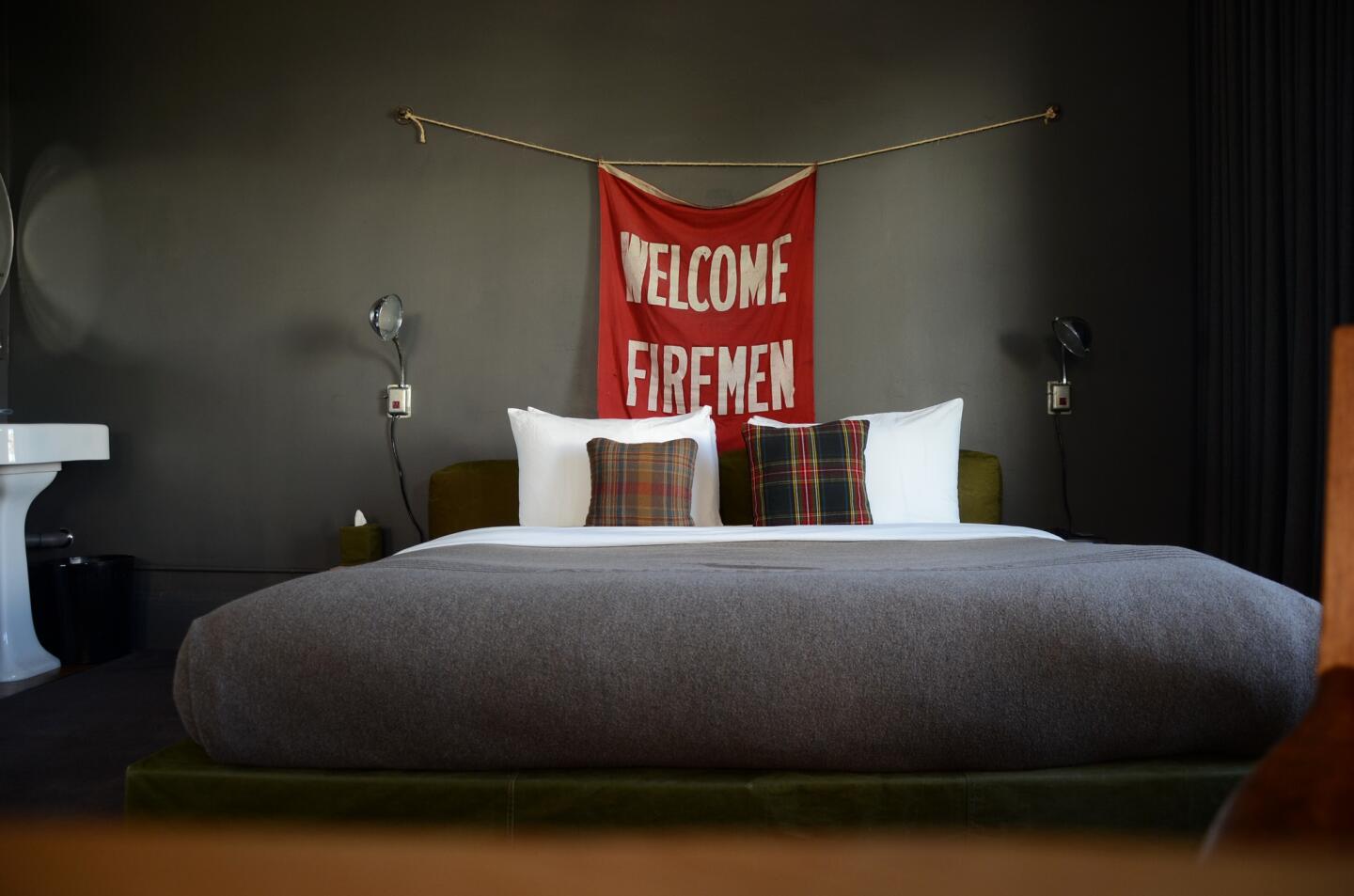
Why does this hotel room amuse me so much? It’s the Ace Hotel, always eager to be edgy, in downtown Portland.
Read more: Portland’s quirky comeback kid (Christopher Reynolds / Los Angeles Times)
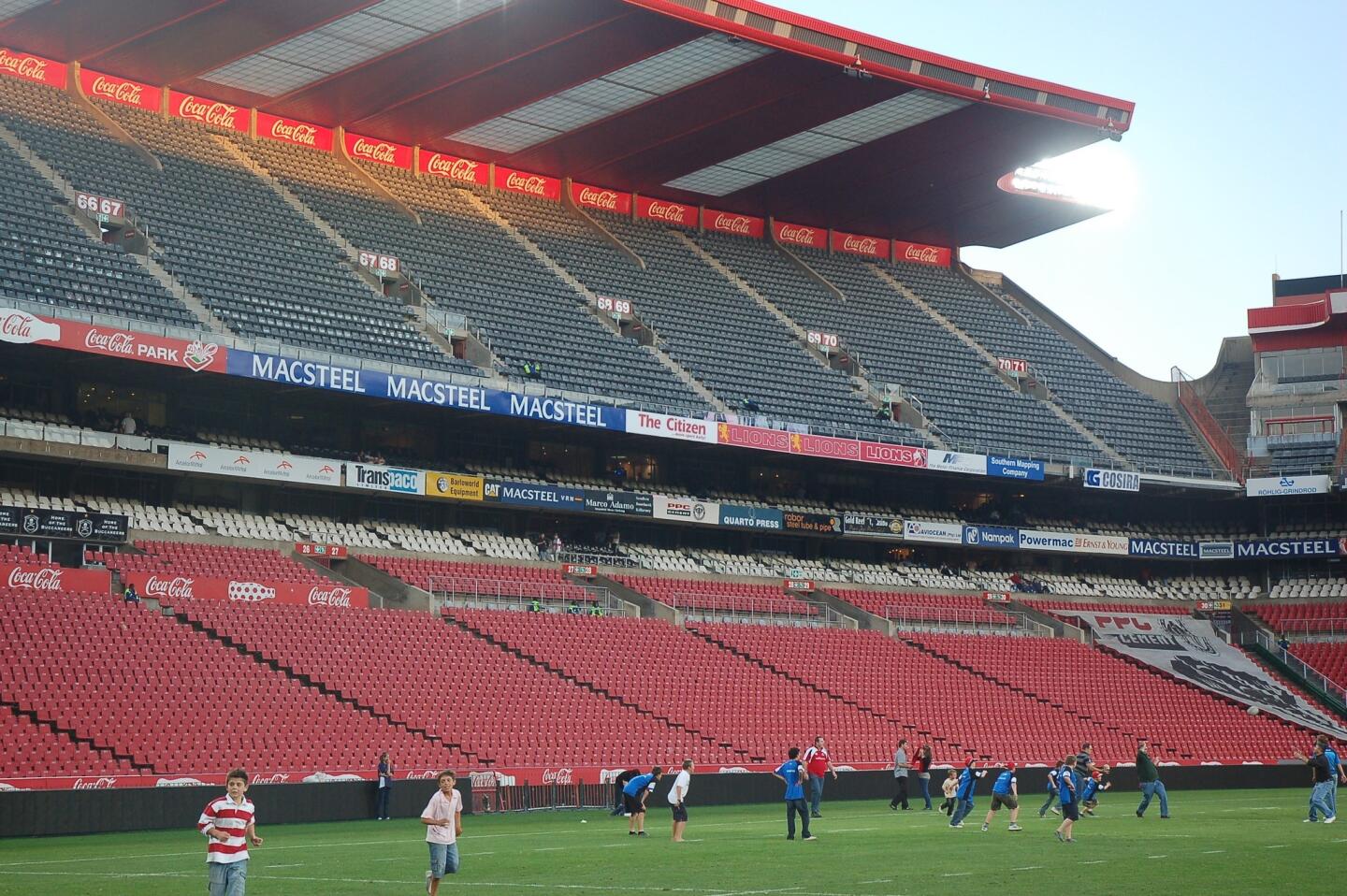
This is Ellis Park Stadium, the Johannesburg rugby venue Nelson Mandela visited as South Africa’s president in 1995, startling and inspiring millions of South Africans (and sparking, years later, the film “Invictus”). I showed up one day in early 2010, found the stadium open in the aftermath of some community event, and strolled right out onto the grass. Today I’m picturing those seats all full again.
Read more: South Africa: On the ball between matches (Christopher Reynolds / Los Angeles Times)
Advertisement
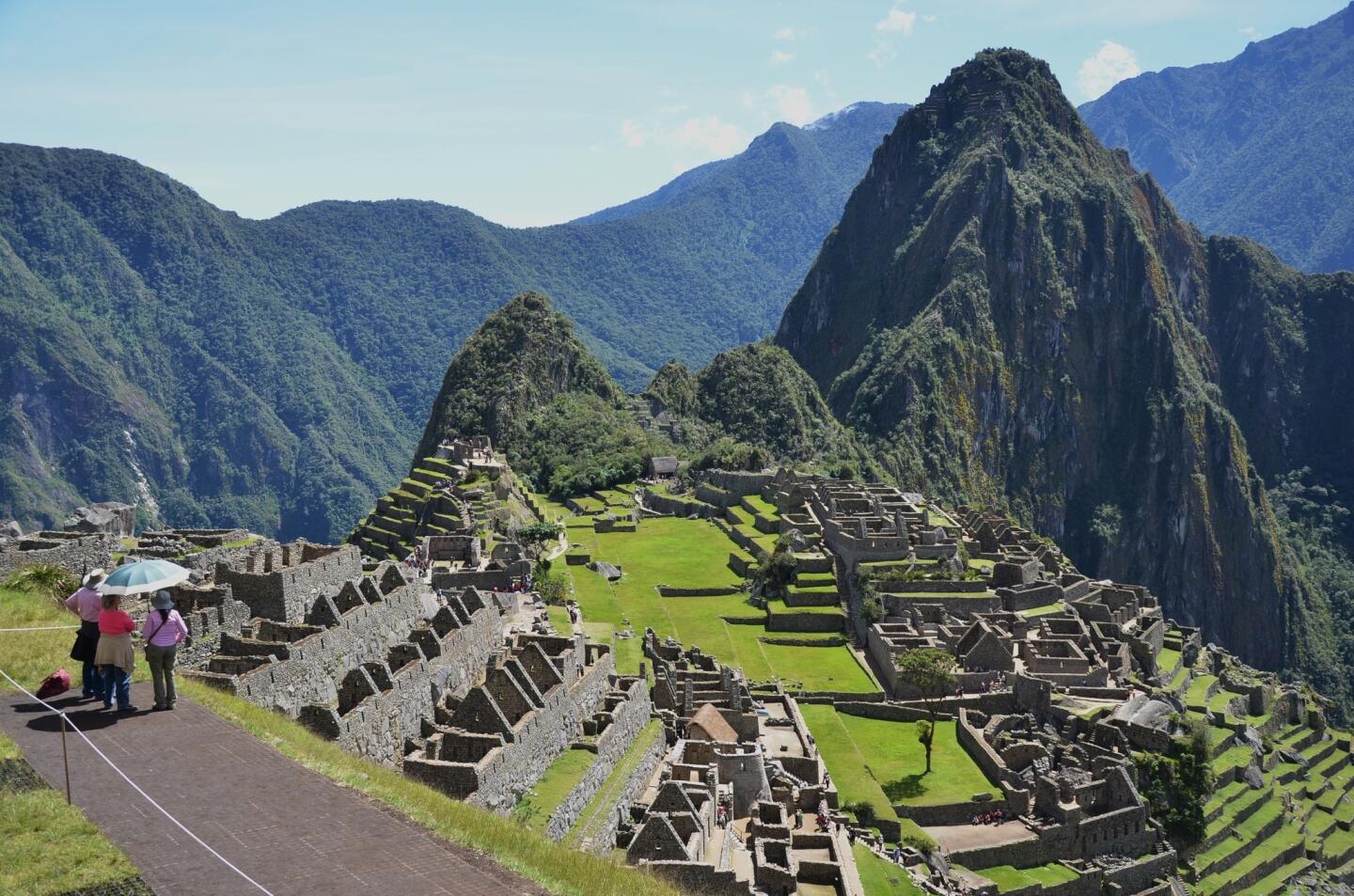
Here’s something you rarely see: a nearly cloudless day at Machu Picchu in south central Peru and only a handful of people in the frame enjoying it. (Clouds and crowds generally predominate.) The Incas somehow put up about 200 stone buildings on the mountaintop site, which dates to the 15th century. (Christopher Reynolds / Los Angeles Times)
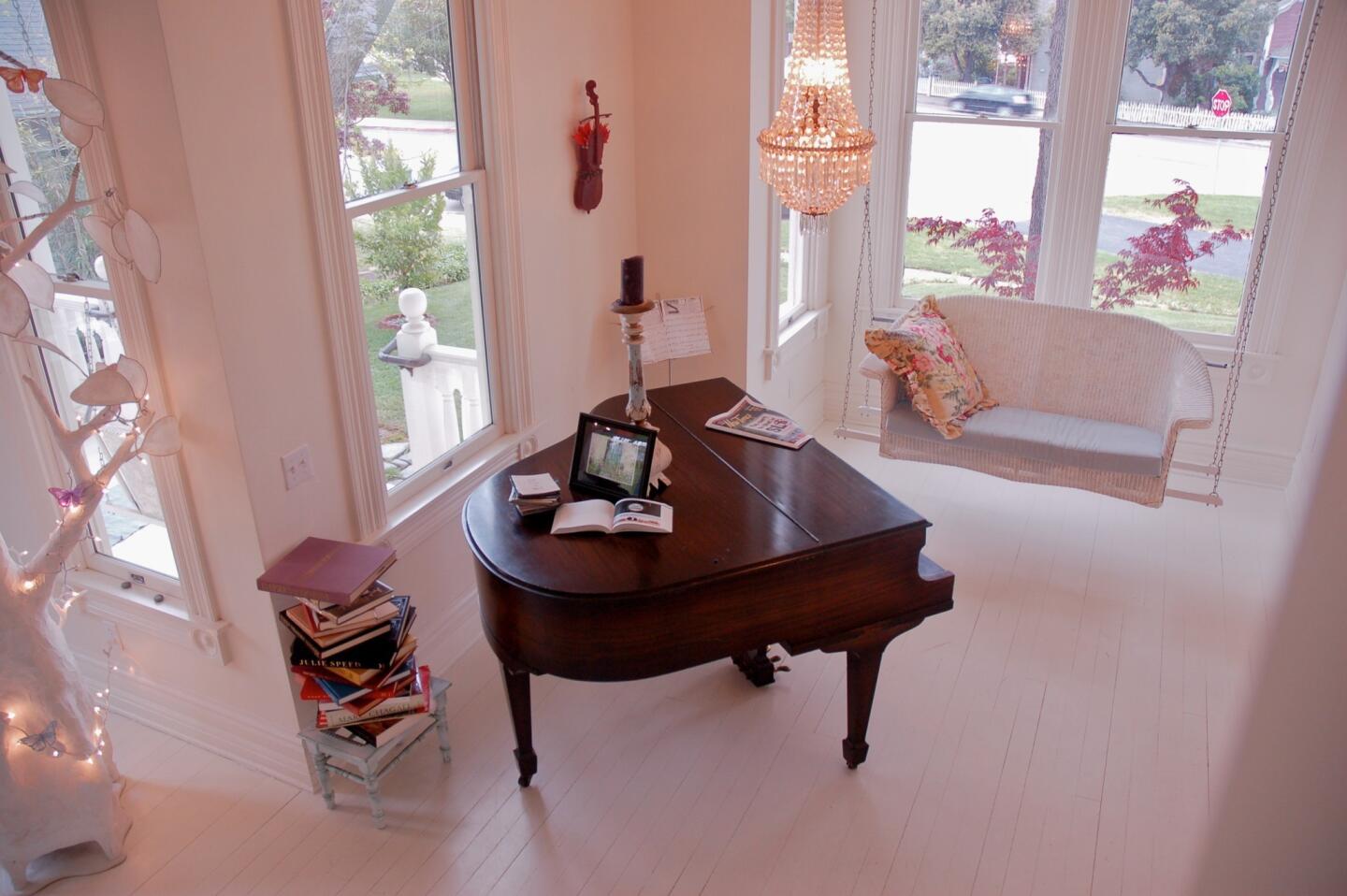
This is the Sanitarium, a historic building on Osos Street in San Luis Obispo, Calif. It was constructed in the 1880s as a haven for patients recuperating from surgery and non-communicable diseases. By 2007, when I visited, it had been converted into a seven-room guest house/B&B. It later closed. In late 2013, city officials were weighing a proposal to convert it to a sorority house. (Christopher Reynolds / Los Angeles Times)
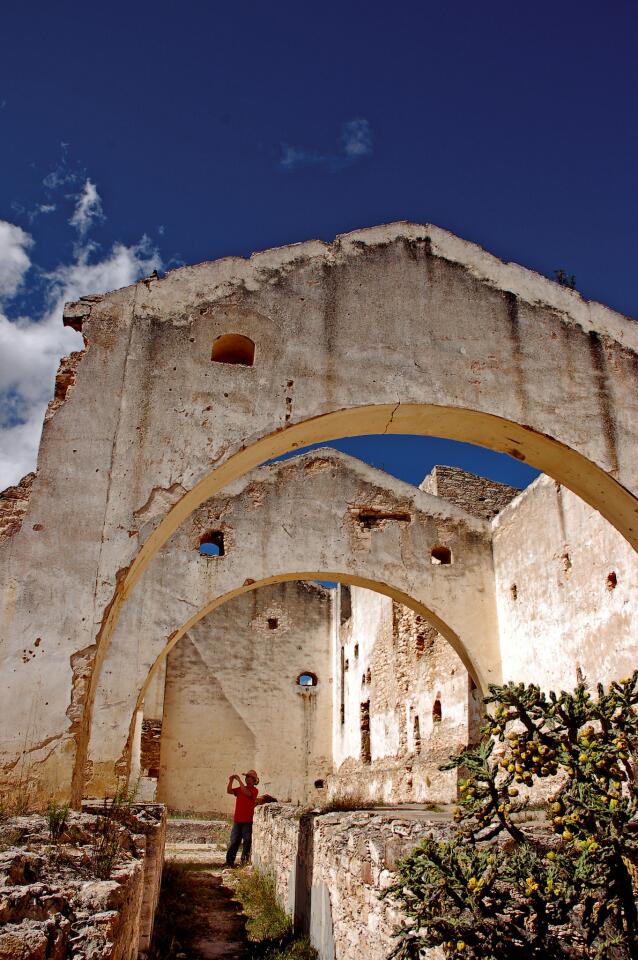
The Cinco Senores mine, now a ruin, was once a top employer in the town of Pozos, near San Miguel de Allende. Photo taken in 2008. (Christopher Reynolds / Los Angeles Times)
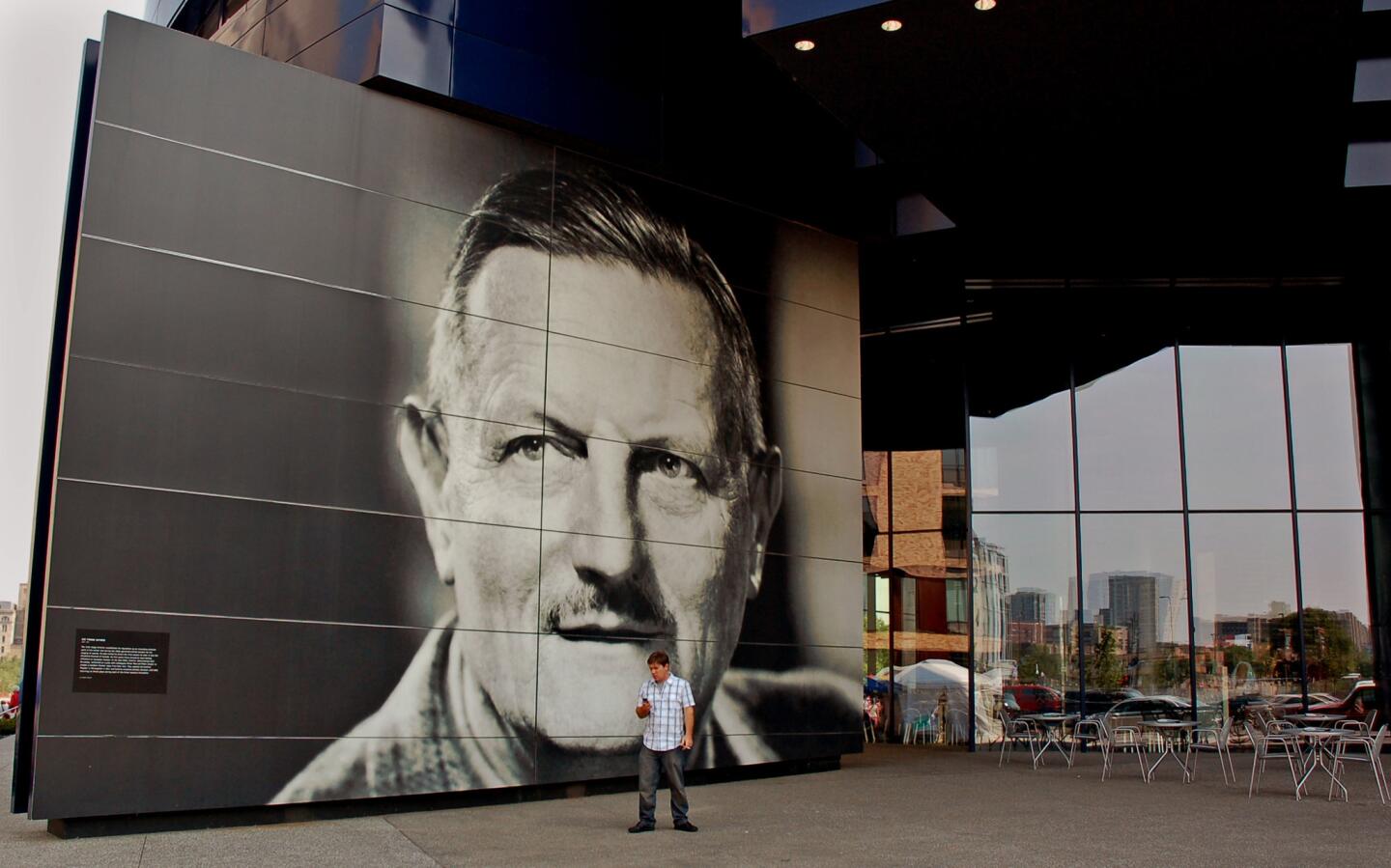
The Guthrie Theater, on the banks of the Mississippi in Minneapolis, features oversized portraits of theater people -- from Anton Chekhov to local theater founder Tyrone Guthrie (shown here). French architect Jean Nouvel designed this 2006 building. For me, it tiptoes along the line between oppressive and playful. Photo shot in 2008.
Read more: Minnesota’s Grand Old Party (Christopher Reynolds / Los Angeles Times)
Advertisement
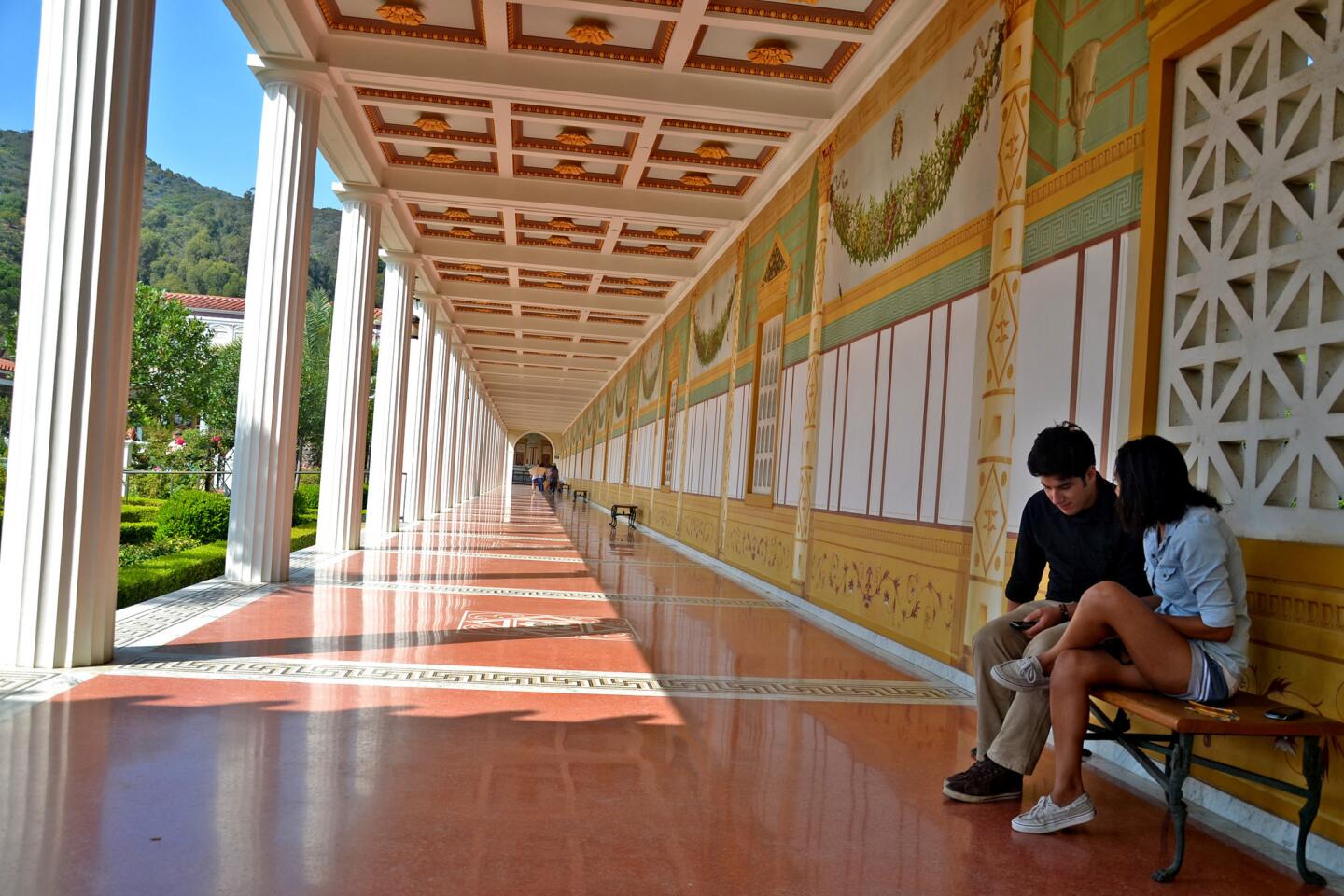
The Getty Villa, in Pacific Palisades near the Malibu border, features ancient artworks, immaculate gardens and a series of corridors by a reflecting pool known as the Outer Peristyle -- yet it’s younger than the Beatles. The building complex, designed to mimic an estate that was destroyed when Mt. Vesuvius erupted in 79 A.D., went up in the 1970s. I shot this photo in 2011. (Christopher Reynolds / Los Angeles Times)
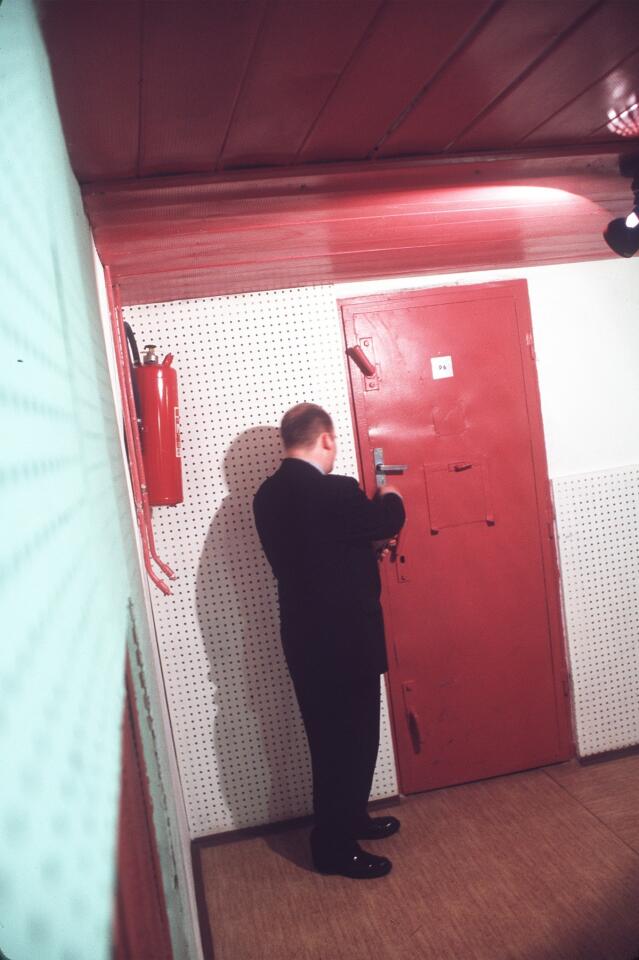
When I visited Prague in 1999, a prison that had once held playwright-turned-president Vaclav Havel had been converted into a hostel. You could sleep in Havel’s old cell, shown here. Since then, the hostel has been converted into a fancier lodging, the Unitas Hotel. (Christopher Reynolds / Los Angeles Times)
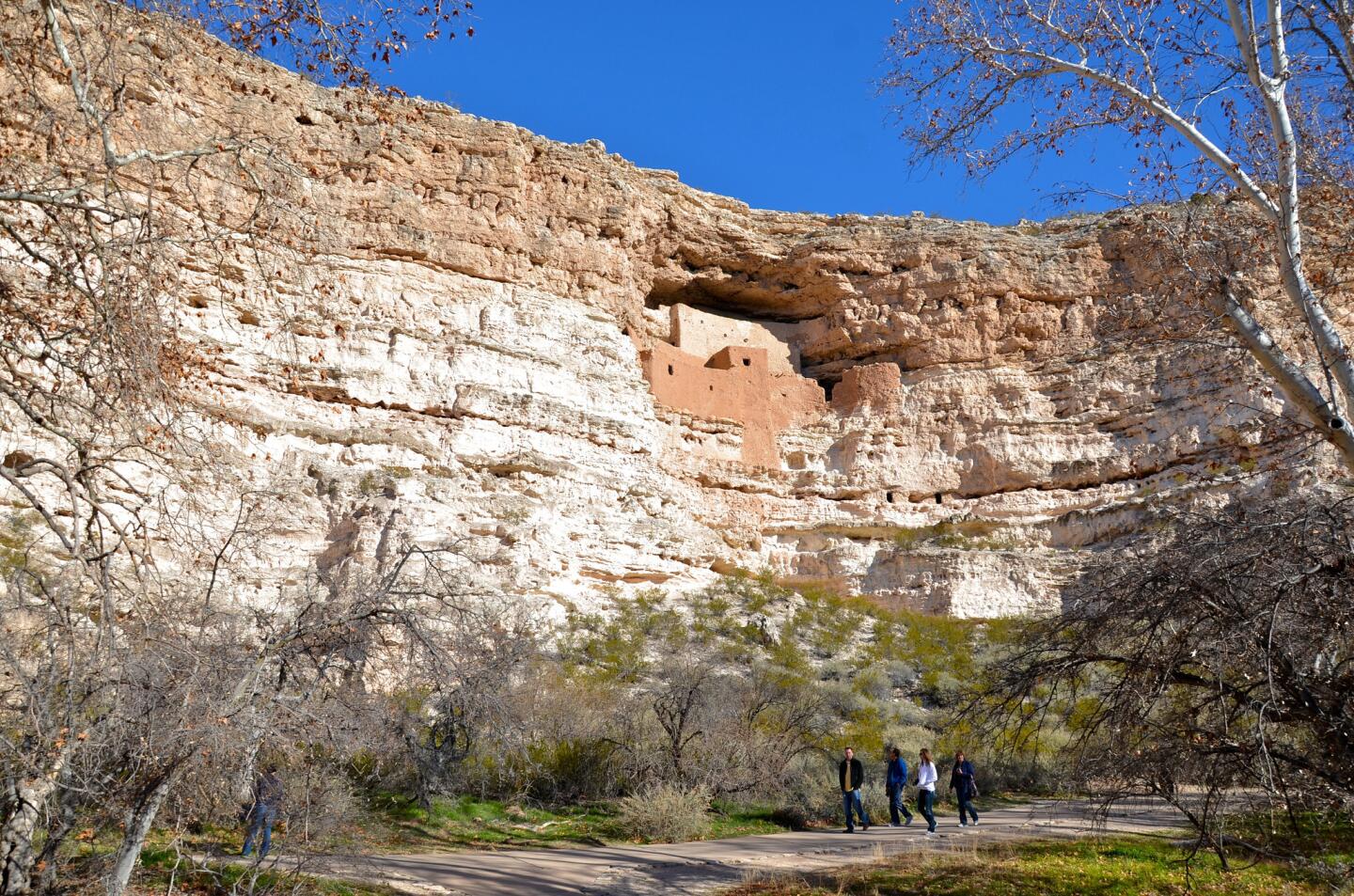
The main attraction at Montezuma Castle National Monument near Camp Verde, Ariz., is a set of cliff dwellings built by the Sinagua people about 800 years ago. Until 1951, the park service placed ladders alongside the structures and let visitors climb and explore inside. (Christopher Reynolds / Los Angeles Times)
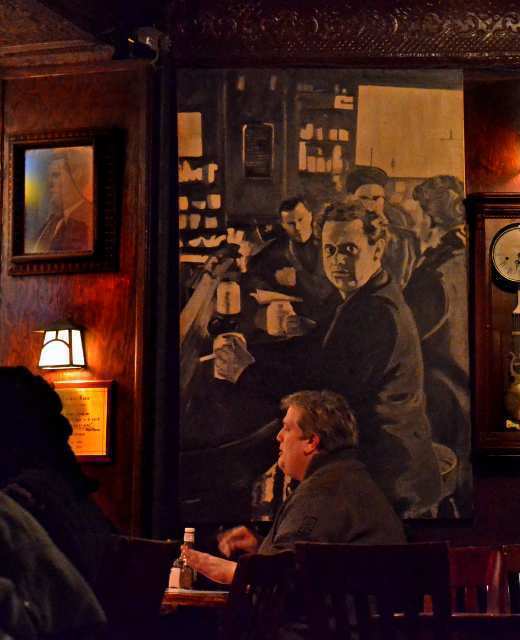
Greenwich Village’s White Horse Tavern, where poet Dylan Thomas spent some of his last hours 60 years ago, endures on Hudson Street near 11th Street. The artwork shows Thomas at the tavern bar. The bar goes back to 1880, and it began as a watering hole for dock workers. Literary types and the beats started showing up in the 1950s. I shot this and had a drink (cash only) in early 2011. If you believe Modern Drunkard magazine, Thomas downed 18 whiskeys here shortly before dying in 1953, at age 39. (Christopher Reynolds / Los Angeles Times)
Advertisement
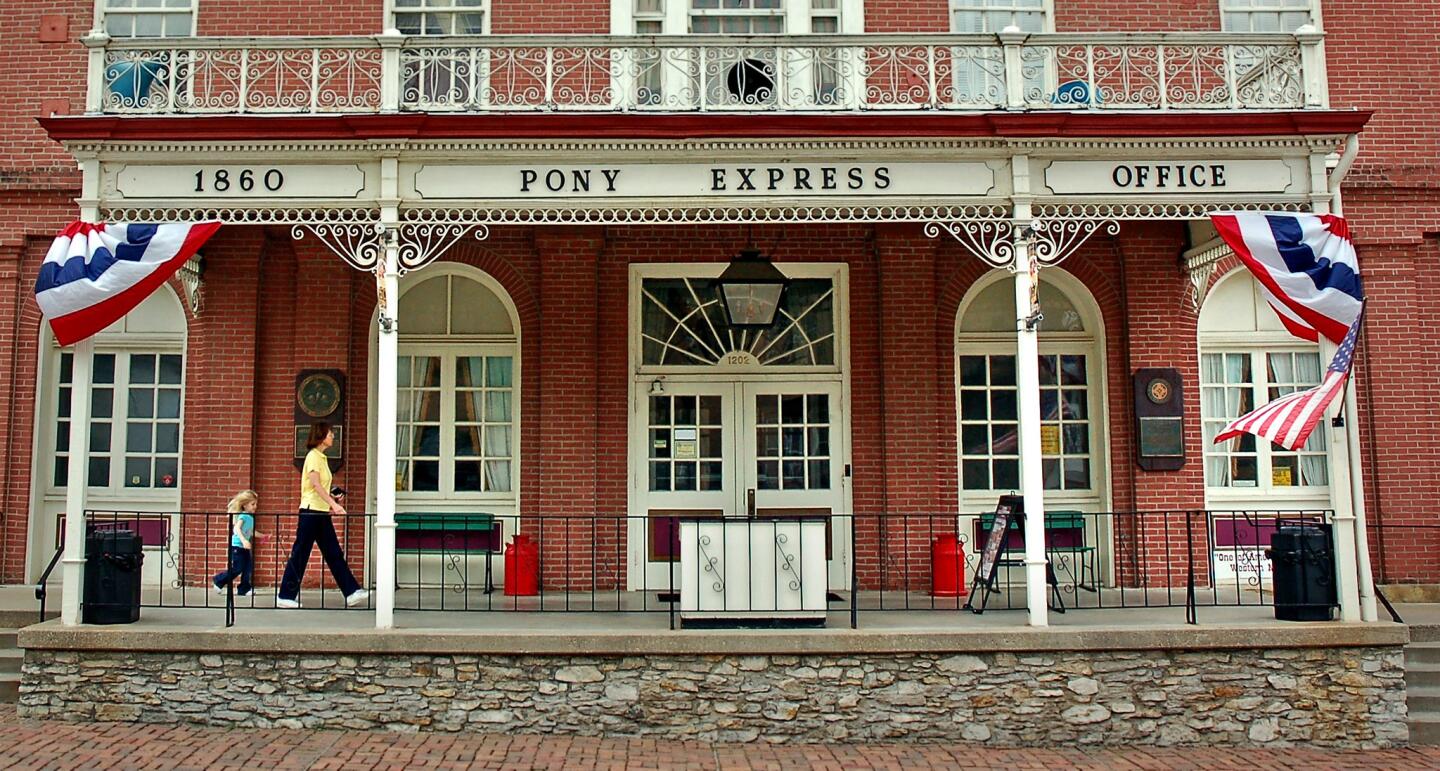
The Patee House, in St. Joseph, once served as headquarters for the Pony Express headquarters and the grandest hotel in town. But nothing about the Pony Express lasted for long -- the service was born in April, 1860, and died in October, 1861. The Patee House is now a museum, so you can stand there on the porch, gaze west toward the Missouri River, and imagine the entire American West as its front yard. Photo shot in 2010.
Read more: On the trail of the Pony Express (Christopher Reynolds / Los Angeles Times)
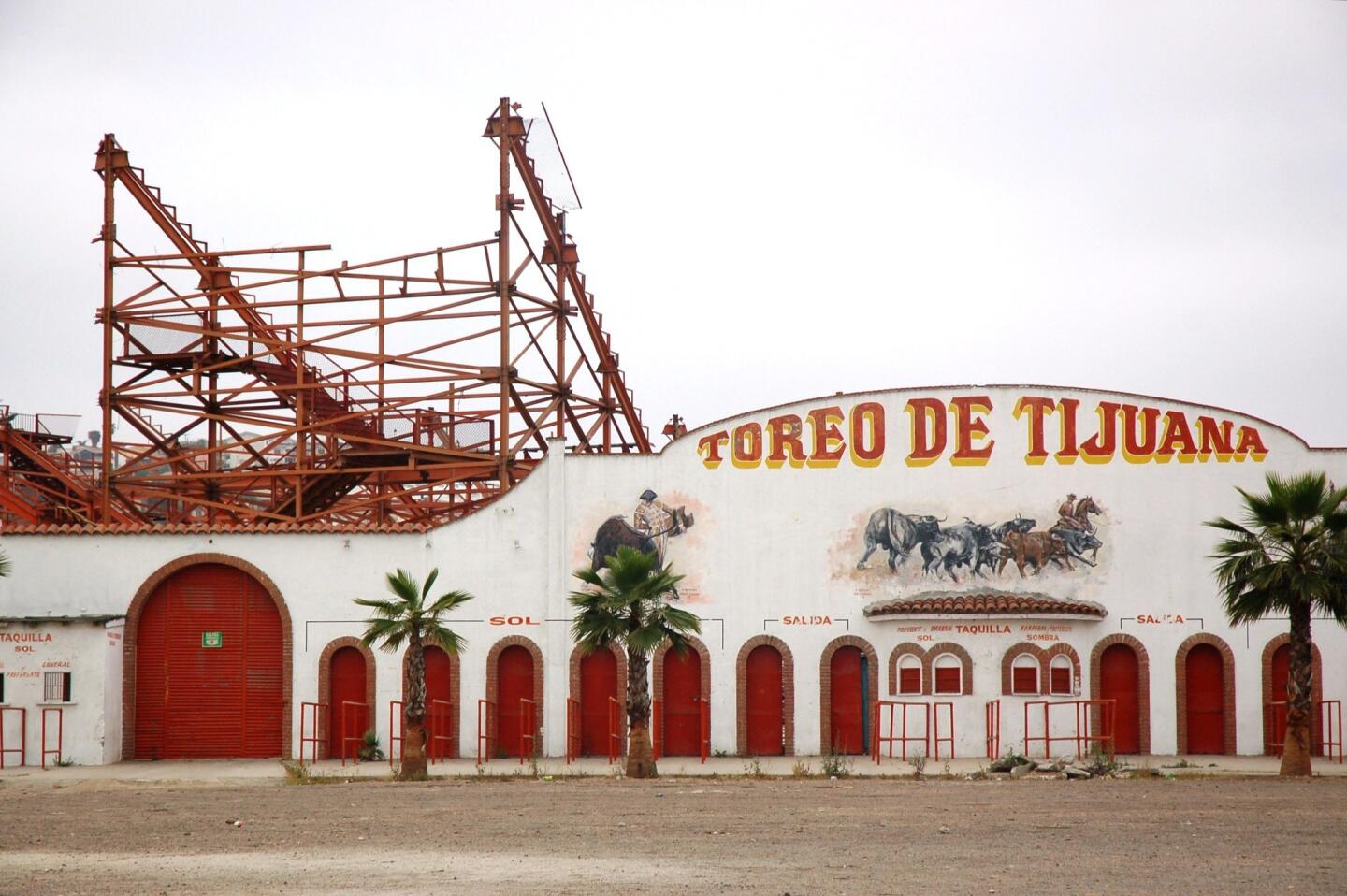
Tijuana still has a bullring by the sea. But this bullring, the other one, which dated to 1938, was already partially demolished when I shot this photo in 2007. It’s all gone now. It’s O.K., I would argue, to hate the sport and still love the venue. (If that’s not O.K., what to do about the Roman Colosseum?) (Christopher Reynolds / Los Angeles Times)
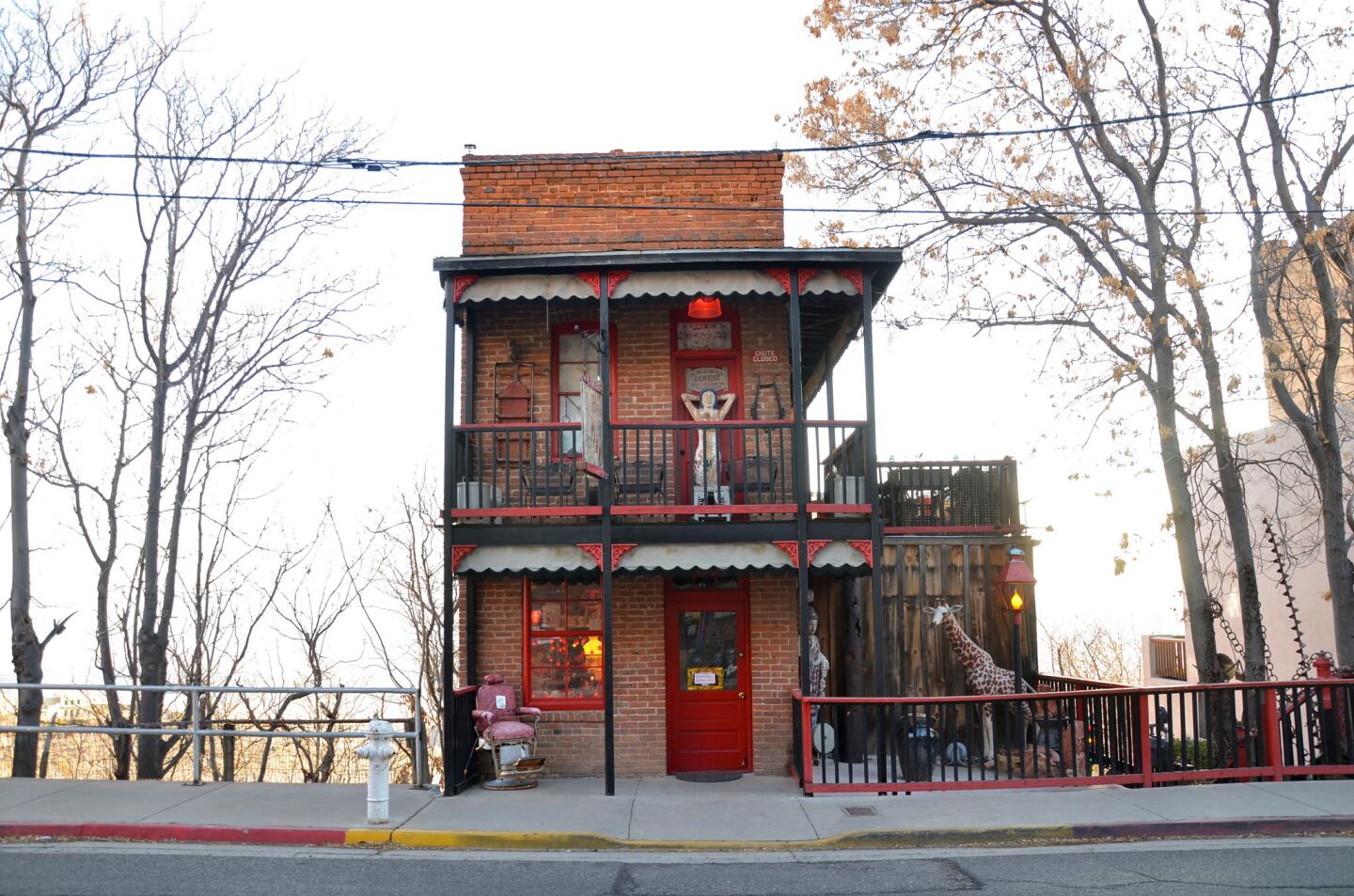
Jerome, an old mining town on a crumbling hillside between Prescott and Flagstaff, has gone artsy. In the bargain, this old home near Main Street has evolved into a live-in gallery. Shot in early 2012. (Christopher Reynolds / Los Angeles Times)
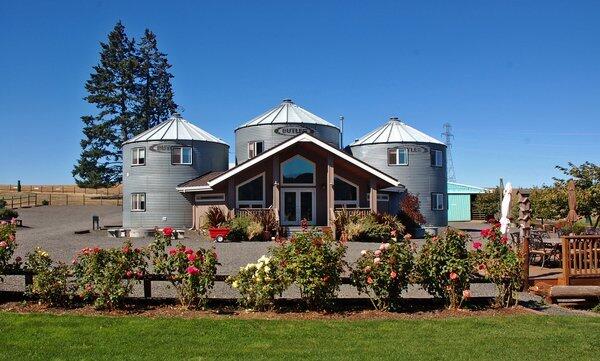
The Abbey Road Farm Bed & Breakfast in the Willamette Valley town of Carlton, includes five suites built into three old grain silos. I haven’t slept there, but I did get a good look in 2008.
Read more: Willamette Valley, Ore.: Sip. Savor. Repeat. (Christopher Reynolds / Los Angeles Times)
Advertisement
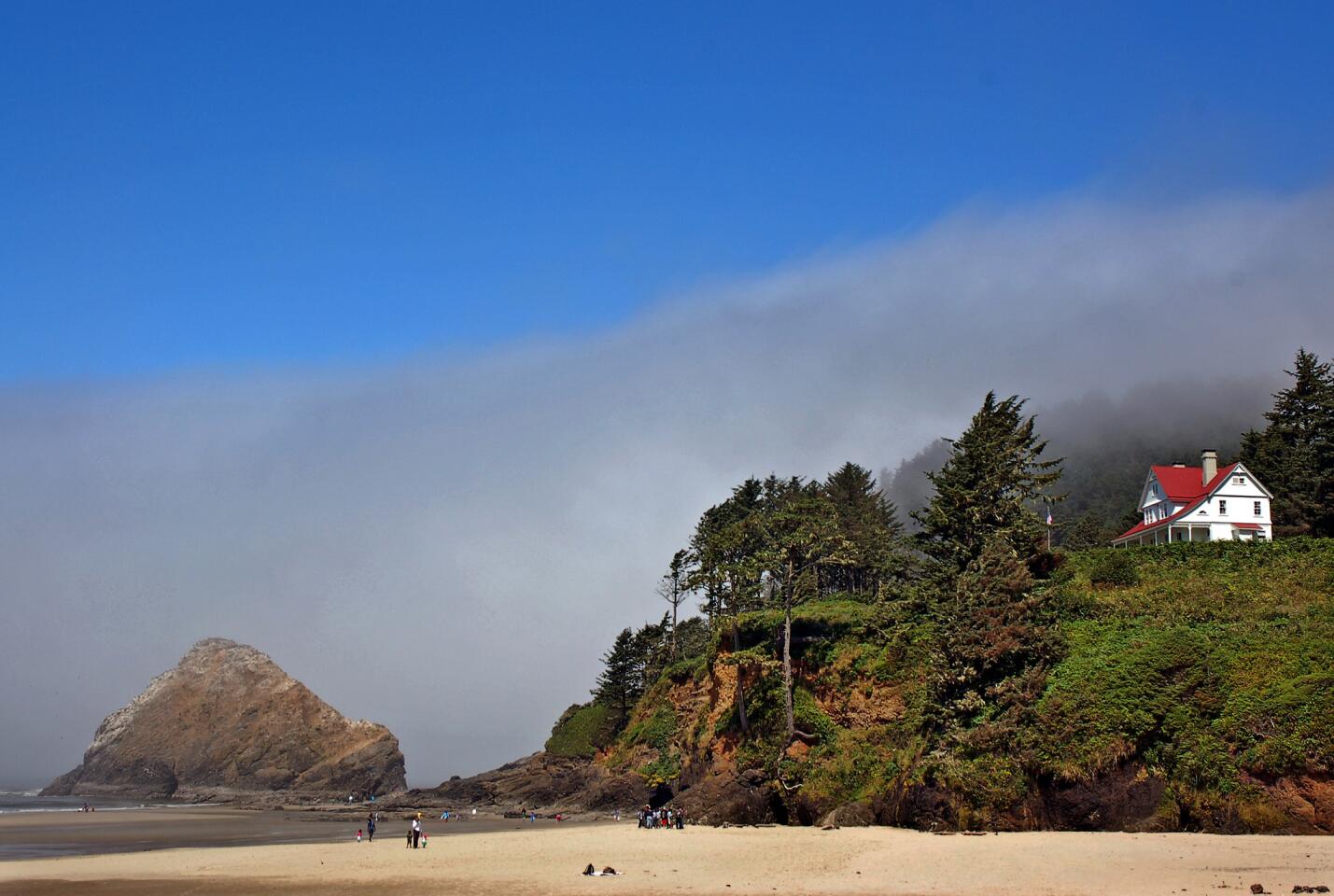
There’s a tree blocking the lighthouse itself, but trust me, this is the Heceta Head Lighthouse Bed & Breakfast, which looks down on a beach north of Florence. When the fog parts, it’s one of my favorite spots on the Oregon coast. Shot in 2009. (Christopher Reynolds / Los Angeles Times)
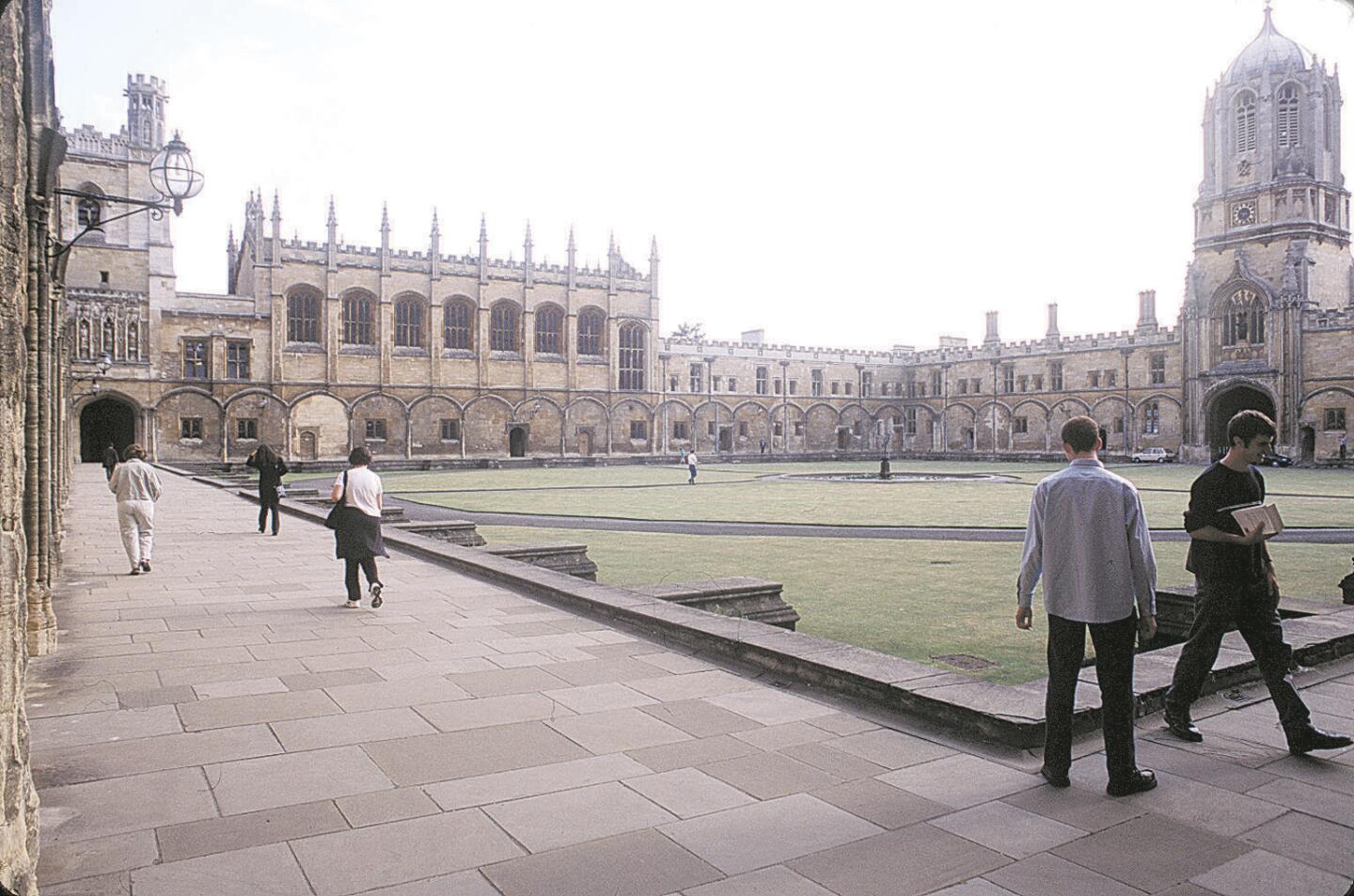
Summertime students prowl the quadrangle of Oxford University’s Christ Church College. Photo taken in 2000.
Read more: England’s venerable oxford, the world’s most famous college town (Christopher Reynolds / Los Angeles Times)
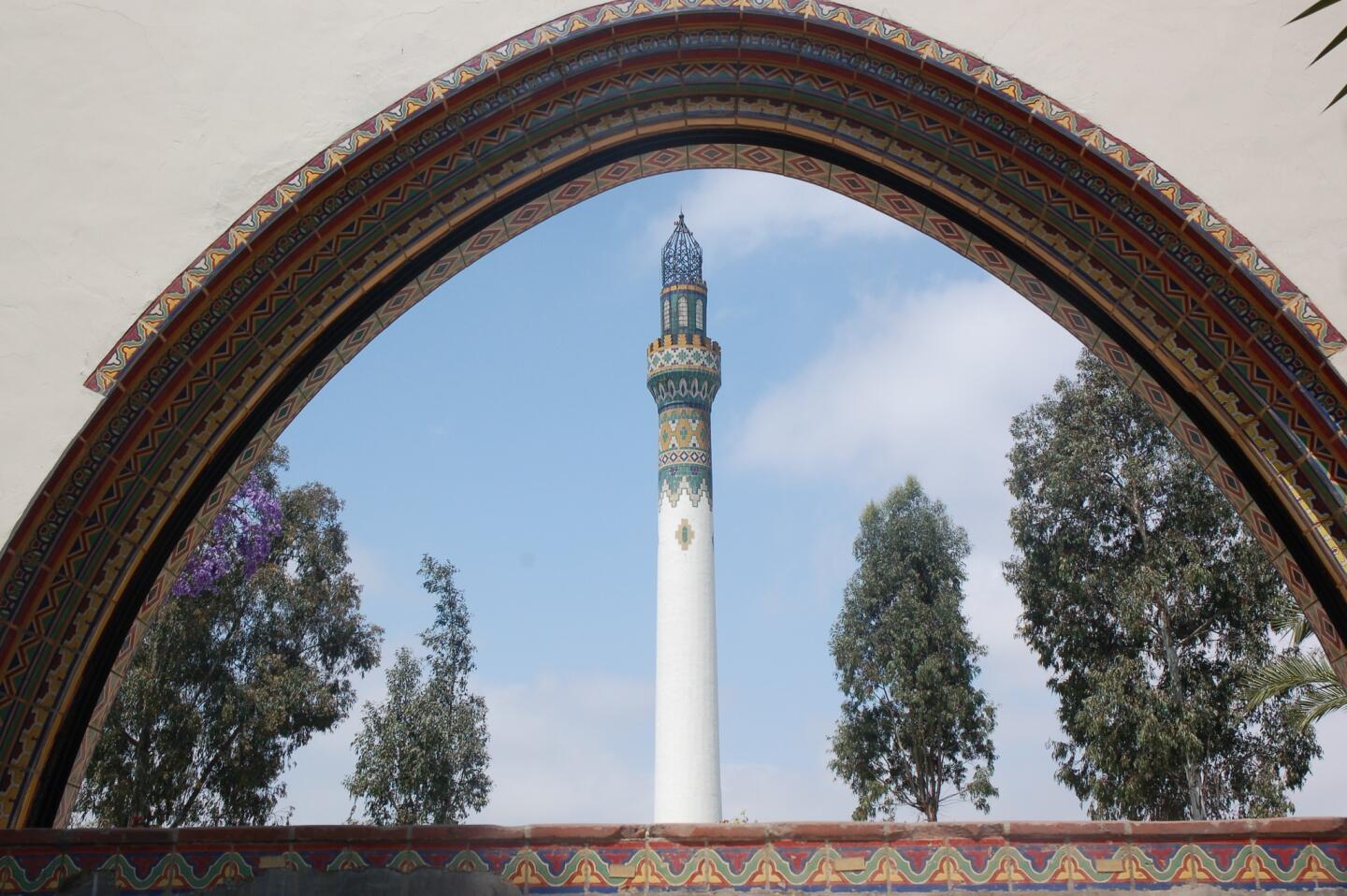
Back in the late 1920s and early ‘30s, the hottest spot in Tijuana -- hot enough to lure many a Hollywood star -- was the Agua Caliente hotel and casino. Its lavish Moorish design included a minaret that was actually a smokestack for burning trash. Nowadays the old Agua Caliente property is a campus that holds several schools, but the minaret still stands. Photo shot in 2007. (Christopher Reynolds / Los Angeles Times)
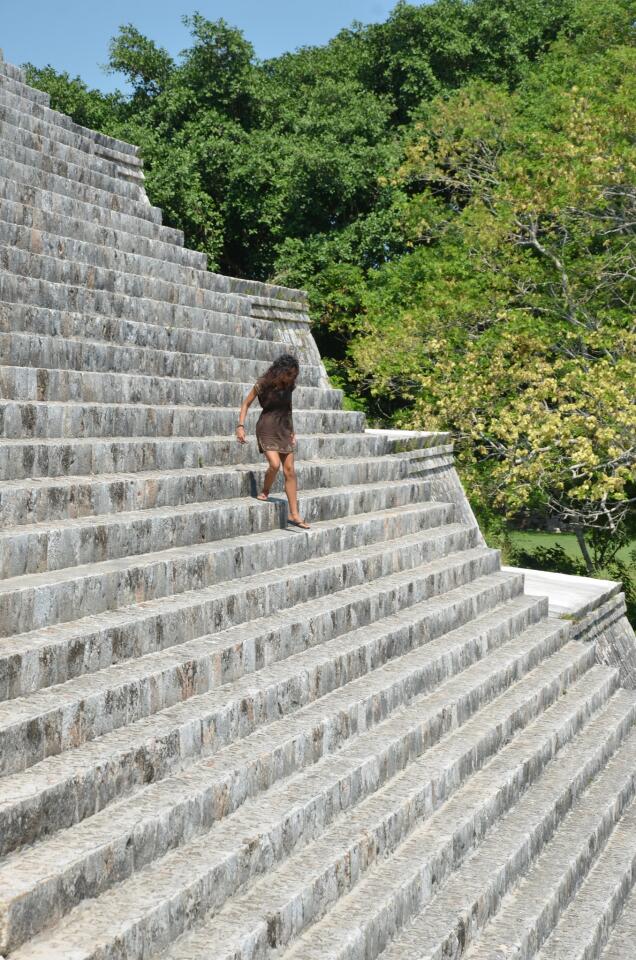
They’re not as famous as Chichen-Itza, but the ruins at Uxmal, in the state of Yucatan, include several startling buildings, many of which are open to climbing -- but dangerously steep. Shot in 2012. (Christopher Reynolds / Los Angeles Times)
Advertisement
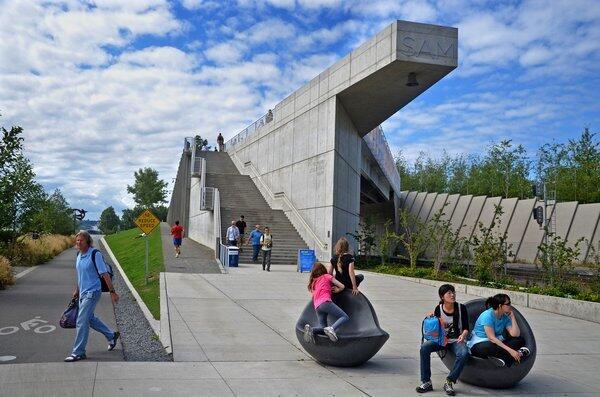
Seattle‘s Olympic Sculpture Park overlooks Puget Sound, defying the rain and daring Seattlites to do some of their art-appreciating outside. The place put a smile on my face -- maybe because of the scale and playfulness of the art, maybe just because I showed up on a day of precious blue skies. Well, mostly blue. (The art park is run by the Seattle Art Museum, which is why the letters SAM are on that slab of concrete. Shot in July 2011.) (Christopher Reynolds / Los Angeles Times)

Back in the old days, the haciendas of Yucatan were a leading global source of henequen, a fiber that makes ropes and twine strong. Nowadays, most of that business has moved offshore and grand old haciendas have fallen apart, been rescued as museums or redone as homes. Back in 2001, when I visited, parts of the Hacienda Ake were still producing henequen and open to the public, including this solemn local boy. (Christopher Reynolds / Los Angeles Times)
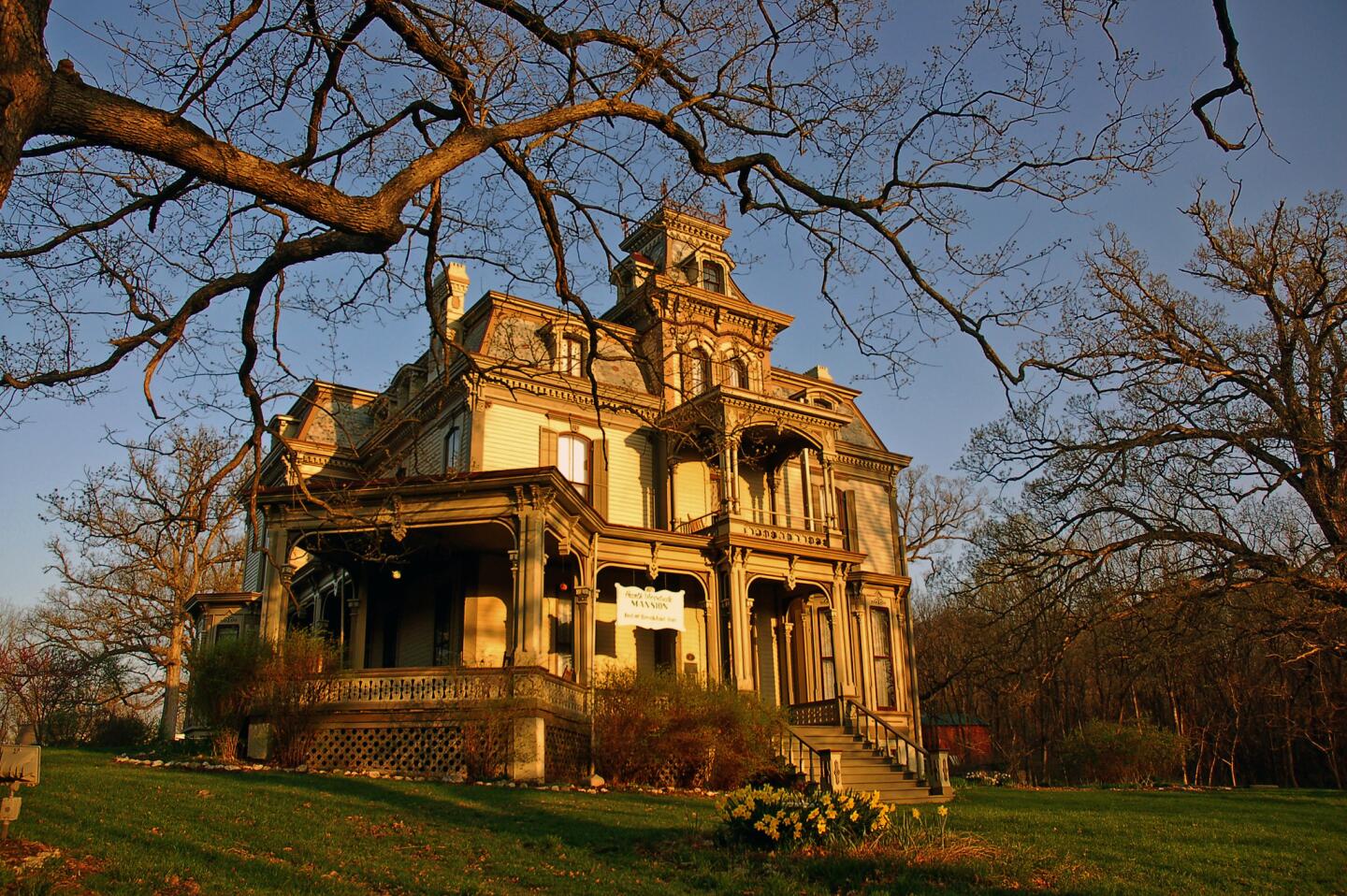
In Hannibal, not far from the Mississippi River, the Garth Woodside Mansion Bed & Breakfast, a three-story 19th century building, housed Mark Twain on a visit to his old hometown in the late 19th century. Shot in 2010. (Christopher Reynolds / Los Angeles Times)
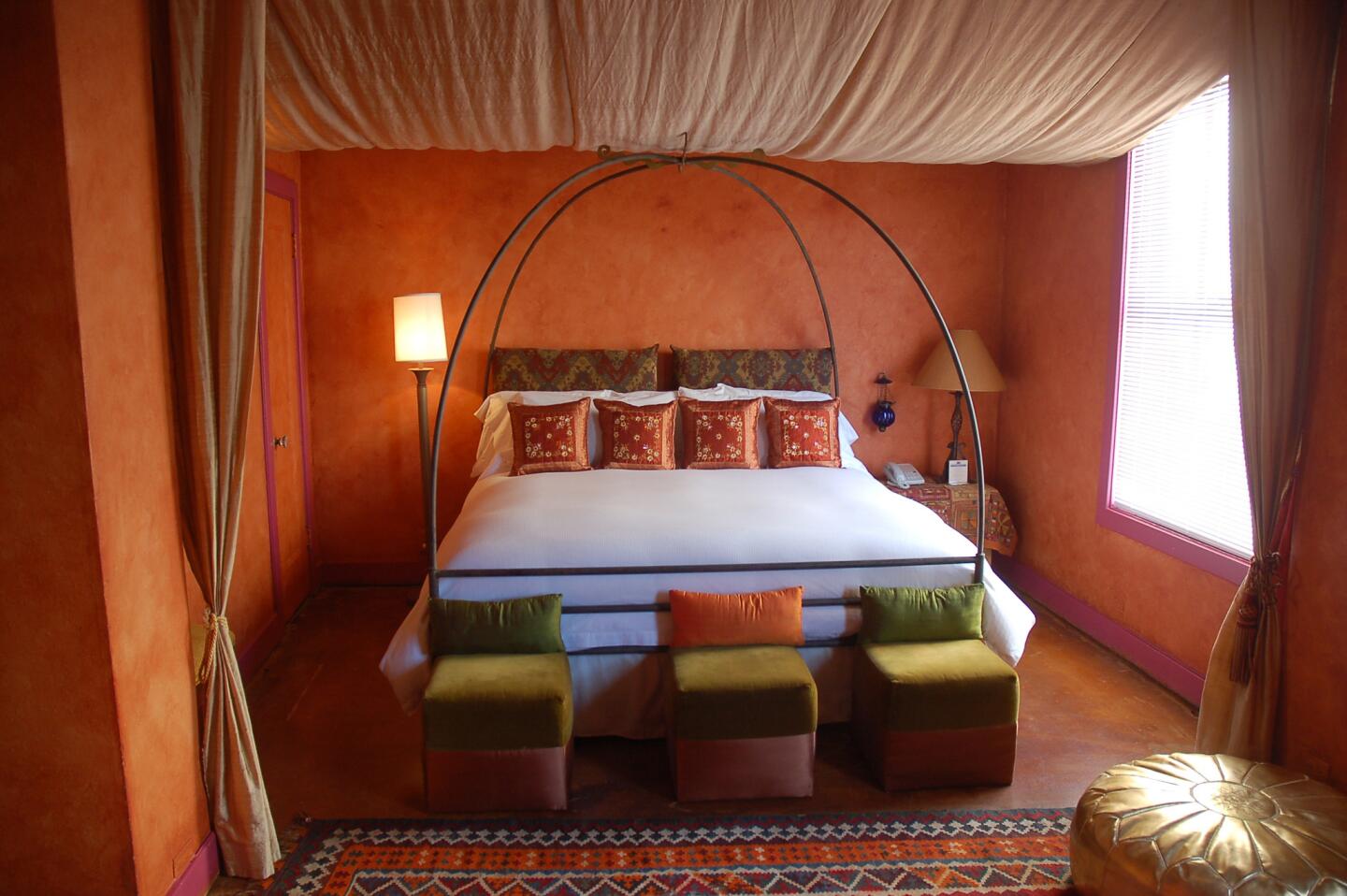
The Figueroa Hotel has been a free-spirited fixture in downtown Los Angeles for decades, cheaper and quirkier than most of its globally branded competitors. (Nice patio bar, too.) The Moroccan theme extends into its boldly colored guest rooms. Shot in 2010. (Christopher Reynolds / Los Angeles Times)
Advertisement
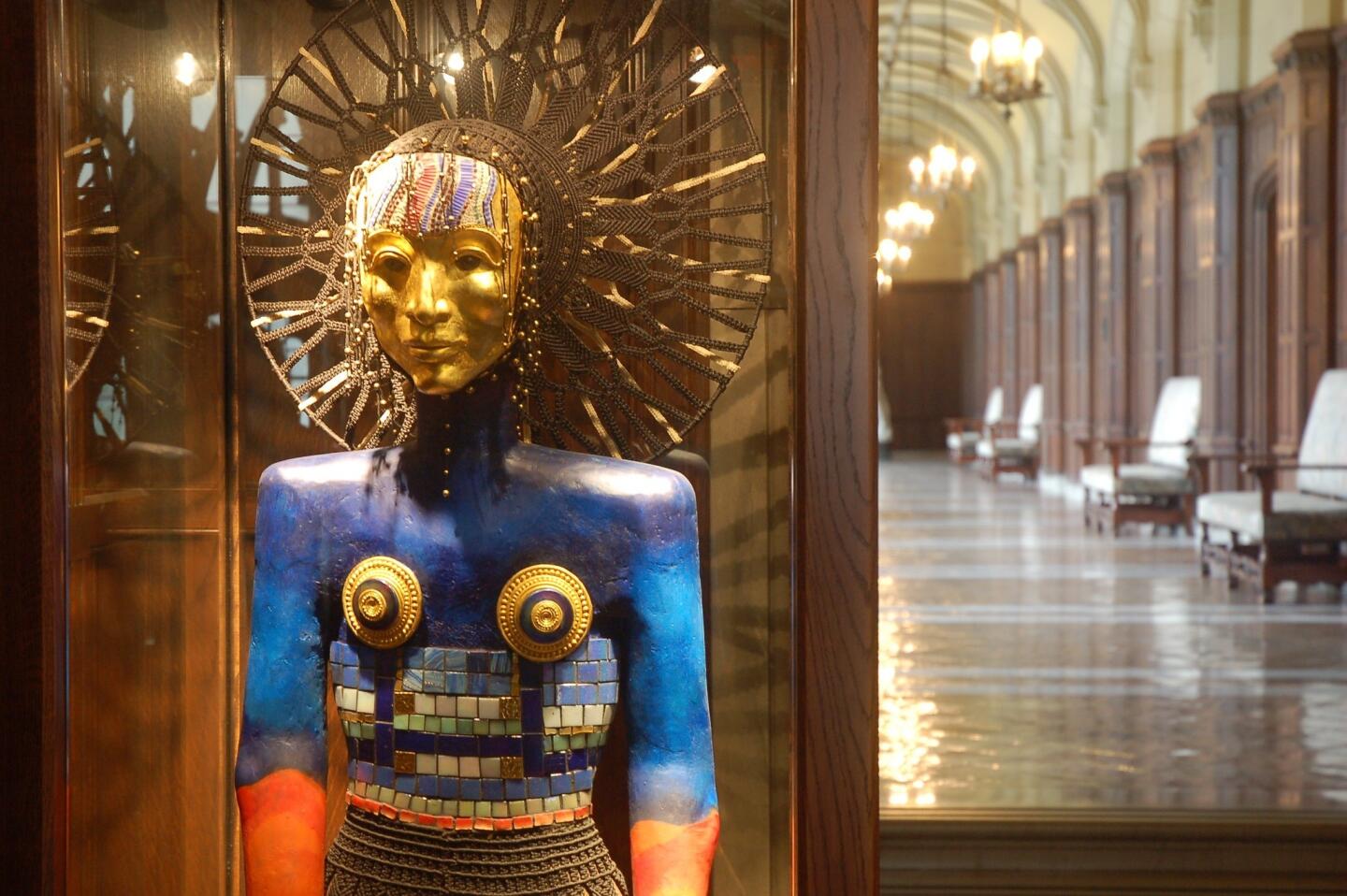
The Martha Cook Building is an all-female residence hall at the University of Michigan in Ann Arbor. The building dates to 1915 and its rules are traditional, including a limited number of hours for “male visitation.” But on entering, the first female you meet is this not-so-traditional one. Photo shot in 2010. (Christopher Reynolds / Los Angeles Times)
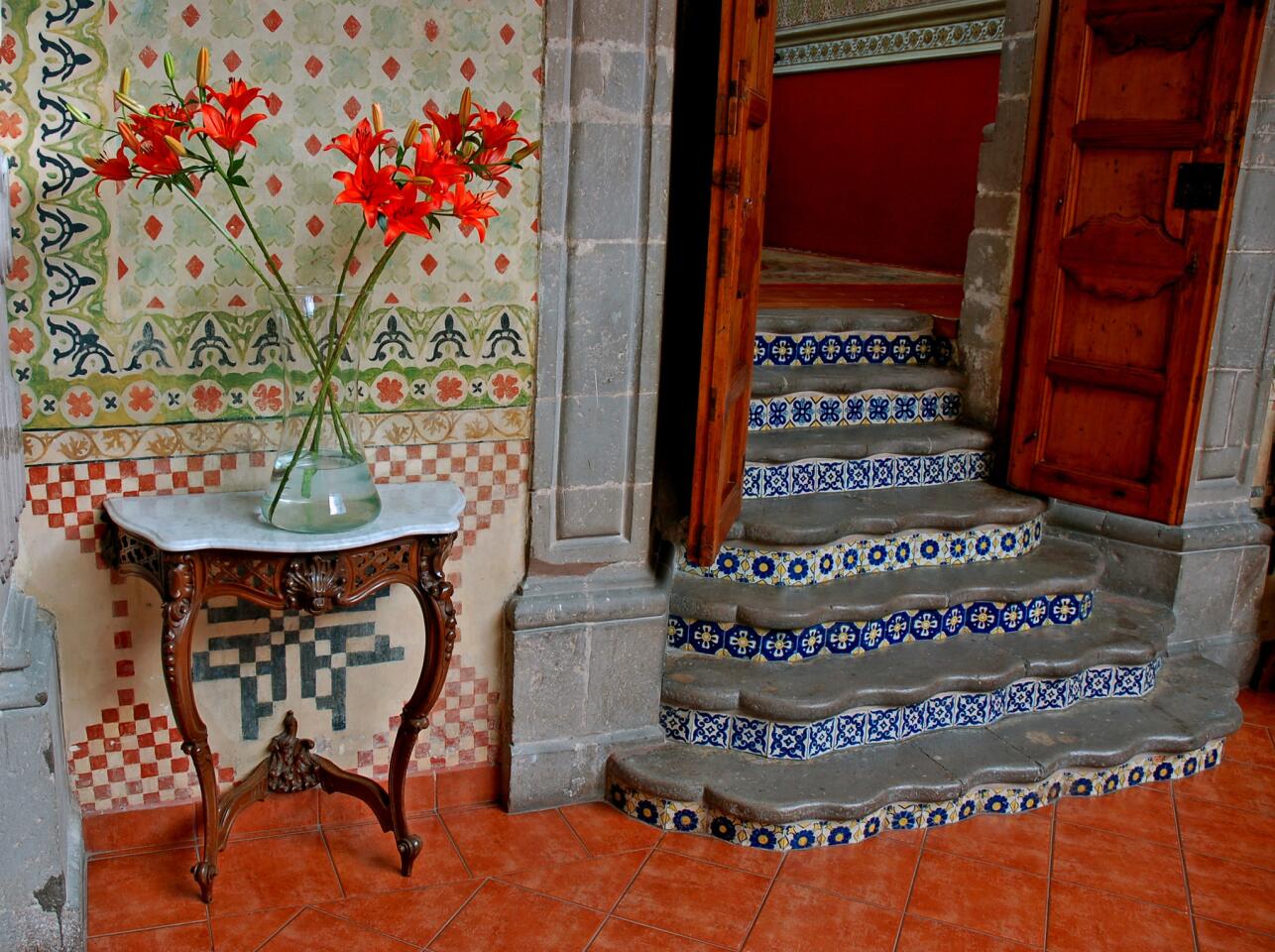
I went to Queretaro, in the central state of Guanajuato, in 2008. Nearly every inch of the 18th century Casa de la Marquesa, a downtown mansion-turned-hotel, has been elaborately stenciled or tiled. The ceilings are high and mystery hangs in the air. Eventually, somebody will have to set a detective story here. Until then, I’m going to imagine there’s poison in that vase. (Christopher Reynolds / Los Angeles Times)

If you see this face you might start wondering if you’ve gone to Mexican heaven or Mexican hell. It’s closer to the former. The Barrio Cafe, on a hardscrabble block in urban Phoenix, is a great restaurant that does a booming power lunch business. When I ate there in early 2012 its walls and neighboring buildings were covered with murals, including this one. (Christopher Reynolds / Los Angeles Times)
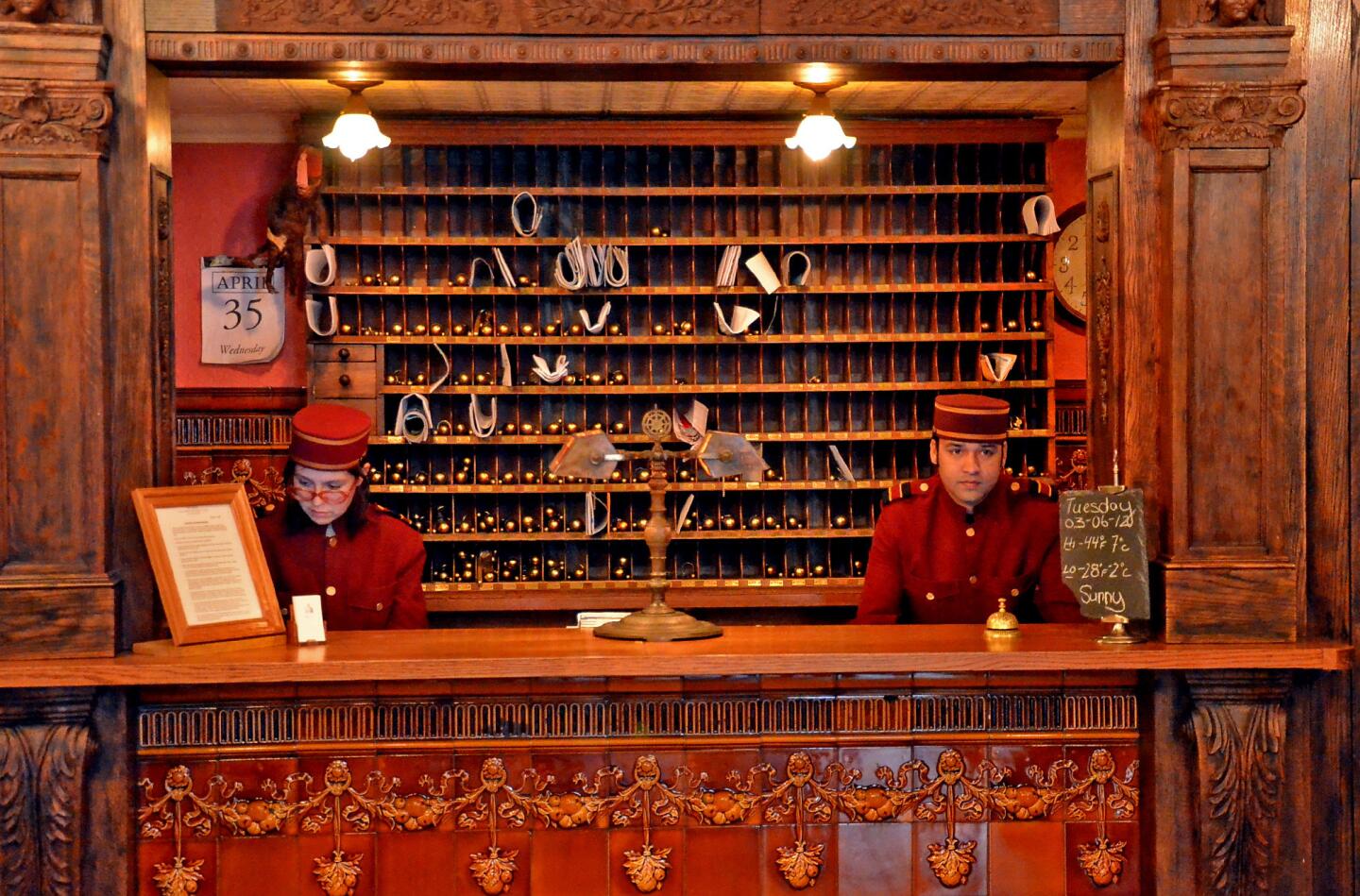
The Jane, a hotel at the westen edge of Manhattan’s Greenwich Village, was once a lodging for seamen, including some Titanic survivors. Its rooms are like ship’s cabins -- so tiny that some were renting for $99 in 2012. The front desk folk dress up in old school attire. But none of that explains why the date seems to be April 35. (Christopher Reynolds / Los Angeles Times)
Advertisement
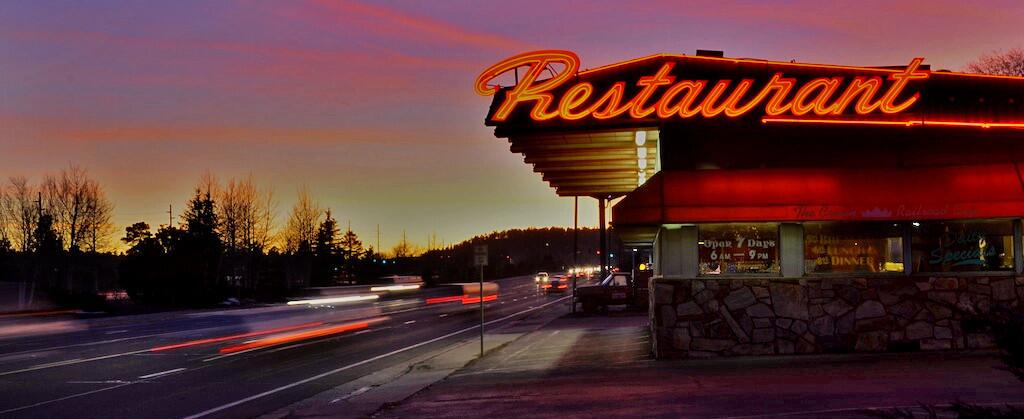
Just east of Flagstaff, the 3400 block of old Route 66 runs past an especially atmospheric set of roadside buildings. One is the log-cabin Museum Club, a rugged live-music venue that goes back to the ‘30s. Another is this coffee shop, the Crown Railroad Cafe. I didn’t eat there (went for beer at the Museum Club instead), but could the food possibly taste as good as the sign looks in the glow of a garish sunset? I doubt it. (Christopher Reynolds / Los Angeles Times)
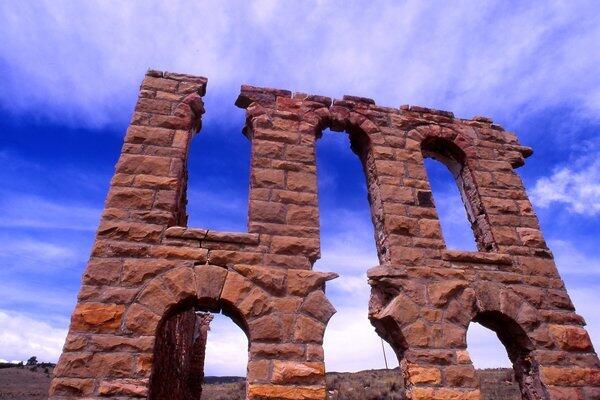
Once, this was the Mutz Hotel in thriving Elizabethtown, N.M. Then the local gold-mining prospects dimmed. By 1917, the town was dead. You can see the ruins near the small but still-living town of Eagle Nest, as I did back in 1996. (Christopher Reynolds / Los Angeles Times)
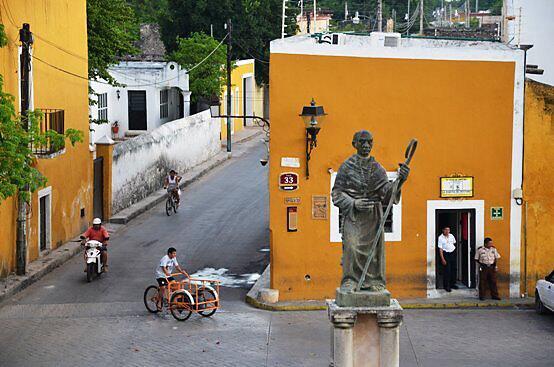
The state of Yucatan might be best known for the ruins of Chichen Itza, but wise travelers know to make time for the nearby town of Izamal. For one thing, it’s got a commanding Franciscan convent, built upon the former site of a hilltop Mayan temple. For another thing, it’s got color: Much of the town is painted yellow, a uniformity that underlines the place’s historic atmosphere. The statuary and narrow cobblestone streets don’t hurt either. (Christopher Reynolds / Los Angeles Times)
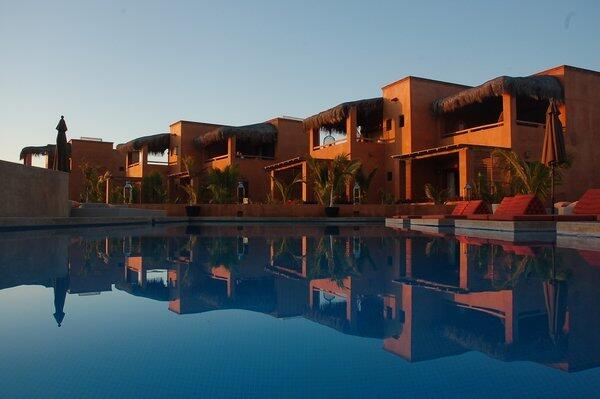
Baja California started as a ragged coast dotted by fishing villages. Then Cabo San Lucas grew into a global sportfishing destination and other pockets of the peninsula (lots of good surf spots) followed. By the time I got to the town of Todos Santos (about 50 miles north of Cabo San Lucas) in 2010 that tiny town, too, was seeing a lot more travelers -- and very comfortable new lodgings, including Rancho Pescadero, on the beach a few miles south of town. It started as 12 guest rooms (some of which are seen reflected in the resort pool here). Now it’s 27 rooms, adults only. (Christopher Reynolds / Los Angeles Times)
Advertisement
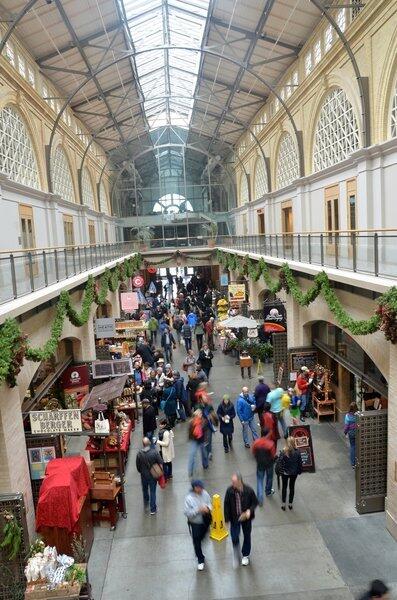
Once -- before there was a Bay Bridge or a Golden Gate Bridge -- San Francisco’s Ferry Building was where legions of commuters rubbed shoulders daily. Now the landmark building (at the foot of Market Street) is a food haven where epicures browse among artisan bakers and butchers, fresh seafood and a popular farmers market. (Christopher Reynolds / Los Angeles Times)
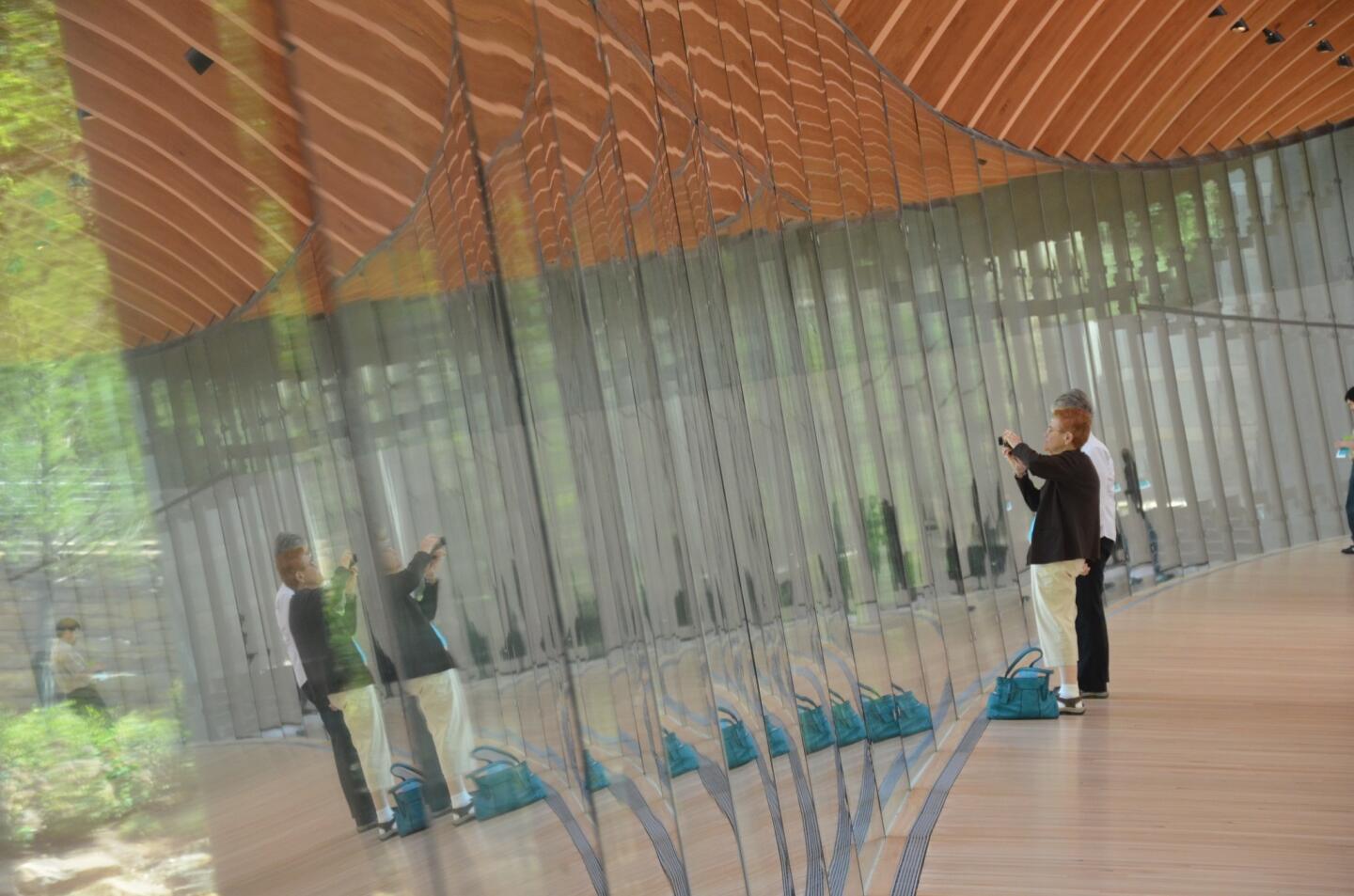
Crystal Bridges Museum of American Art, bankrolled heavily by Wal-Mart’s founding family, opened in late 2011 in Bentonville, Ark., also home to the Wal-Mart headquarters. The museum’s art collection (which has won widespread critical admiration) is sheathed in a curvaceous series of glass-walled buildings by architect Moshe Safdie. I found myself wishing for a few more plain white walls, but plenty of other visitors, including these two, seemed more than happy with the inside-outside connection. (Christopher Reynolds / Los Angeles Times)
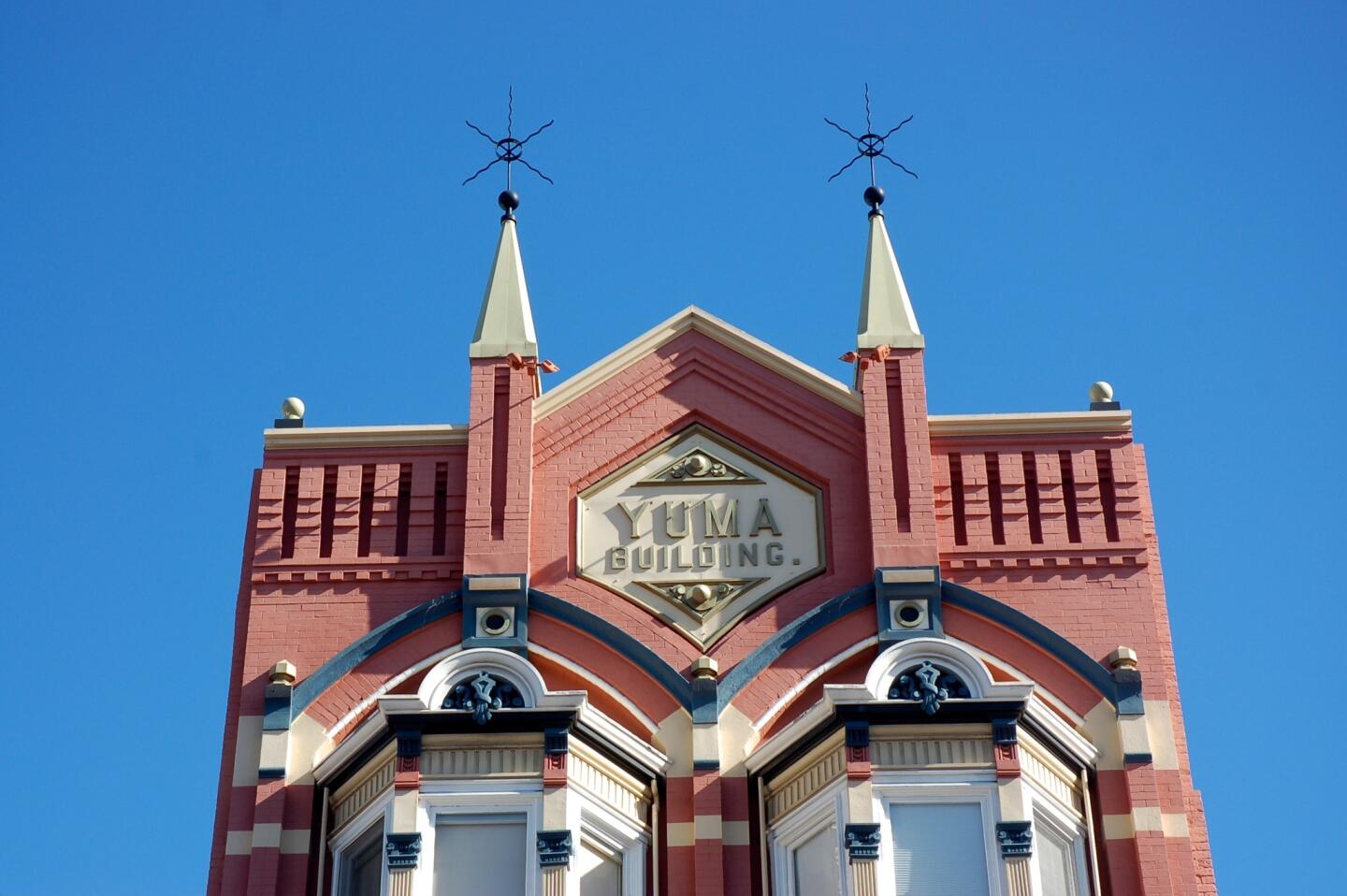
A hundred and one years ago, this downtown neighborhood was known as the Stingaree and the Yuma Building was just one of several thriving brothels. Then came a police crackdown and, much later, redevelopment. Now the striking building on Fifth Avenue stands as a conversation piece and the neighborhood is called the Gaslamp Quarter. As of mid-2013, the property was a vacation rental known as the Gaslamp Townhouse, with rates around $375 nightly. Photo shot in 2010. (Christopher Reynolds / Los Angeles Times)
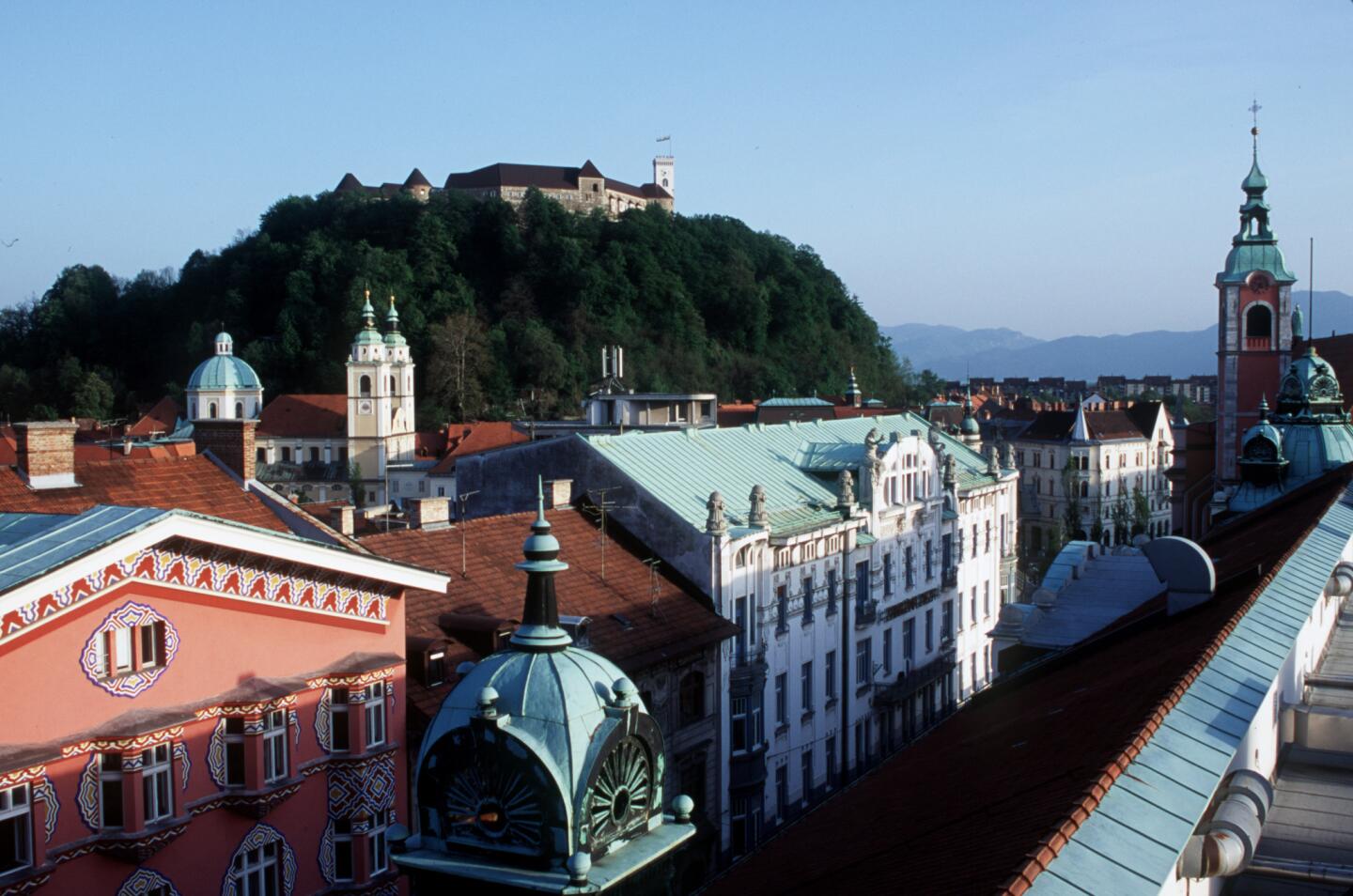
Sorry, no lonely goatherd. Though this fetching cityscape could pass for a piece of Austrian scenery from “The Sound of Music,” it’s not. It’s Ljubljana, Slovenia’s capital, which is one country south of Austria and full of its own cinema-ready architecture. This view is from the Grand Hotel Union, where I stayed in 2000, and that’s the Ljubljana Castle on the hilltop at left. It goes back to the 16th century. (Christopher Reynolds / Los Angeles Times)
Advertisement
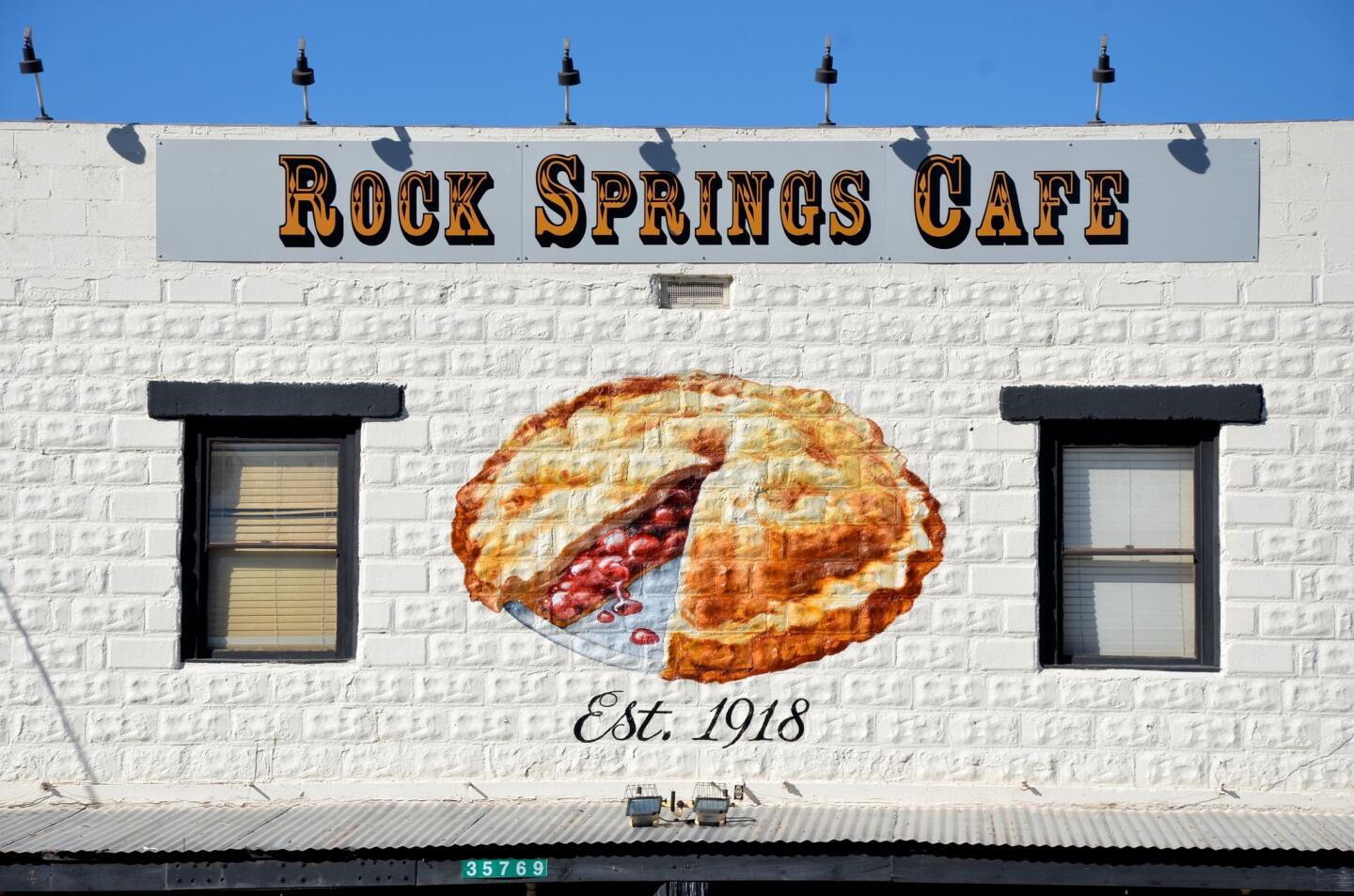
It’s lo mein. OK, it’s not lo mein. The Rock Springs Cafe in Black Canyon City serves 21 kinds of pie.
Read more: 100 cool places in Arizona (Christopher Reynolds / Los Angeles Times)
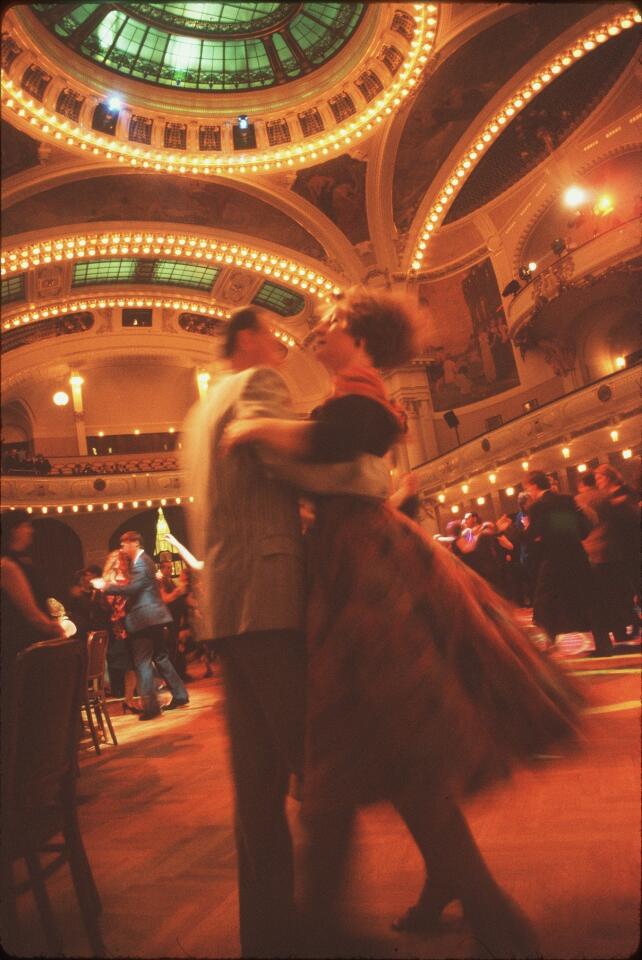
Near the center of the Czech Republic’s capital, on the property where the King of Bohemia made his home 600 years ago, stands Obecni Dum (a.k.a. Municipal House), one of the city’s foremost Art Nouveau landmarks from the early 20th century. On the night I arrived in 1999, a Municipal Ball had just begun and the dance floor was full of waltzing Praguers. (Christopher Reynolds / Los Angeles Times)
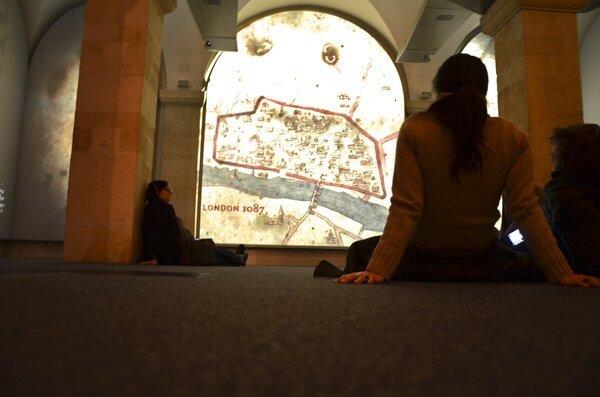
You’ll be tempted to look up in the towering 17th-century St. Paul’s Cathedral. And you should. But then head for the basement, where you can flop on the floor and watch a clever multimedia presentation on the city’s history. Watch for five minutes, or watch for a millennium. (Christopher Reynolds / Los Angeles Times)
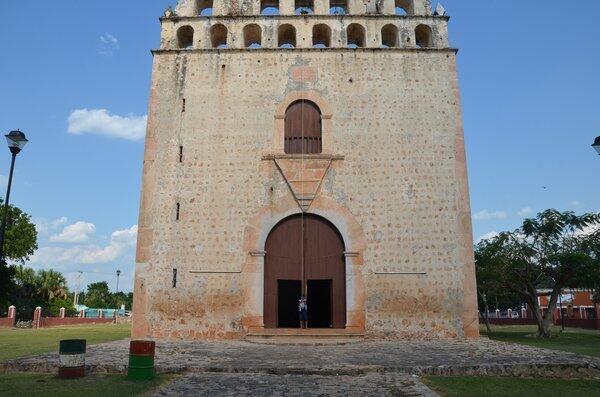
Last year I took a wrong turn in the state of Yucatan, near Tikul. Then another. And then there I was in Yotholin, looking up a great old slab of a church. As I got out of the car to explore, a boy started ringing the church bell, yanking a shiny new rope that was surely still fresh from the hardware store. There’s irony in that: The haciendas of Yucatan used to lead the New World in production of henequen, a key material in rope and burlap. Nowadays, that business has gone offshore and the haciendas are idle or rehabbed into hotels and second homes. But the church and its bell remain, looking and sounding like nothing ever changed. (Christopher Reynolds / Los Angeles Times)
Advertisement
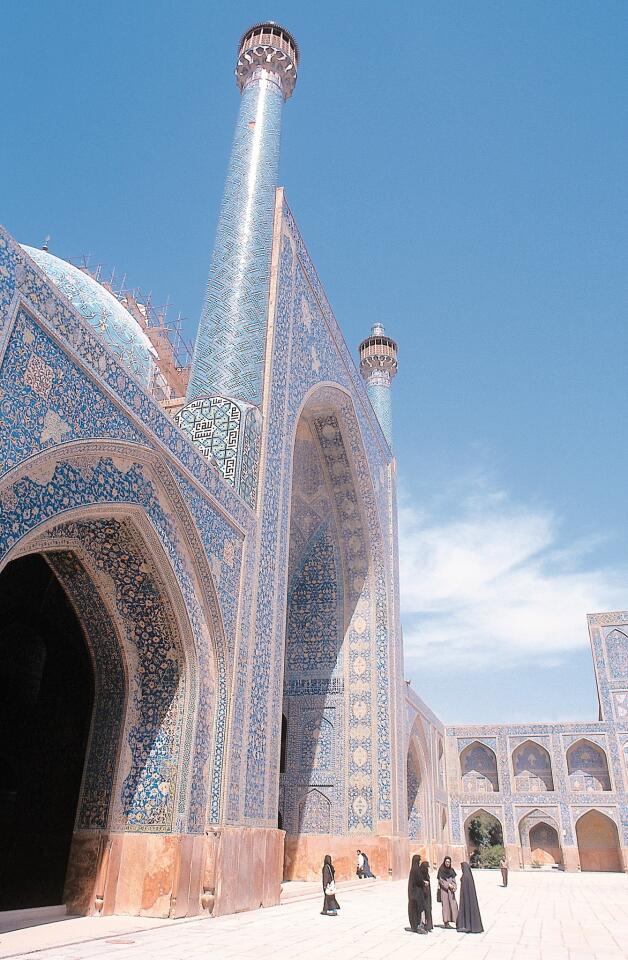
If the world calms down and you find yourself in Iran, ignore Tehran and head straight for Isfahan, where the 17th-century treasures are. In particular, it’s where the Imam Mosque (completed in 1629) towers over equally historic Naghsh-i Jahan Square. I visited in 1998, during a brief thaw in U.S.-Iranian relations. Amazing mosaic tilework. (Christopher Reynolds / Los Angeles Times)
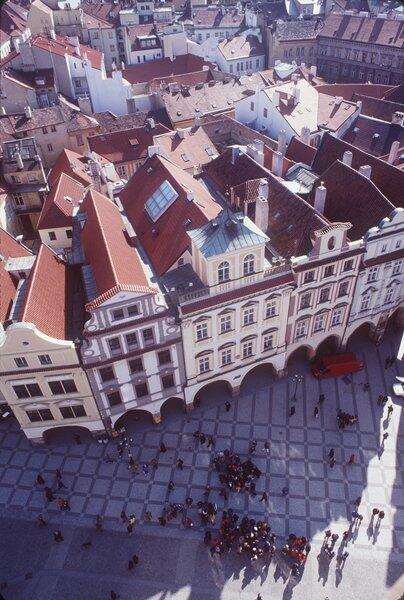
In the heart of Prague stands the Old Town Hall Tower, which you can climb, the better to capture pictures of Old Town Square and its historic architecture. Or stand below and look at the tower and its astronomical clock, which dates to the 15th century and features a kinetic display every hour. Photo taken in 1999. (Christopher Reynolds / Los Angeles Times)
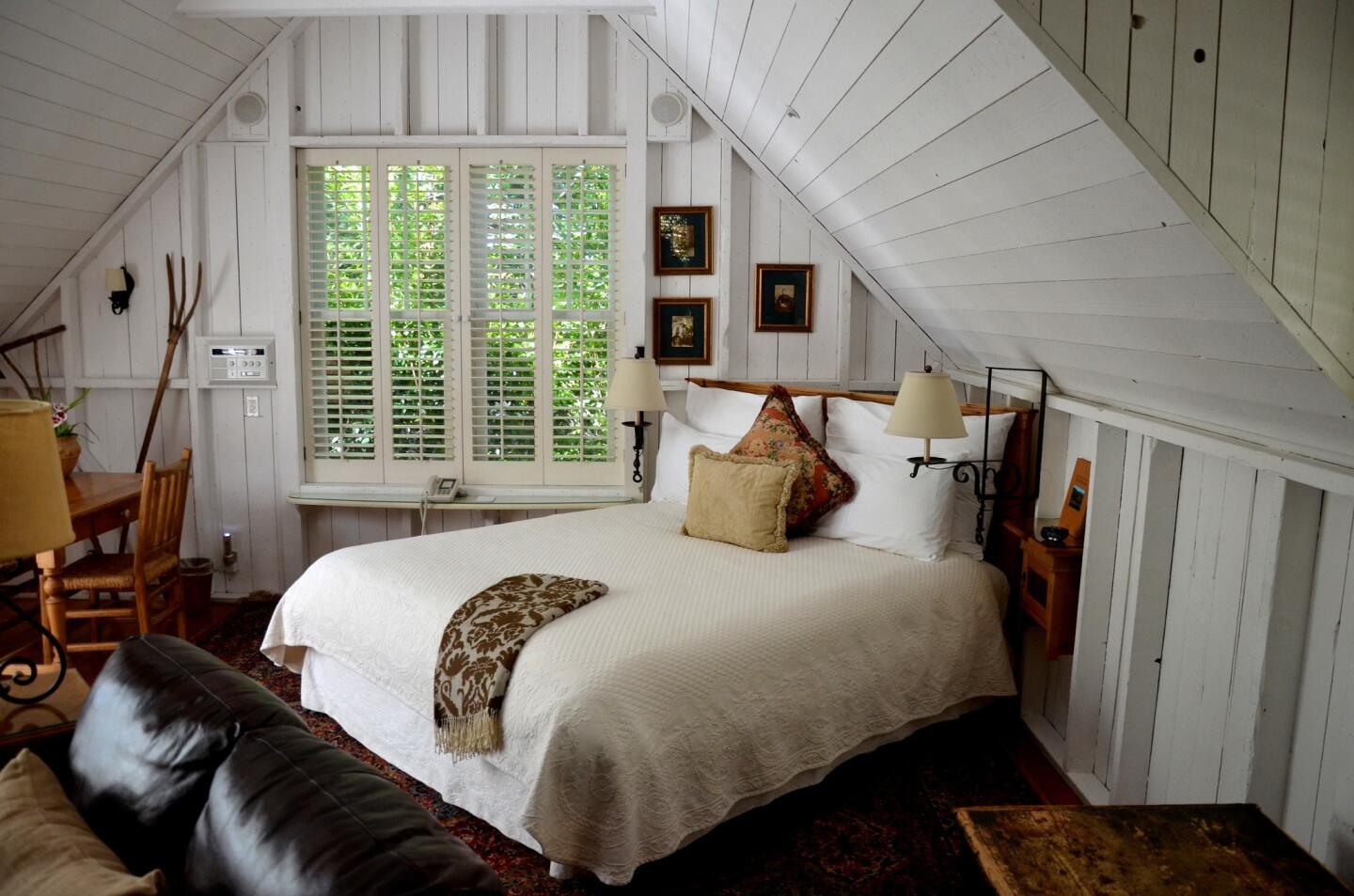
The Simpson House Bed & Breakfast is a 15-unit Victorian mansion (and barn) on Arellaga Street, a genteel residential area that’s a short walk from downtown’s restaurants and shops. If you’re spending freely for a honeymoon or anniversary, the room you want is the Hayloft, here, upstairs in the property’s 1870s carriage house. It costs a fortune, but you’ll remember it for a good while. (Christopher Reynolds / Los Angeles Times)
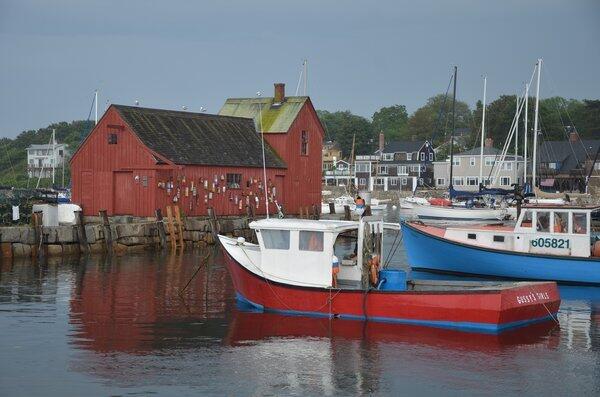
So many painters have built compositions around this 19th-century fishing shack over the decades that locals in Rockport just call it “Motif No. 1.” When a blizzard destroyed the beloved red structure in 1978, local leaders immediately rebuilt a replica that looks just as Hopperesque as the original. (As it happens, the famed painter Edward Hopper himself spent lots of time in Rockport and neighboring Gloucester, yet apparently never painted Motif No. 1.) (Christopher Reynolds / Los Angeles Times)
Advertisement
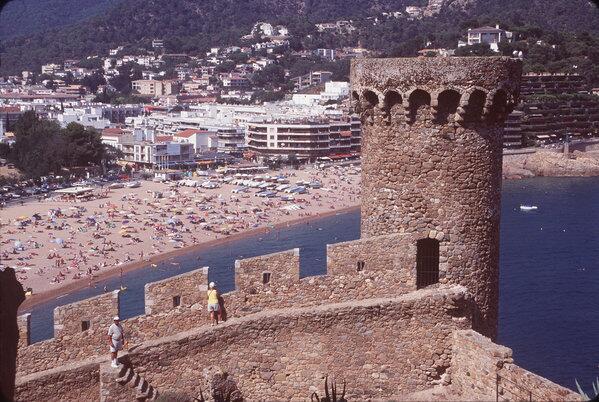
Tossa del Mar, about 60 miles north of Barcelona on the Costa Brava, was gobbled up by mass-market tourism in the 1960s, leaving seaside kitsch on every side. But in the middle of that stands the Vila Vella, remnants of a genuine medieval town with walls and parapets and all, built between the 12th and 14th centuries. I took this picture in late 1999. (Christopher Reynolds / Los Angeles Times)
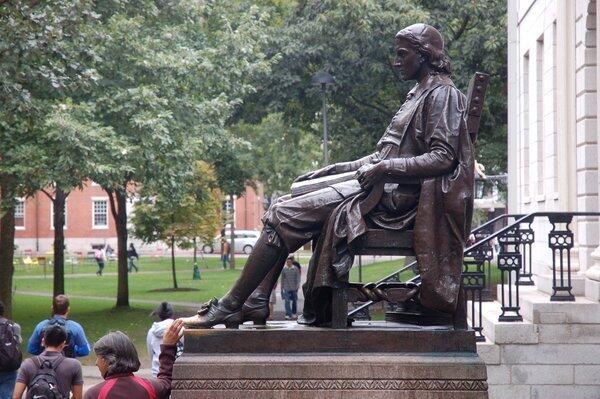
On the Cambridge campus of Harvard University there’s a statue with a plaque that’s beloved for its inaccuracy. It says “John Harvard, founder, 1638,” but the man portrayed was a model; John Harvard was not the founder (though the school was named for him); and the founding happened in 1636. Otherwise, it’s a fine statue. For good luck, some students and tourists touch the toe of the left shoe. (Then again, under cover of night, some students do rude things on and near the statue. Fondle with caution.) Photo taken 2009.
Read more: A Cambridge crash course (Christopher Reynolds / Los Angeles Times)
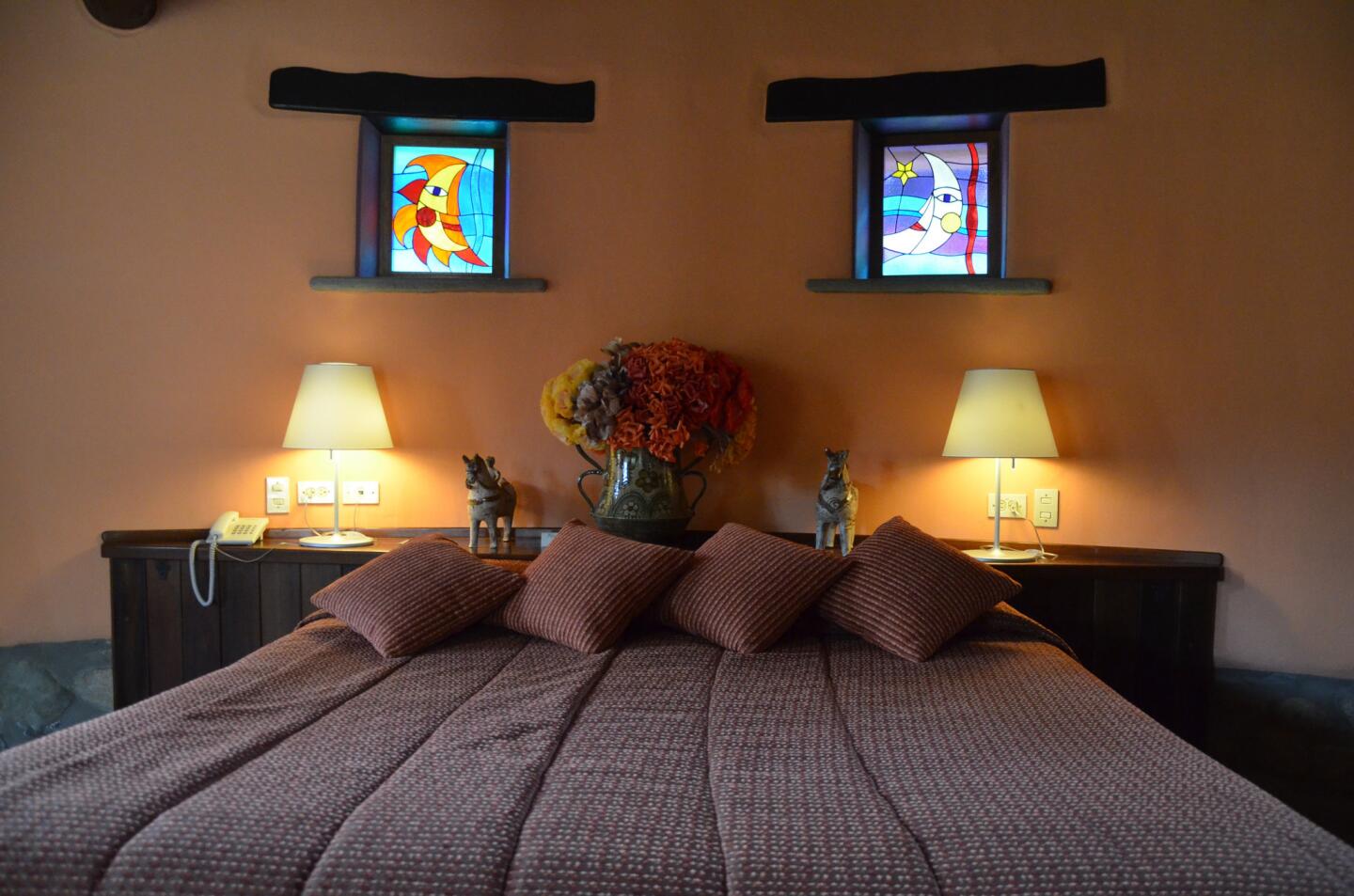
To sidestep the backpacker hordes of El Pueblo de Machu Picchu and the urban grit of Cuzco, some discerning and well-fixed travelers prefer the pastoral calm (and fancy windows) of the Sol & Luna Hotel in Urubamba, in the Sacred Valley outside Cuzco. It certainly looked good when I lunched there and nosed around. (Look closely and you’ll catch the connection between those windows and the name of the place.)
Read more: Cuzco, Peru’s often overlooked treasures (Christopher Reynolds / Los Angeles Times)
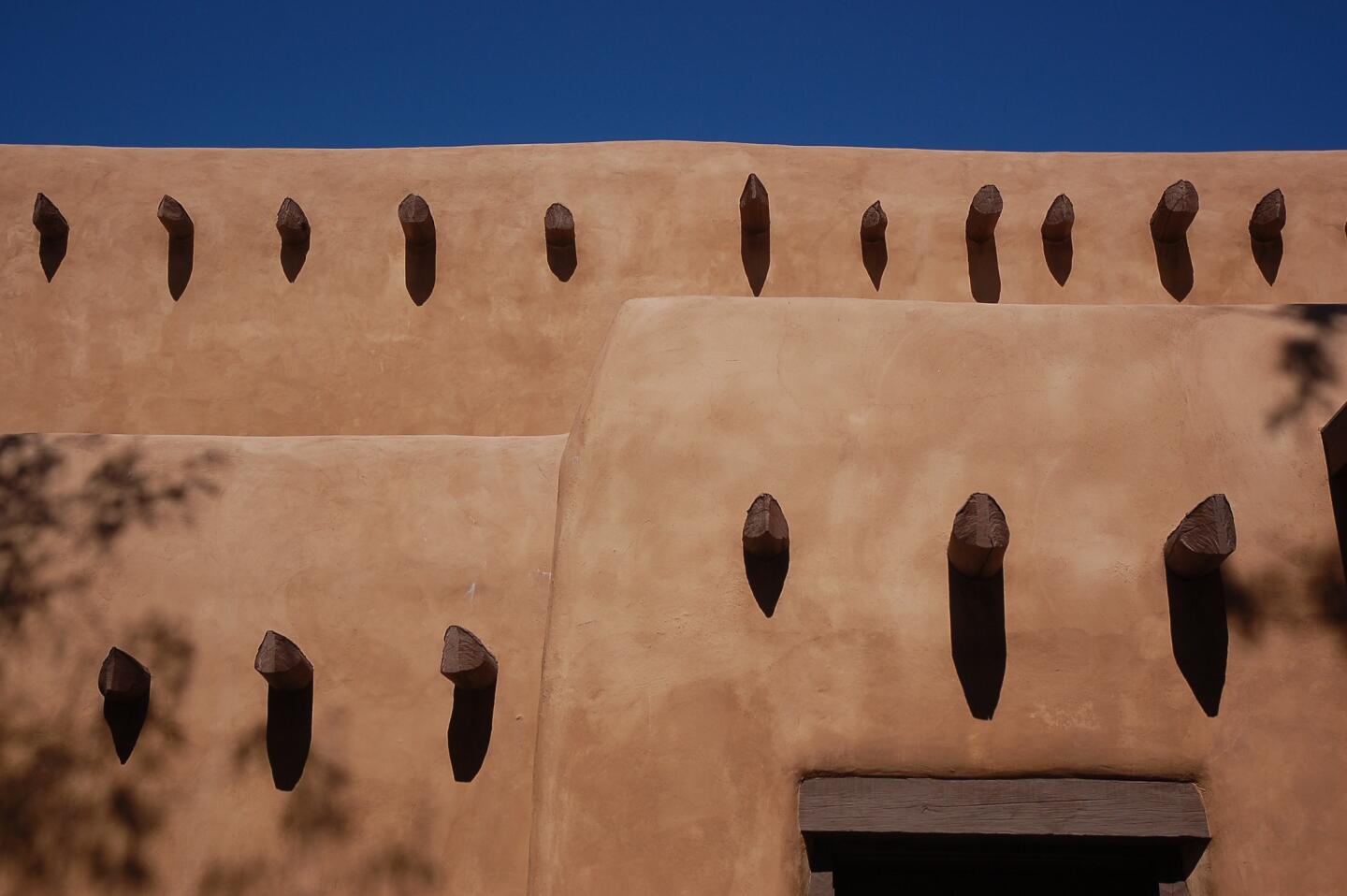
My favorite building in New Mexico -- the New Mexico Museum of Art in Santa Fe -- isn’t exactly original. First came the 17th-century San Esteban del Rey church at Acoma Pueblo (125 miles southwest of Santa Fe). Then came a 1908 copycat commercial building in Morley, Colo. Then came another copy, which represented New Mexico at a 1915 Panama-California exposition in San Diego. Then in 1917 came this museum in Santa Fe. (Meanwhile, the Acoma church endures, but I’ve never seen it.) Photo taken in 2010.
Read more: Old Santa Fe: 400 and still evolving (Christopher Reynolds / Los Angeles Times)
Advertisement
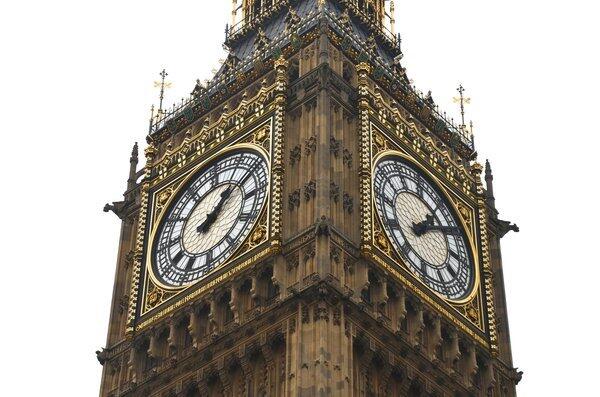
After several trips to London, I’ve hit all the basics. So I’m always eager to tramp around a neighborhood that’s new to me. (Last time, it was Hoxton and Shoreditch, still trendy after two decades of creeping hipsterism.) But before I leave, some unseen force drags me down into a tube station and forces me onto a train bound for Westminster, in the middle of everything. Then I get off the train and stand around under Big Ben, for no reason except that it makes me feel like I’m in England. Not a bad feeling. Shot in 2011.
Read more: What’s new in London since the last big royal wedding (Christopher Reynolds / Los Angeles Times)
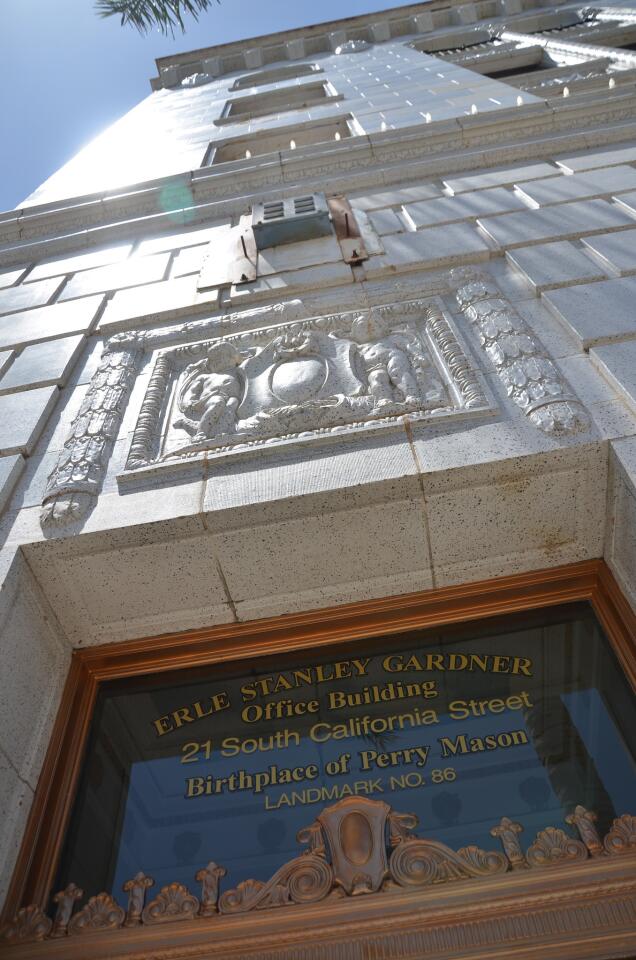
Erle Stanley Gardner’s name may not turn up in the annals of literature alongside William Shakespeare’s or F. Scott Fitzgerald’s or even Charles Bukowski’s, but he’s the attorney-turned-author who gave us Perry Mason, hero of more than 80 mysteries. Gardner’s law office for his early writing years in the 1920s and ‘30s was on California Street in downtown Ventura. Later he moved to Temecula. And in 1968, as he neared the age of 80, he finally married Della Street -- his longtime secretary, that is, whose real name was Agnes “Jean” Bethel). He died in 1970.
Read more: 11 micro-itineraries for Santa Barbara and environs (Christopher Reynolds / Los Angeles Times)
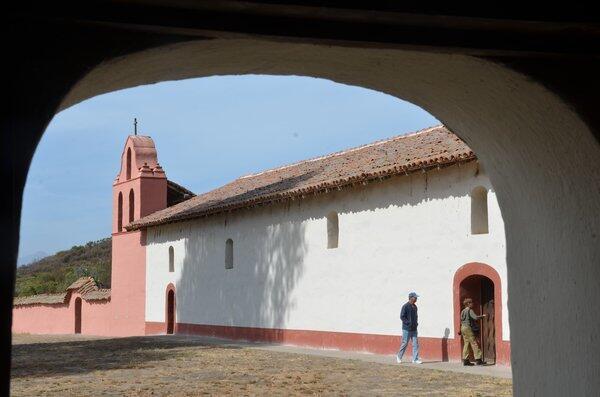
It’s easy to overlook La Purisima Mission State Historic Park. Even though it goes back to 1787, it gets overshadowed by counterparts in bigger cities (San Diego, San Francisco) or wealthier ones (Carmel). But if you’re in the Santa Barbara wine country, Purisima makes a great family visit -- besides the historic buildings, there’s a nice little menagerie of farm animals, including a bull with long, wicked horns.
Read more: 11 micro-itineraries for Santa Barbara and environs (Christopher Reynolds / Los Angeles Times)
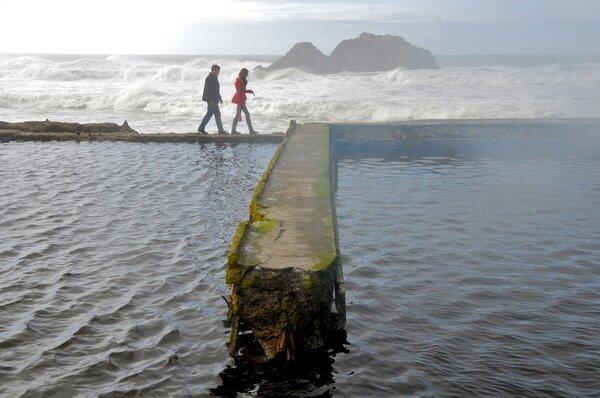
San Francisco has no pyramids (well, except the Transamerica building) and no sphinxes (that we know of). But ruins, it has. Sutro Baths, at Lands End on the city’s western edge, go back about 100 years. The wave-lashed sites draws many hikers and plenty of young couples on long walks.
Read more: 49 places in San Francisco that you might have missed (Christopher Reynolds / Los Angeles Times)
Advertisement
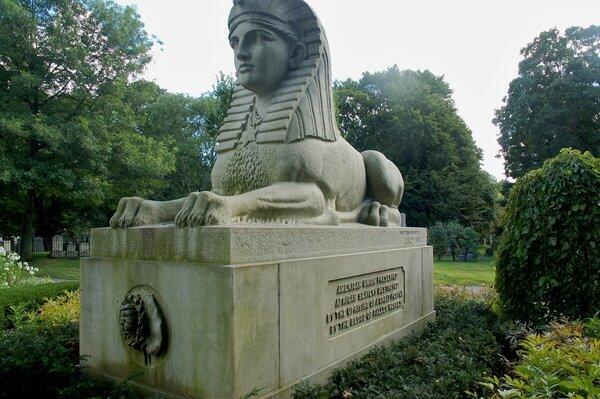
Even without this leonine wonder, the Mt. Auburn Cemetery in Cambridge would be a worthwhile spot. (There’s a tower with a great view.) But this marker, which commemorates the Civil War, is strange and powerful enough alone to justify a visit. And a Stephen King story.
Read more: A Cambridge crash course (Christopher Reynolds / Los Angeles Times)
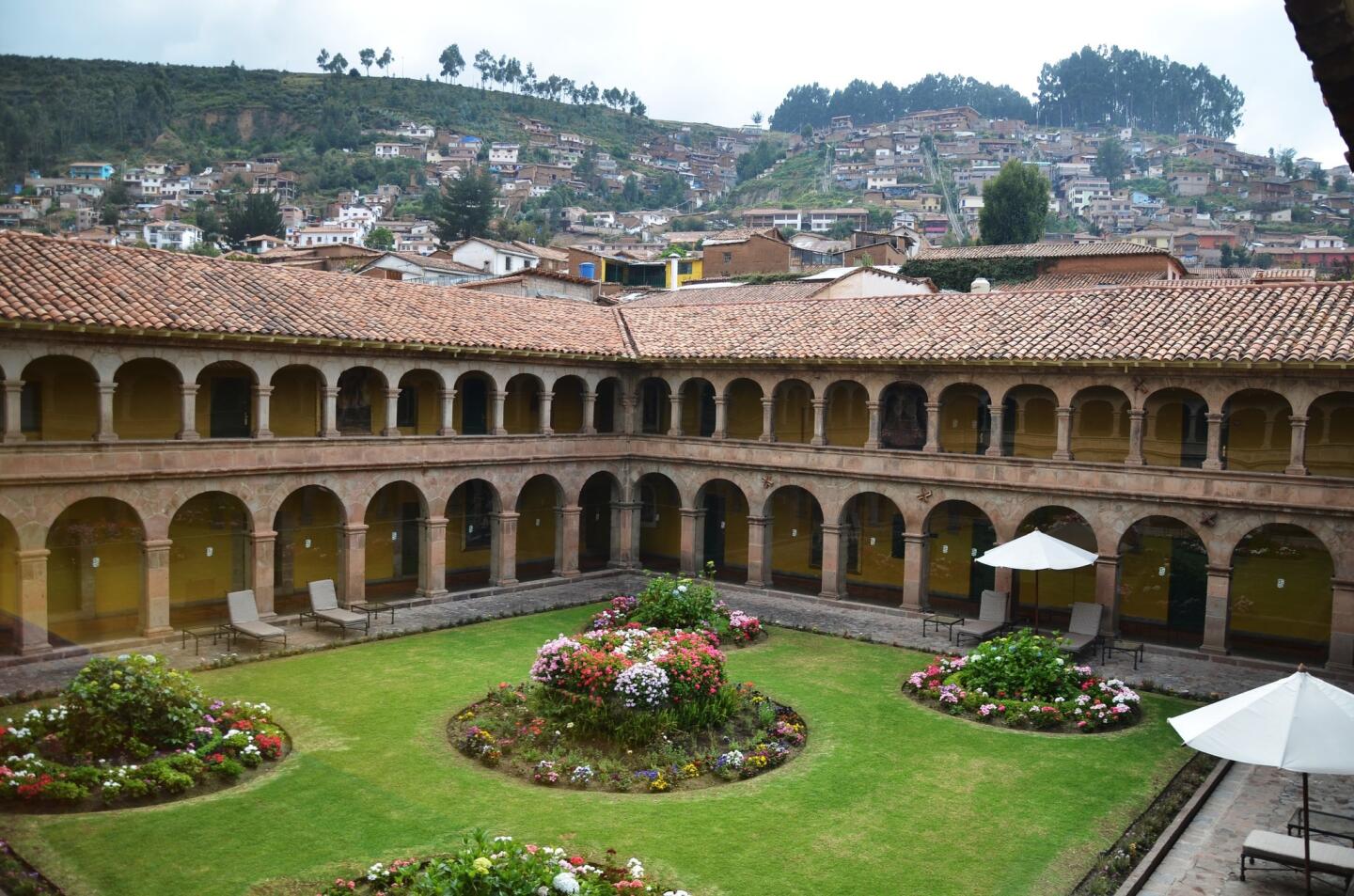
The Hotel Monasterio in Cuzco was built by Spanish conquistadors in the 1590s. It lasted nearly four centuries as a monastery, but was converted into a hotel in 1965. Nowadays, it’s lavish enough to make a billionaire feel right at home, with a private chapel and a 300-year-old cedar tree.
Read more: Is Machu Picchu reaching its peak? (Christopher Reynolds / Los Angeles Times)
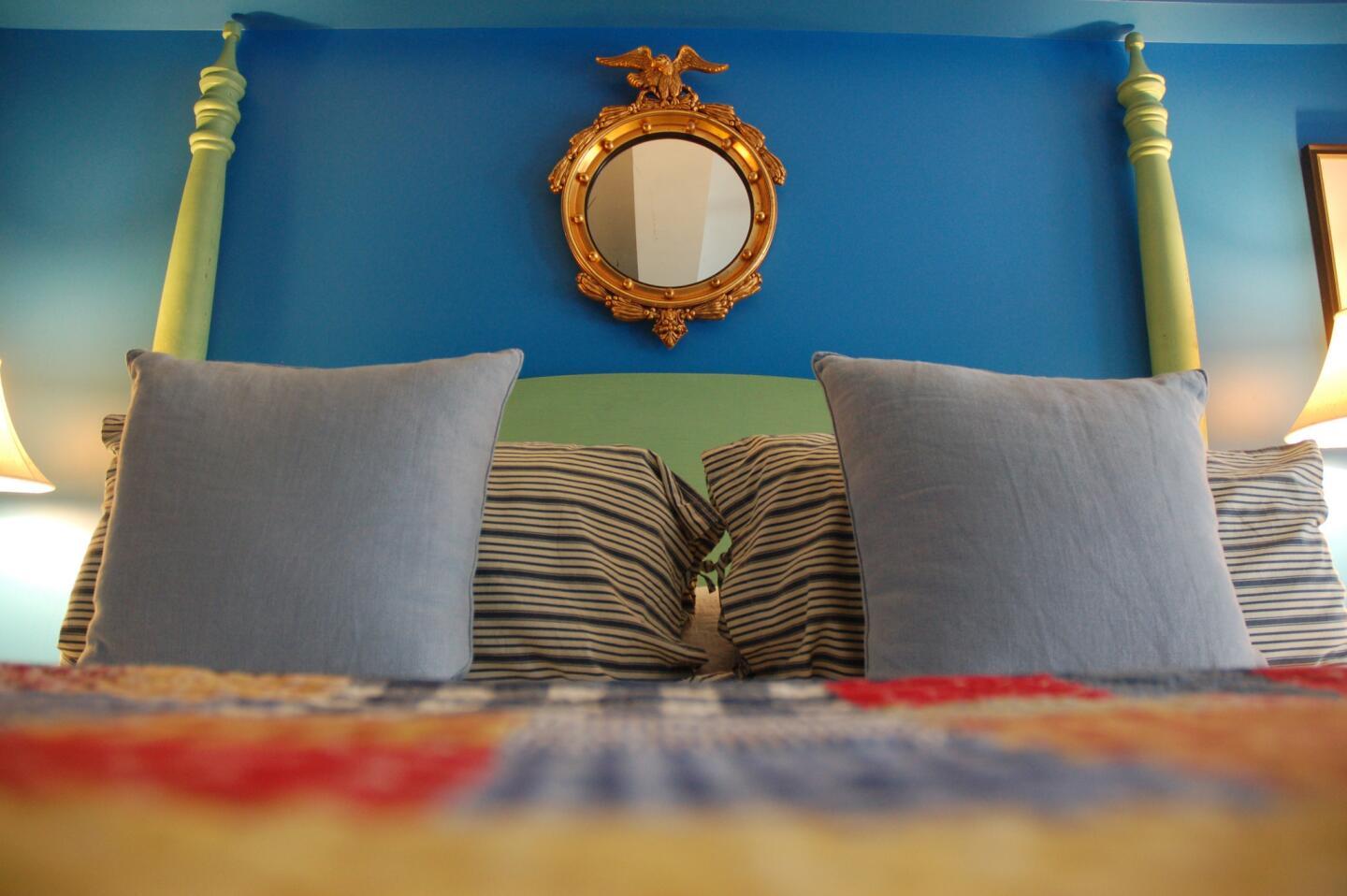
The Kendall Hotel, near MIT in Cambridge, is a welcome anomaly -- its rooms as color-drenched and playful as the Massachusetts Institute of Technology campus can be daunting and cold.
Read more: A Cambridge crash course (Christopher Reynolds / Los Angeles Times)
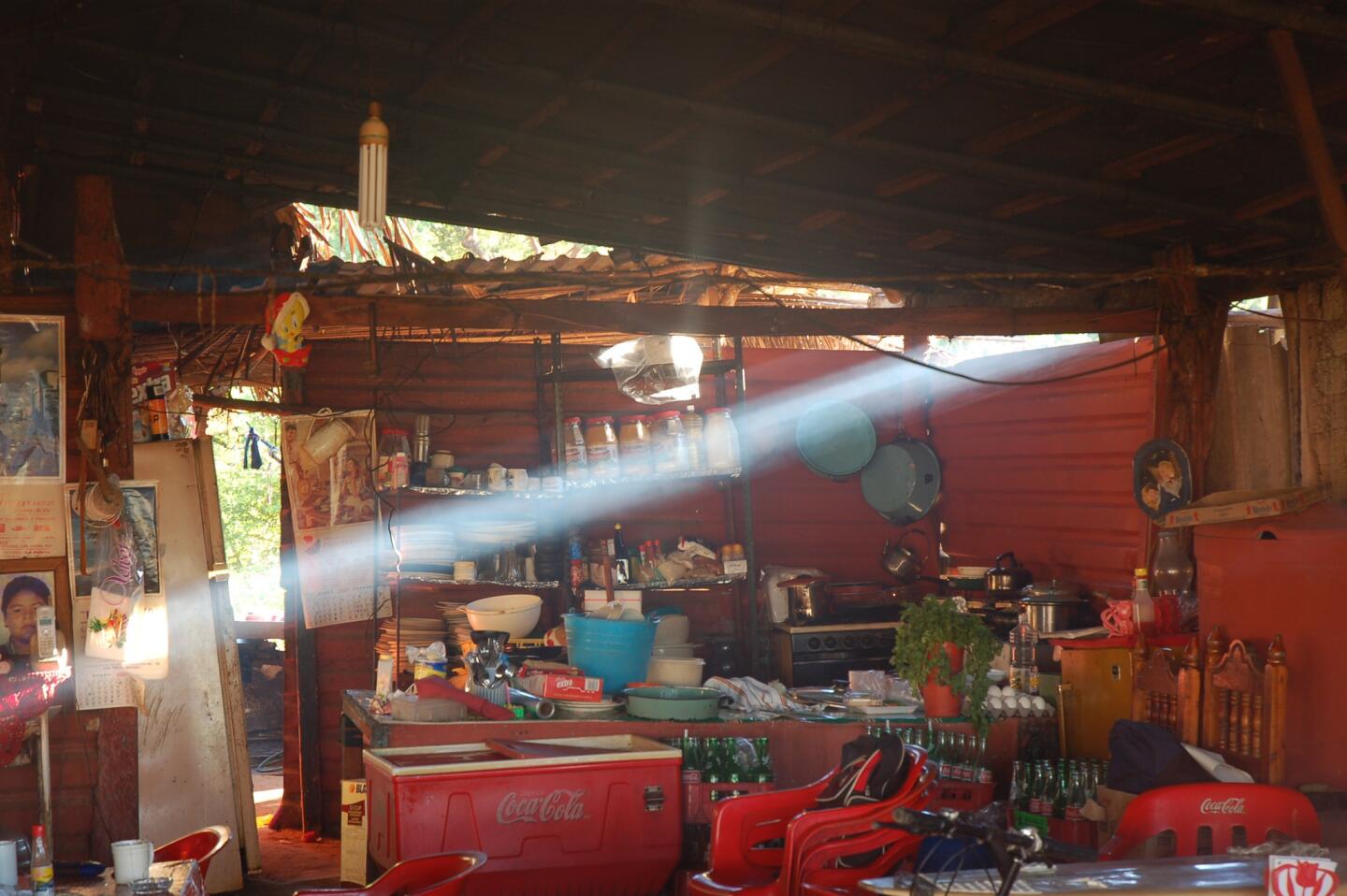
You never know when a sunbeam’s going to sneak in and dress up the whole room, even if it’s a restaurant with a dirt floor. This is the little seaside town of Chacala, Mexico. Shot in 2007.
Read more: Pacific Mexico’s Playa Chacala: Sun, sand and something more (Christopher Reynolds / Los Angeles Times)
Advertisement
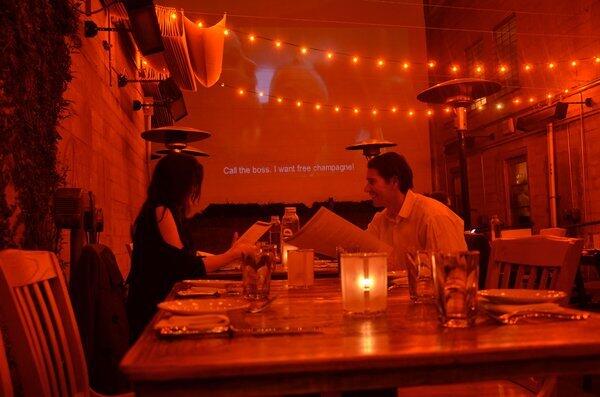
Foreign Cinema is a stylish restaurant in San Francisco’s Mission District. While you dine, arty films flicker on one wall of the patio. The night I showed up, the feature was an Edith Piaf biopic with a great scene of misbehavior in a restaurant. Taken in 2012.
Read more: 49 places in San Francisco that you might have missed (Christopher Reynolds / Los Angeles Times)
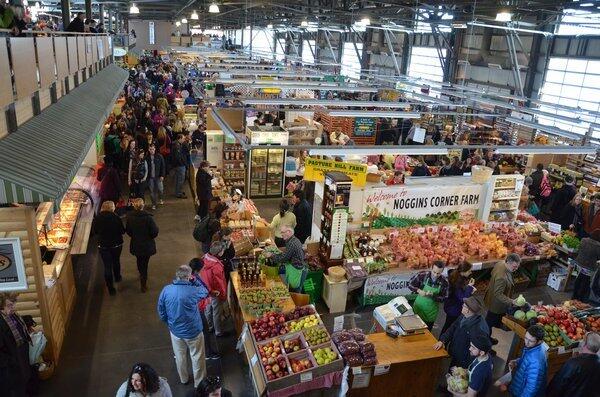
Halifax, Nova Scotia, has been a busy seaport since the city’s founding in 1749. And the Halifax Seaport Farmers Market goes back almost as far. Though it’s now housed in a new building full of energy-saving bells and whistles, the market’s roots reach to 1750. In fact, some boosters call it the oldest farmers market in North America. I’m not sure I buy that. But I haven’t found an older one yet.
Read more: Why are we still so fascinated with the Titanic? (Christopher Reynolds / Los Angeles Times)
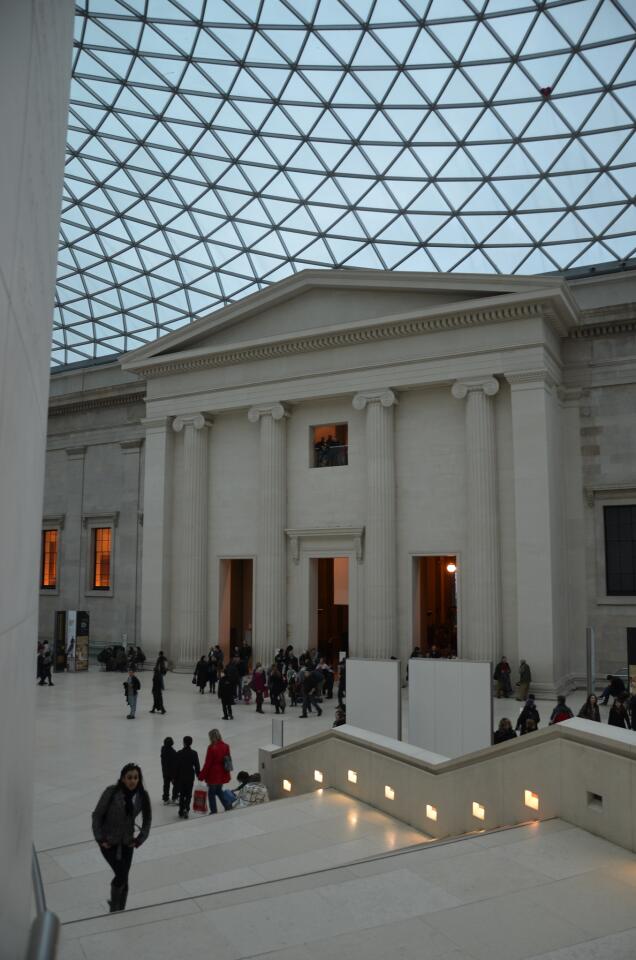
Every once in a while in London, it rains. This annoys tourists on their way to see Big Ben or browse the open-air market stalls at Camden Lock. But there’s a solution: The British Museum, where a 2000 renovation created a Great Court that’s perfect for waiting out a downpour. And if you choose to step inside the museum itself, you’ll find one of the world’s great collections, including the Rosetta Stone and all sorts of ancient wonders that the British carried back from Egypt, Greece and various other countries that would now like those things returned. Picture taken 2011.
Read more: What’s new in London since the last big royal wedding (Christopher Reynolds / Los Angeles Times)
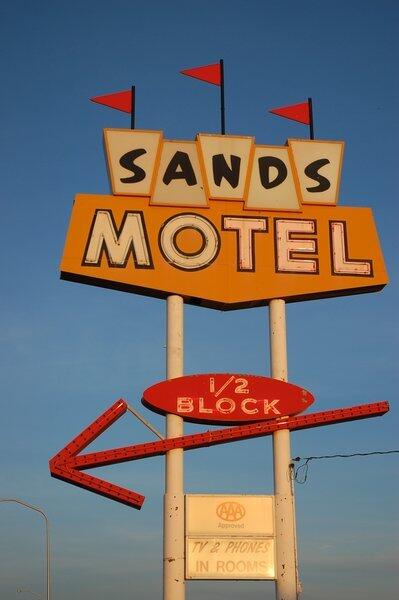
I know, you thought the Sands was in Las Vegas. But anywhere you’re surrounded by miles of desert, you’re entitled to call your lodging the Sands. This cool old sign (I especially like the red arrow) looms over the modest town of Grants in western New Mexico. Taken in 2008.
Read more: In New Mexico, history is etched into El Morro monument (Christopher Reynolds / Los Angeles Times)
Advertisement
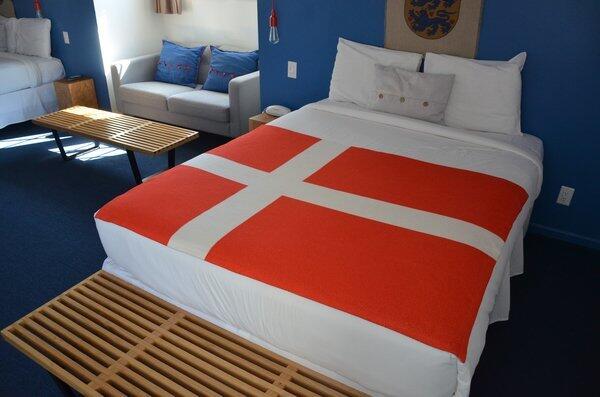
Yeah, Denmark. Because this is Solvang, founded and built by Danes, now surrounded by fancy Santa Barbara County wineries. More specifically, this is the Hamlet Inn, a witty little lodging full of Danish modern design and travelers paying surprisingly low rates. Some nights, they go as low as $69. Try finding that in Los Olivos or Santa Ynez. Or Copenhagen, for that matter.
Read more: Southern California Close-Up: Santa Barbara County wine country (Christopher Reynolds / Los Angeles Times)
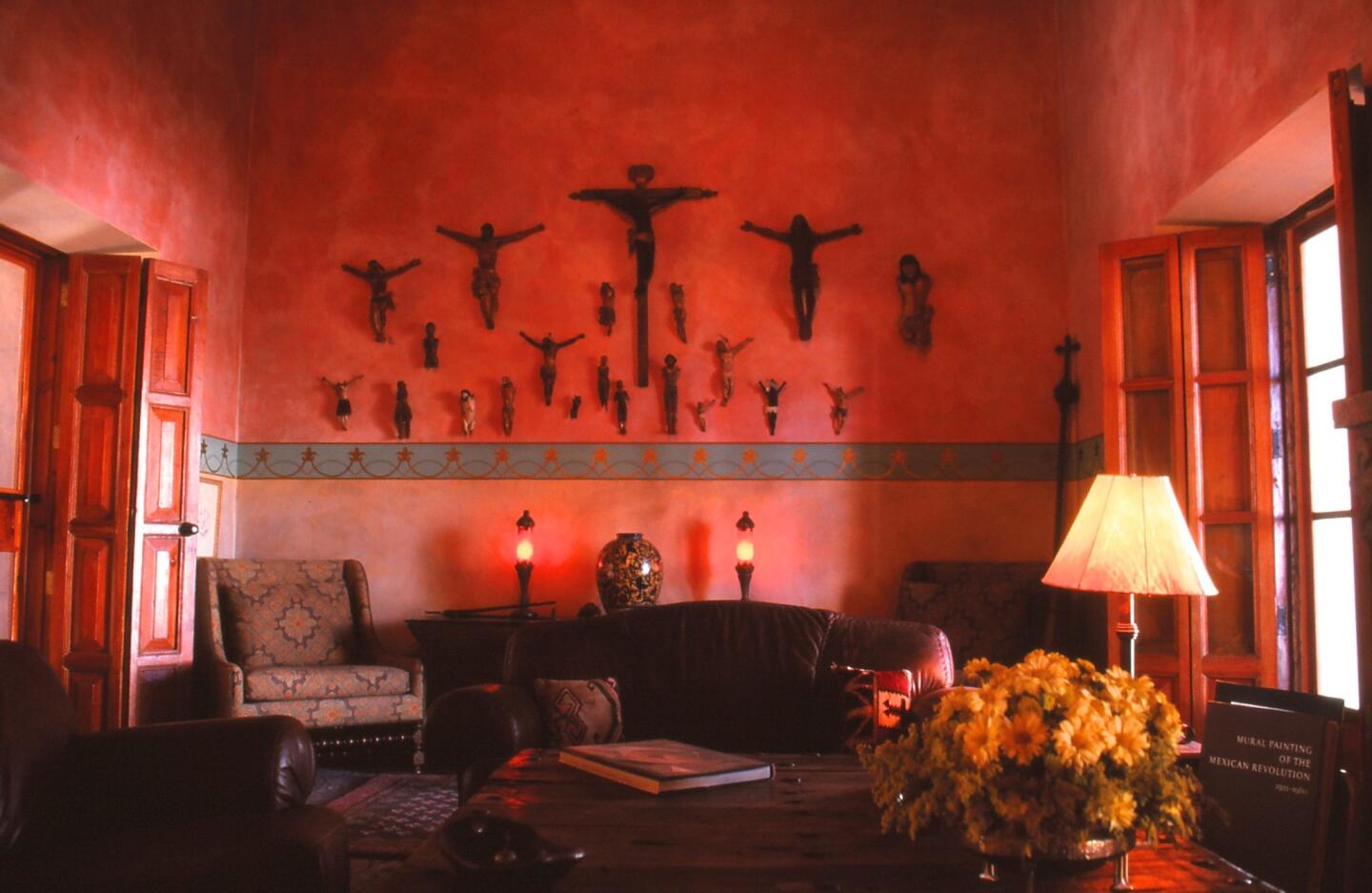
Some rooms demand that you hold still for a minute. This sitting area in the Hacienda de los Santos Hotel, Alamos, Mexico, was one of those. The building is about 300 years old. Alamos, once a silver-mining boomtown, is in the state of Sonora. Its graceful old buildings have attracted a small American expat community.
Read more: From Washington, D.C., to Europe, the travels of 2001 offer a new perspective (Christopher Reynolds / Los Angeles Times)
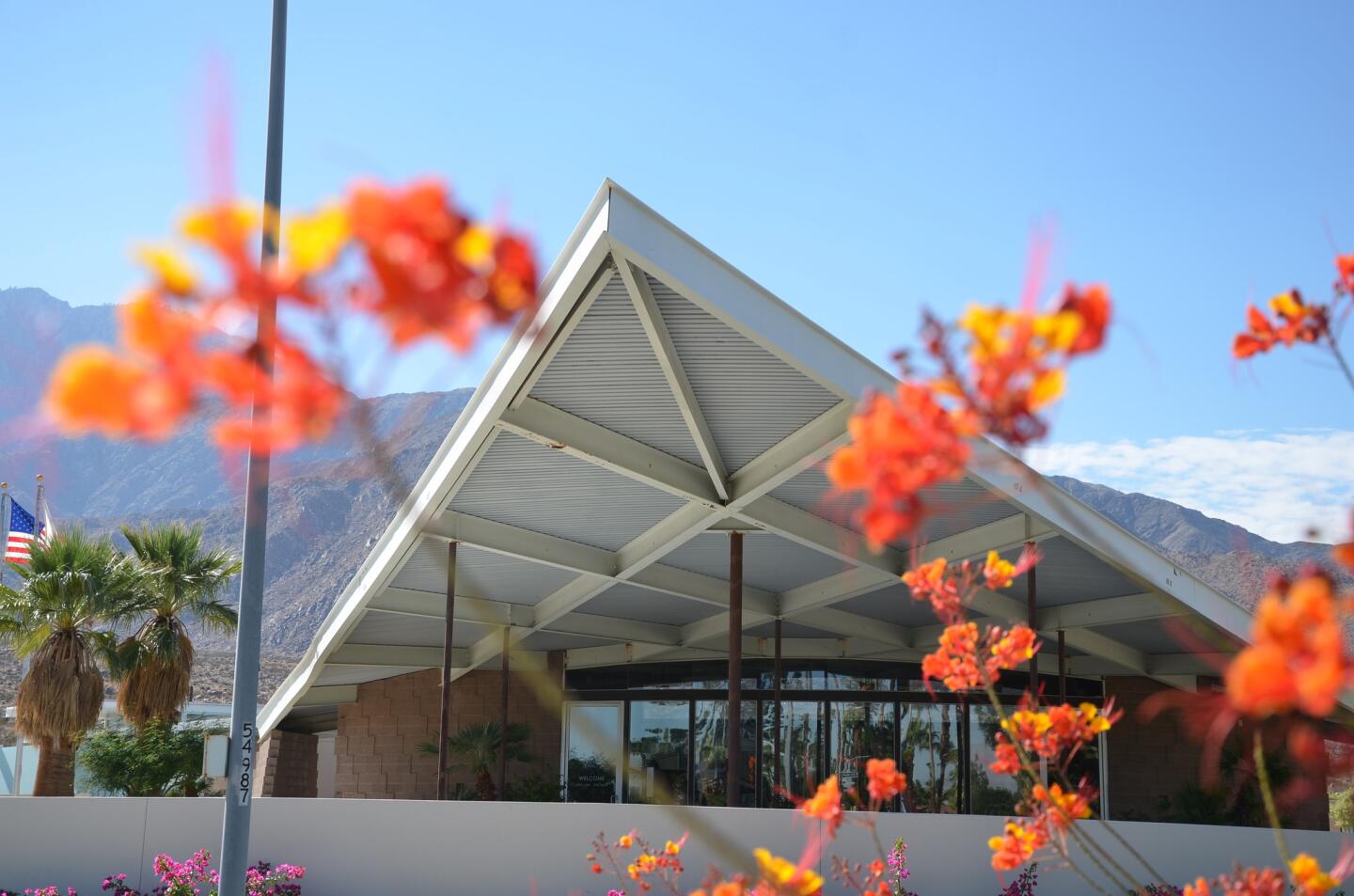
Once, surely, this was the pool house of Zeus. Wait, that’s not right. It was a gas station at the north end of town. Now it’s home to the Palm Springs Visitor Center. Shot in October 2012.
Read more: A date with the Coachella Valley (Christopher Reynolds / Los Angeles Times)
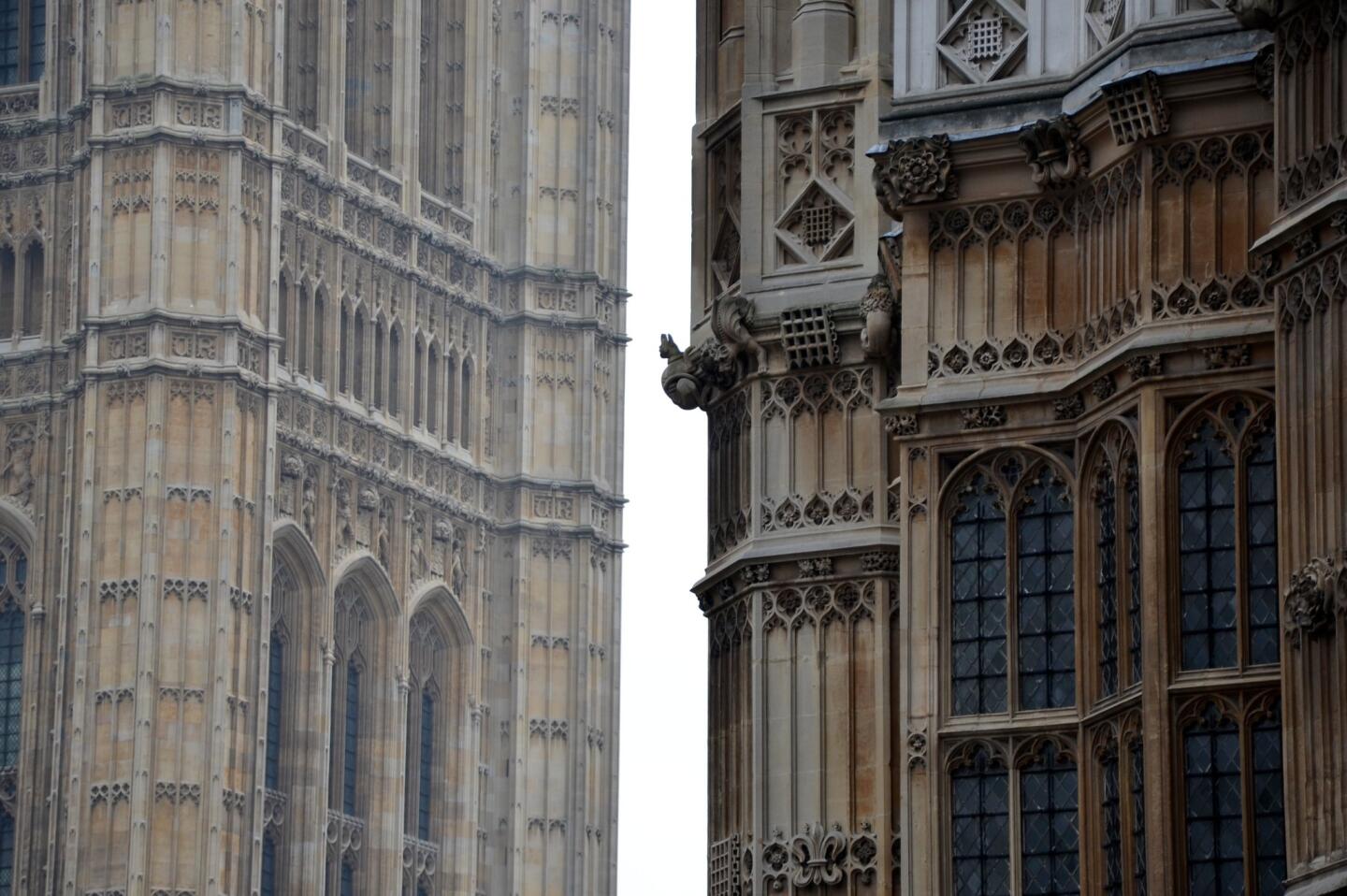
...I’d hope for the resolute tones of Winston Churchill, but I have this fear they might sound like Prince Charles, complaining about something contemporary. Anything contemporary. Anyway, this is Westminster, the neighborhood of Big Ben and the Houses of Parliament and Westminster Abbey (admission fee for non-worshipers: about $27 per head). Photo shot on the way into the abbey in 2011.
Read more: What’s new in London since the last big royal wedding (Christopher Reynolds / Los Angeles Times)
Advertisement
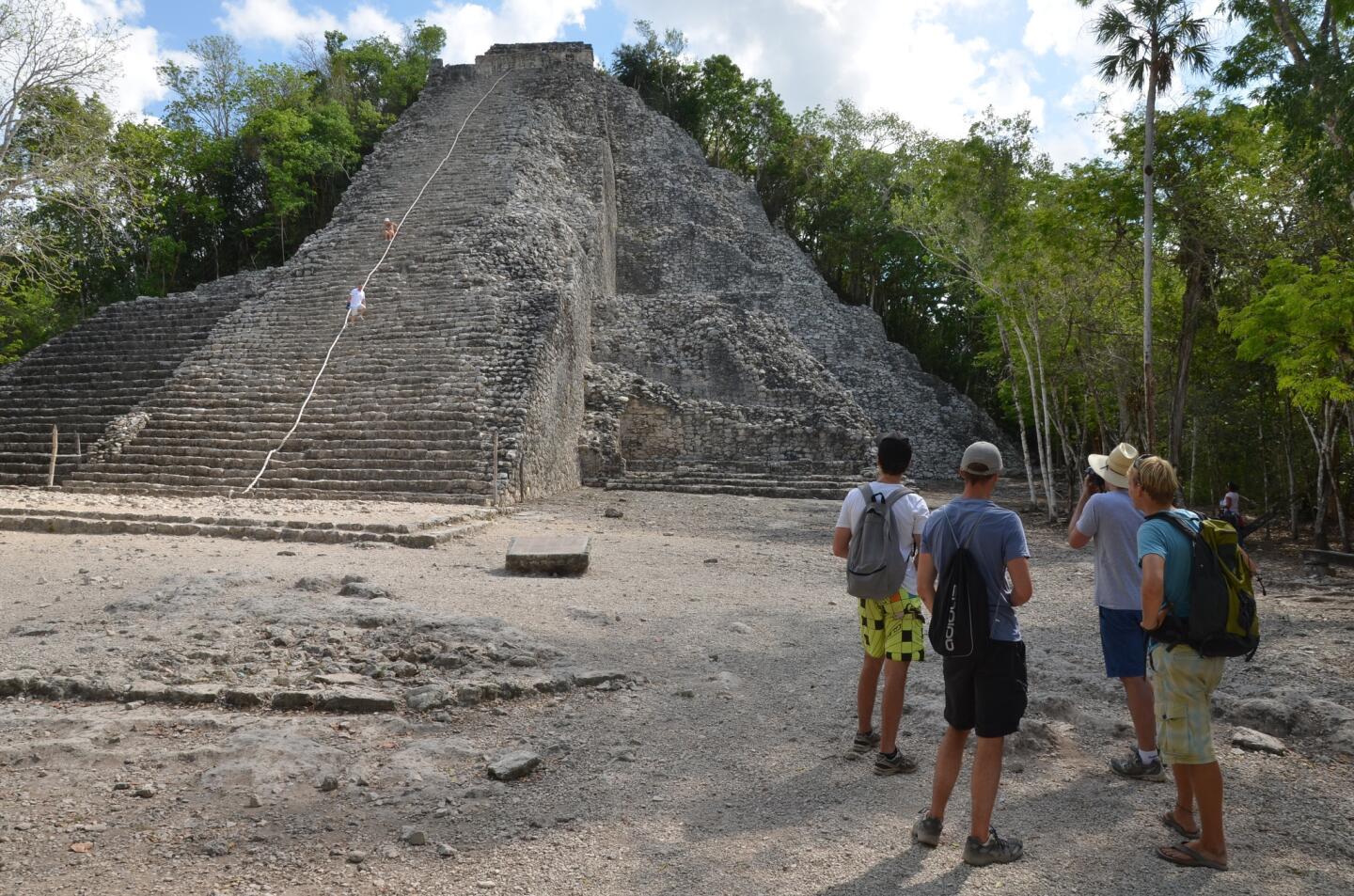
Authorities have banned climbers from the famous pyramid at Chichen-Itza, but about 60 miles southeast of there in the state of Quintana Roo, a priceless alternative awaits. The ruins at Coba include the Nohoch Mul pyramid, where there’s a rope to help you up the 120 steps to the top. Nice, wide, green views from up there -- just don’t step on an iguana. Taken in May 2012.
Read more: History lives in the Yucatan (Christopher Reynolds / Los Angeles Times)
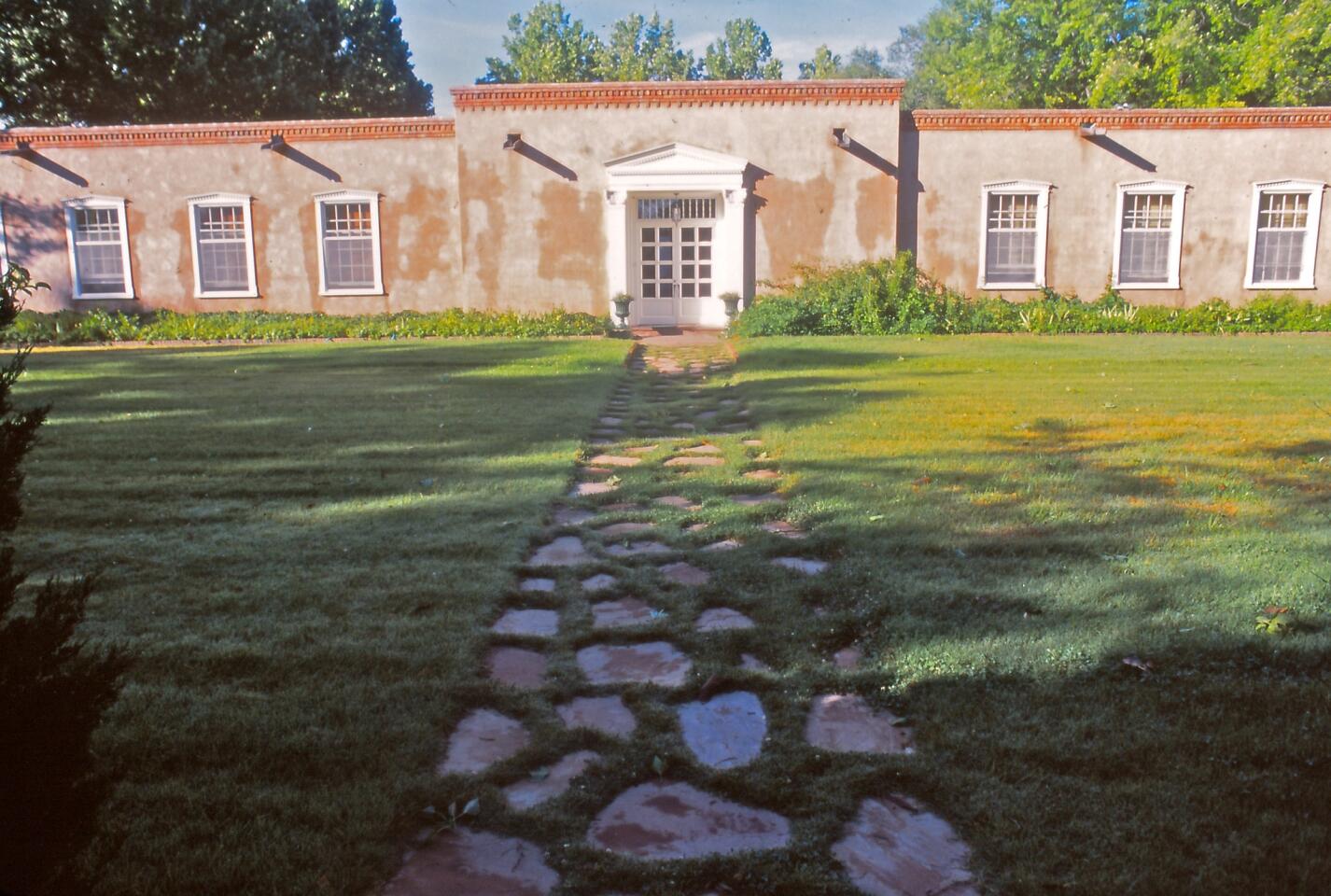
John Gaw Meem was an engineer with tuberculosis, so he came west to dry out. Before long he was out of the sanatorium, studying architecture, designing landmarks and emerging as a pioneer practitioner of New Mexico Pueblo Revival style. People think Santa Fe has most of the state’s most striking buildings, but take note: In the 1930s, Meem designed the buildings now known as Los Poblanos Historic Inn & Organic Farm, and yes, you can stay there. It’s in Los Ranchos de Albuquerque, a ritzy old neighborhood near the Rio Grande. Photo taken on an overnight visit in 2001.
Read more: On the path to the perfect storm (Christopher Reynolds / Los Angeles Times)
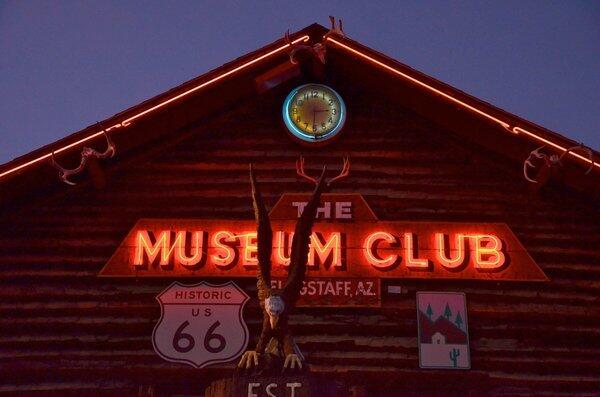
On the east end of Flagstaff, right on Route 66, the Museum Club rollicks, roars and lures road-trippers off the asphalt. Built in 1931, the club for decades has been hosting both kinds of music -- you know, country and western. Big dance floor, notable taxidermy. Among the acts due in 2013: Robert Earl Keen, David Allen Coe and also some with only two names. Photo taken on a slow night in early 2012.
Read more: 100 cool places in Arizona (Christopher Reynolds / Los Angeles Times)
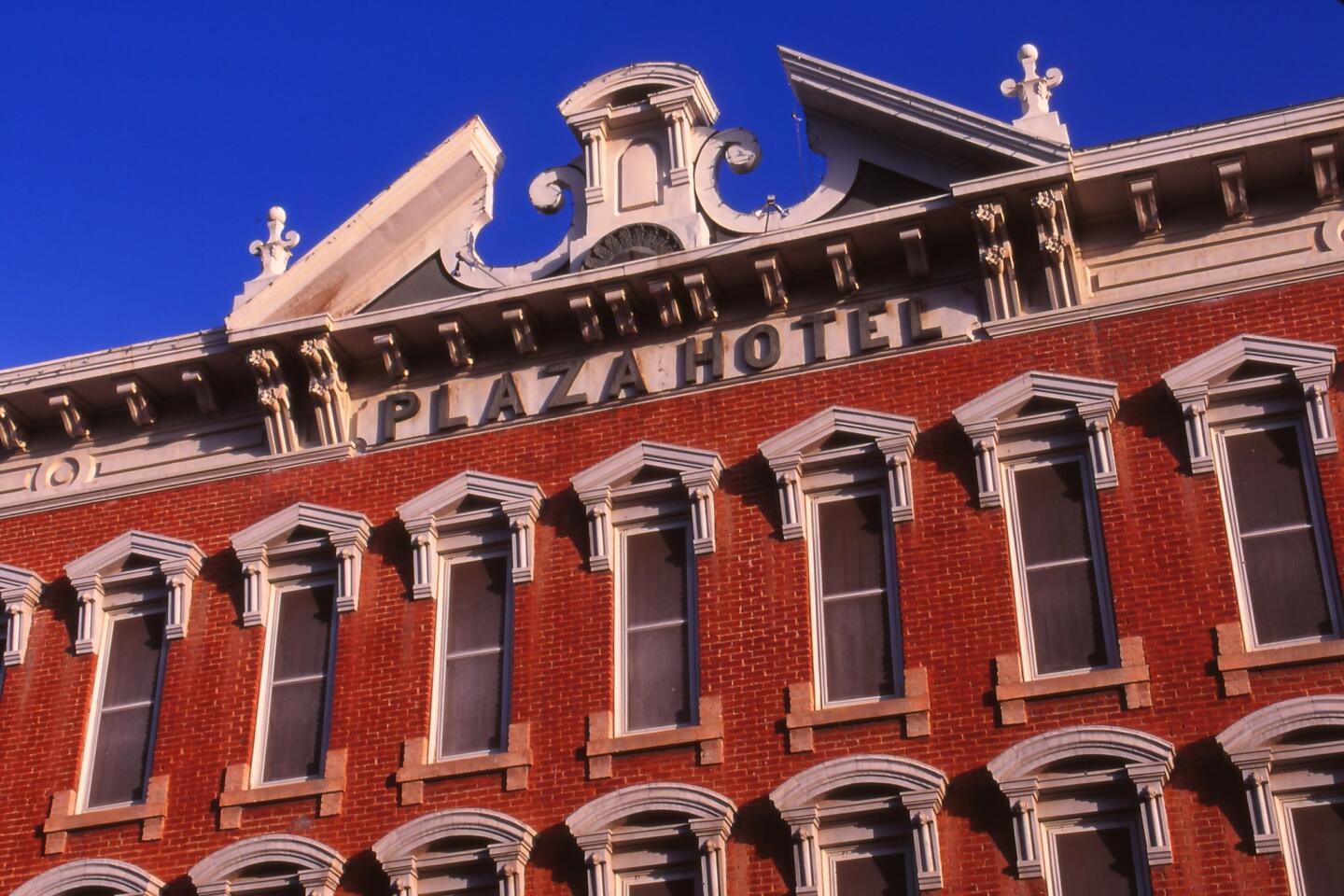
The Plaza is my favorite Las Vegas hotel -- Las Vegas, N.M., that is. It goes back to the 1880s, when the railroad brought a lot of traffic through town. Now there’s not so much traffic. But this is the town where the bikers in “Easy Rider” (1969) get thrown in jail and meet Jack Nicholson. Also, some of “No Country for Old Men” (2007) was shot here. I passed through in 1996.
Read more: Rambling the back roads from town to town (Christopher Reynolds / Los Angeles Times)
Advertisement
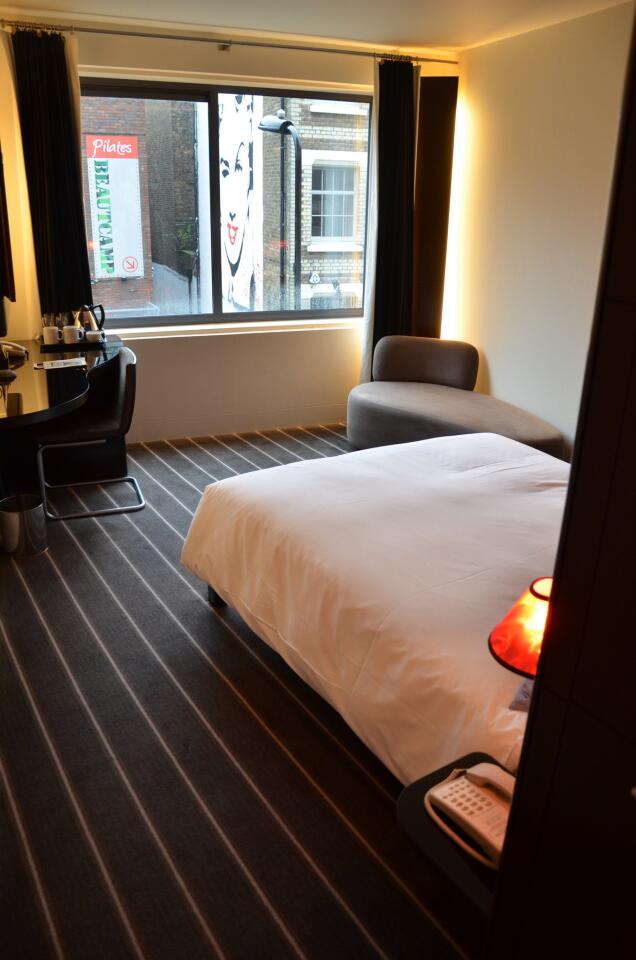
The Hoxton Hotel is a hipster clubhouse in East London. Inside, it sports pinstriped floors and an industrial-chic vibe. From certain rooms (including the one I had in 2011) you see a familiar face peering in from a wall across the street.
Read more: London’s East End (Christopher Reynolds / Los Angeles Times)
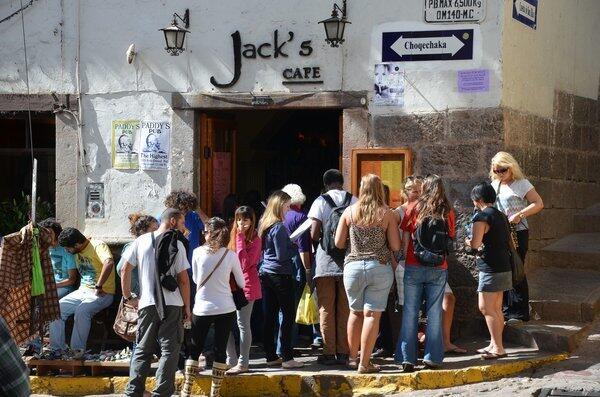
It’s way too crowded. And yes, that’s an almost exact quote from the Peruvian explorer Yogi Berra. This is what can happen when the Lonely Planet guide falls in love with a restaurant, even if it’s in Cuzco on a street whose name looks like your worst Scrabble nightmare. Shot in May 2011, at breakfast time. (And yes, good food and coffee.)
Read more: Is Machu Picchu reaching its peak? (Christopher Reynolds / Los Angeles Times)
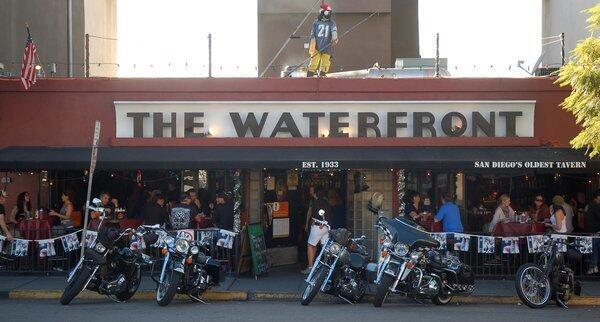
The world does not look to San Diego for old-school grit. But down on Kettner Boulevard, behind a curbside tangle of chrome and spokes, you’ll find The Waterfront, a tavern that opened in 1933. About that time, a local maritime-affairs reporter named Max Miller wrote a sad, savvy book called “I Cover the Waterfront” and pretty soon there was a movie and a song, same name. This tavern never got so famous, but its beer and burgers taste just fine.
Read more: San Francisco vs. San Diego: Which is the better getaway? (Christopher Reynolds / Los Angeles Times)
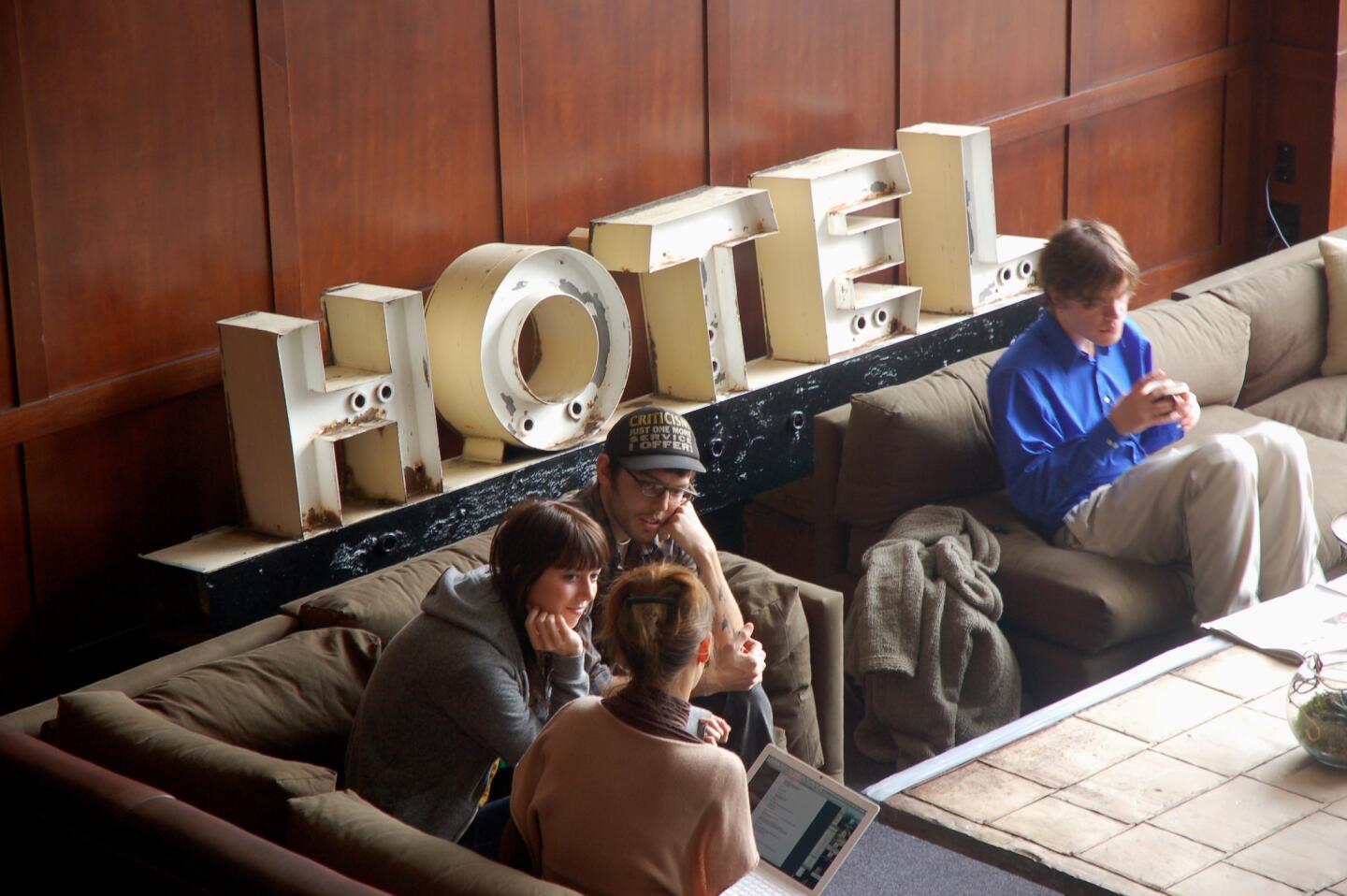
Because it wouldn’t be hip enough to stock your lobby with a cool old HOTEL sign and an old-school photo booth (outside the frame), the Ace Hotel here also had to have the guy in the baseball hat that said: “Criticism: Just one more service I offer!” In the guestrooms upstairs they had vintage vinyl. Taken in 2007.
Read more: A mass-transit trek through Portland’s singular sites (Christopher Reynolds / Los Angeles Times)
Advertisement
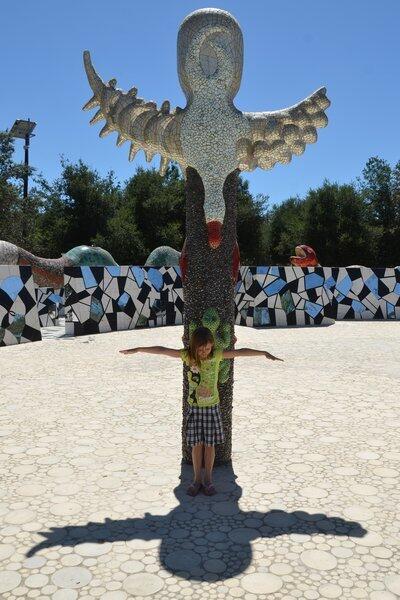
Don’t worry so much about where Escondido is. Just introduce your kid, or your own childish self, to the seriously fanciful artist Niki de Sante Phalle, who died in 2002. She’s best known for kooky creatures that almost beg to be climbed. Her last major international project was Queen Califia’s Magical Circle, out here in super-suburban Escondido, 20 miles east of Carlsbad. Now, just whose wings are casting the shadow in this image?
Read more: San Diego’s North County more than just a pretty face (Christopher Reynolds / Los Angeles Times)
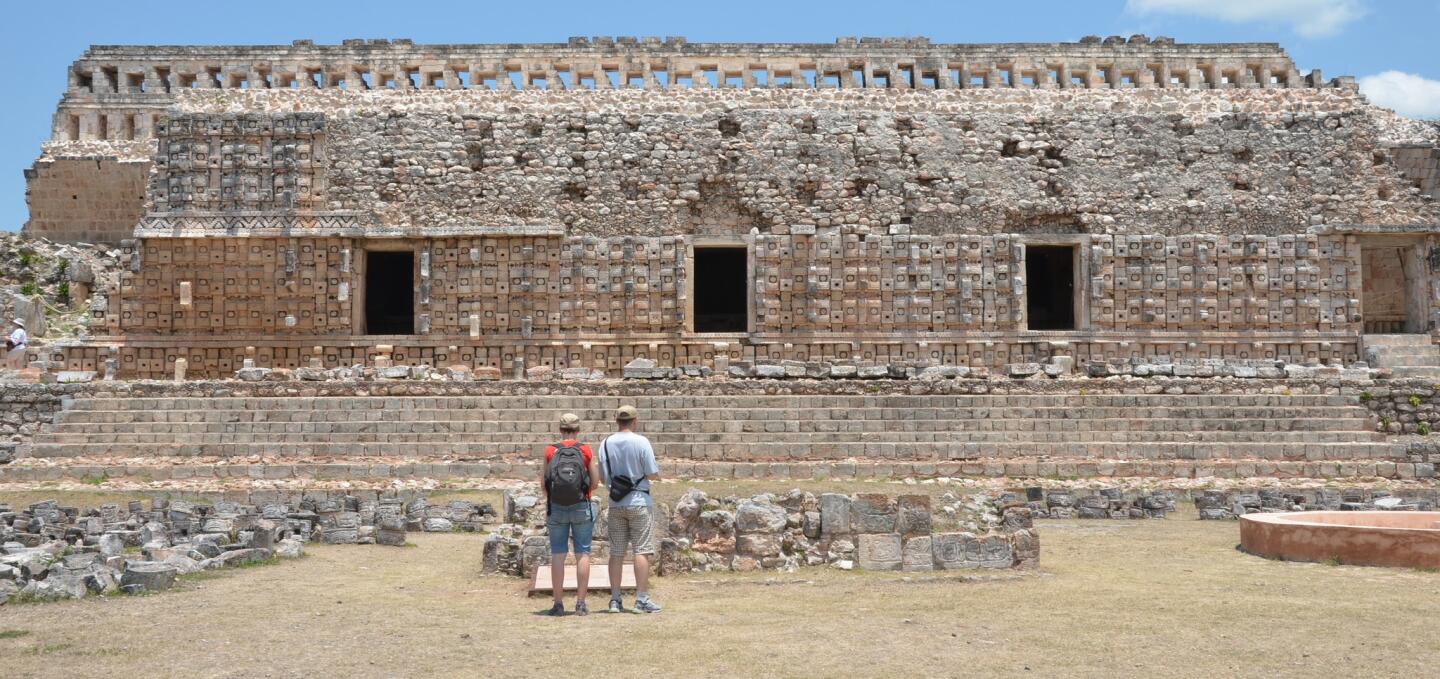
...There were the Maya. Spend just a few minutes at the Codz Poop Altar (in the Kabah Archaeological Zone, Yucatan) and you’ll be deep in a world of interlocking blocks and creeping iguanas.
Read more: History lives in the Yucatan (Christopher Reynolds / Los Angeles Times)
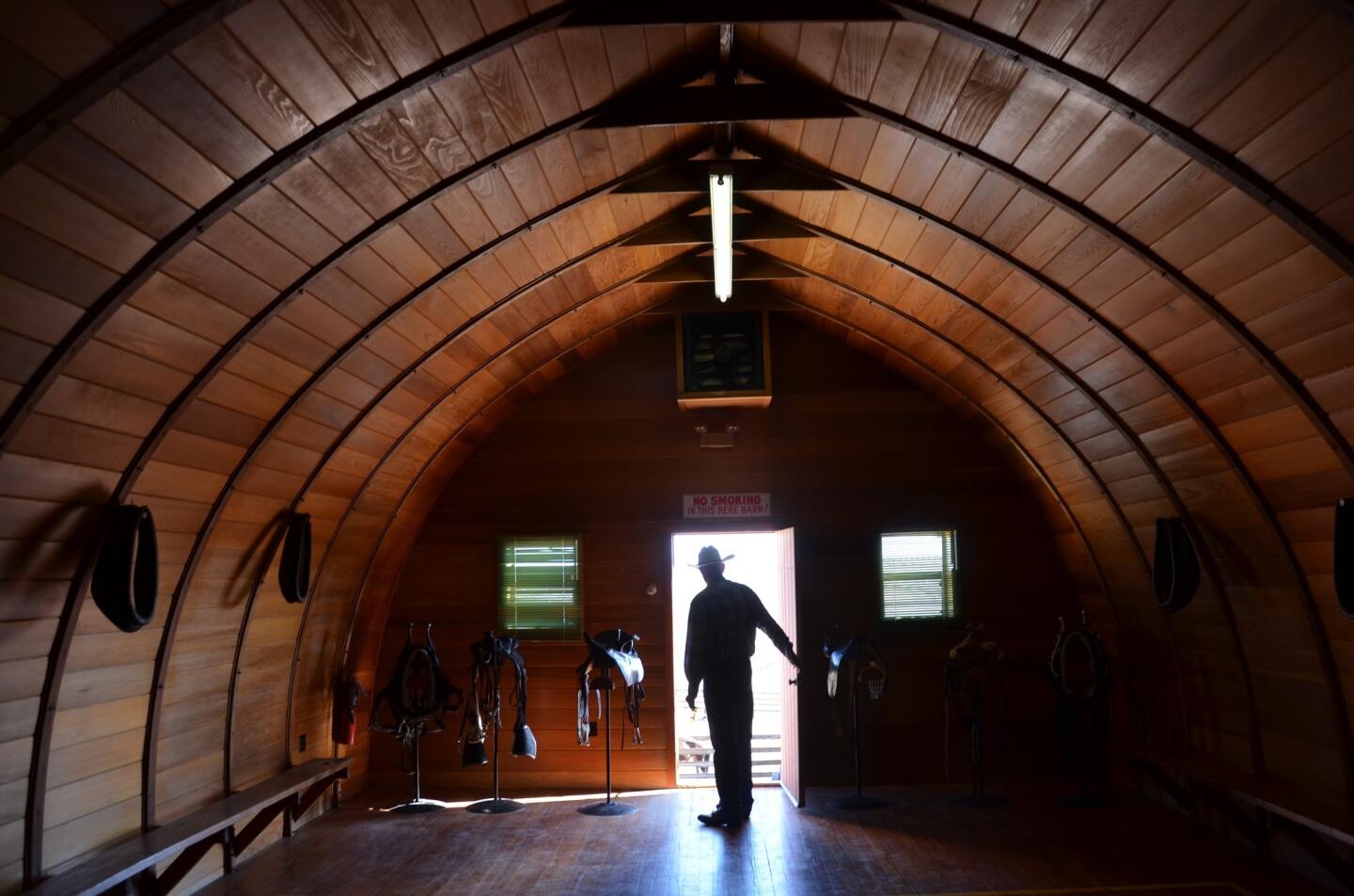
If it weren’t for the saddles that dude ranch host Steve Taylor keeps up here, you might be tempted to settle in for a sauna in Flying E Ranch’s sleek, woodsy, round-topped barn loft. Once you see the horses and desert expanses outside, it all comes clear. The round top is known as Oregon style, Taylor says, and sometimes the ranch has bands and dancing up in that loft. This is the Flying E Ranch, Wickenburg, about 65 miles northwest of Phoenix. Shot in 2012.
Read more: 100 cool places in Arizona
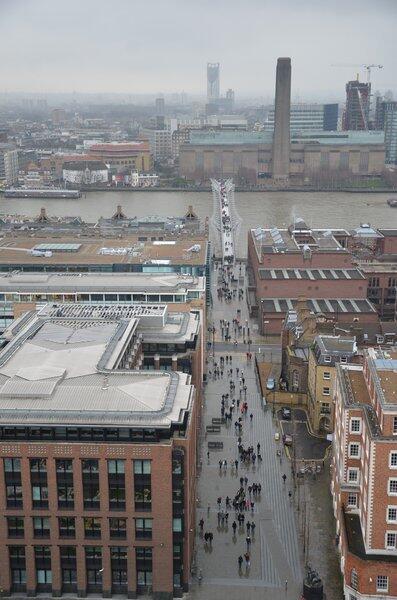
First, climb many steps to a high observation point beside the dome of St. Paul’s Cathedral. By the 1690s, it was mostly done. Then look down at the Millennium Bridge, built across the Thames in 2000. Remind yourself those are people, not ants. Oh, and the brick building and smokestack across the river? That’s the Tate Modern, a museum built within the shell of an old power station. It might be the most-visited contemporary art museum in the world. Shot in 2011.
Read more: What’s new in London since the last big royal wedding (Christopher Reynolds / Los Angeles Times)
Advertisement
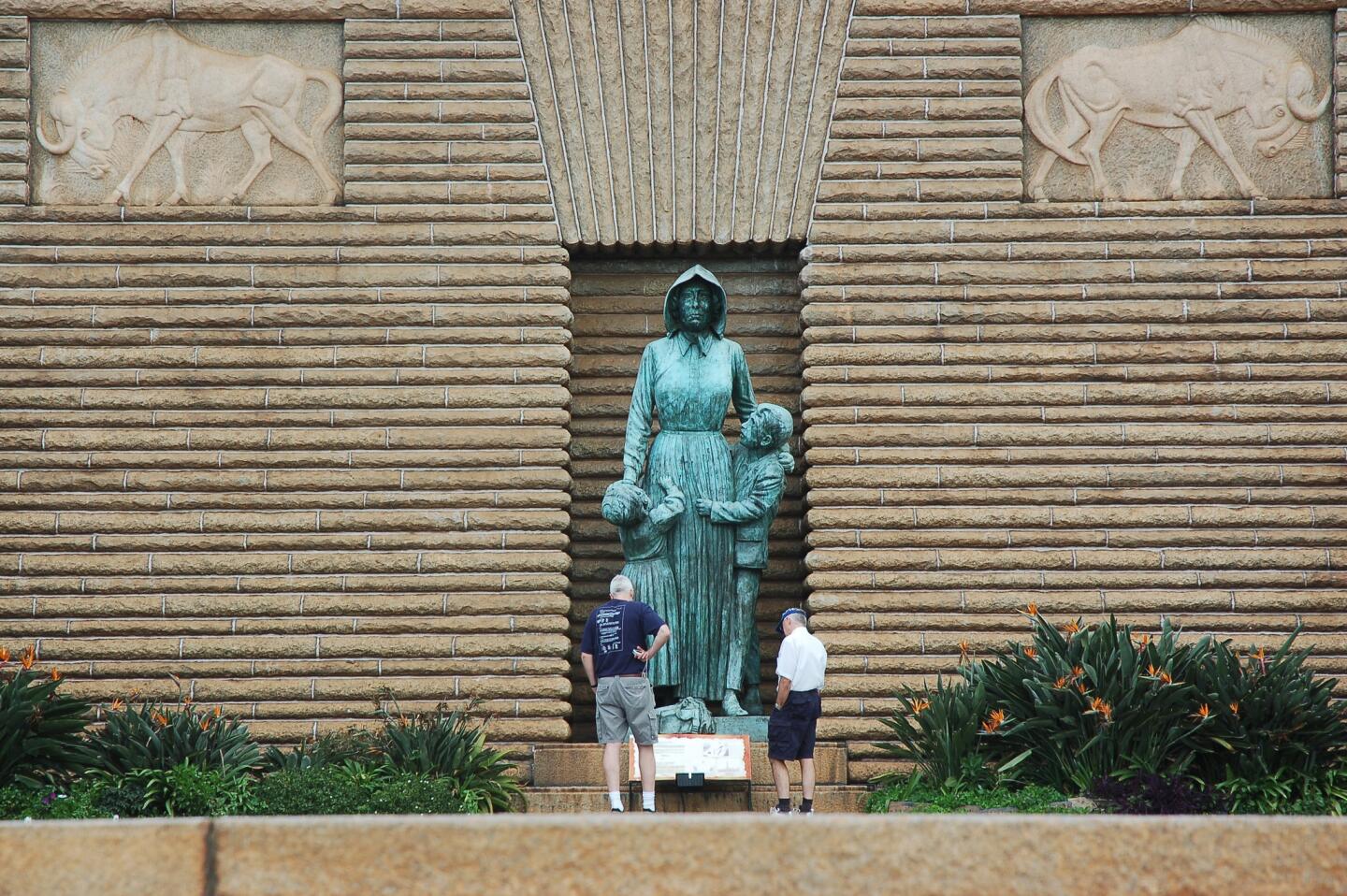
This one is for thinking rather than smiling. The Voortrekker Monument in Pretoria is a boxy, looming granite homage to the 19th century white pioneers who spread Afrikaner culture in South Africa. In the bad old days, many considered it the great temple of apartheid. Its strict geometry and scowling figures may give you the willies, as they did me. But sometimes, to begin figuring out a place, you need to feel the willies. After apartheid fell at last and Nelson Mandela rose to the presidency in the 1990s, the government could have leveled the monument. Instead Mandela let it stand as a reminder of the country’s thorny history. Shot in 2010.
Read more: South Africa: On the ball between matches (Christopher Reynolds / Los Angeles Times)
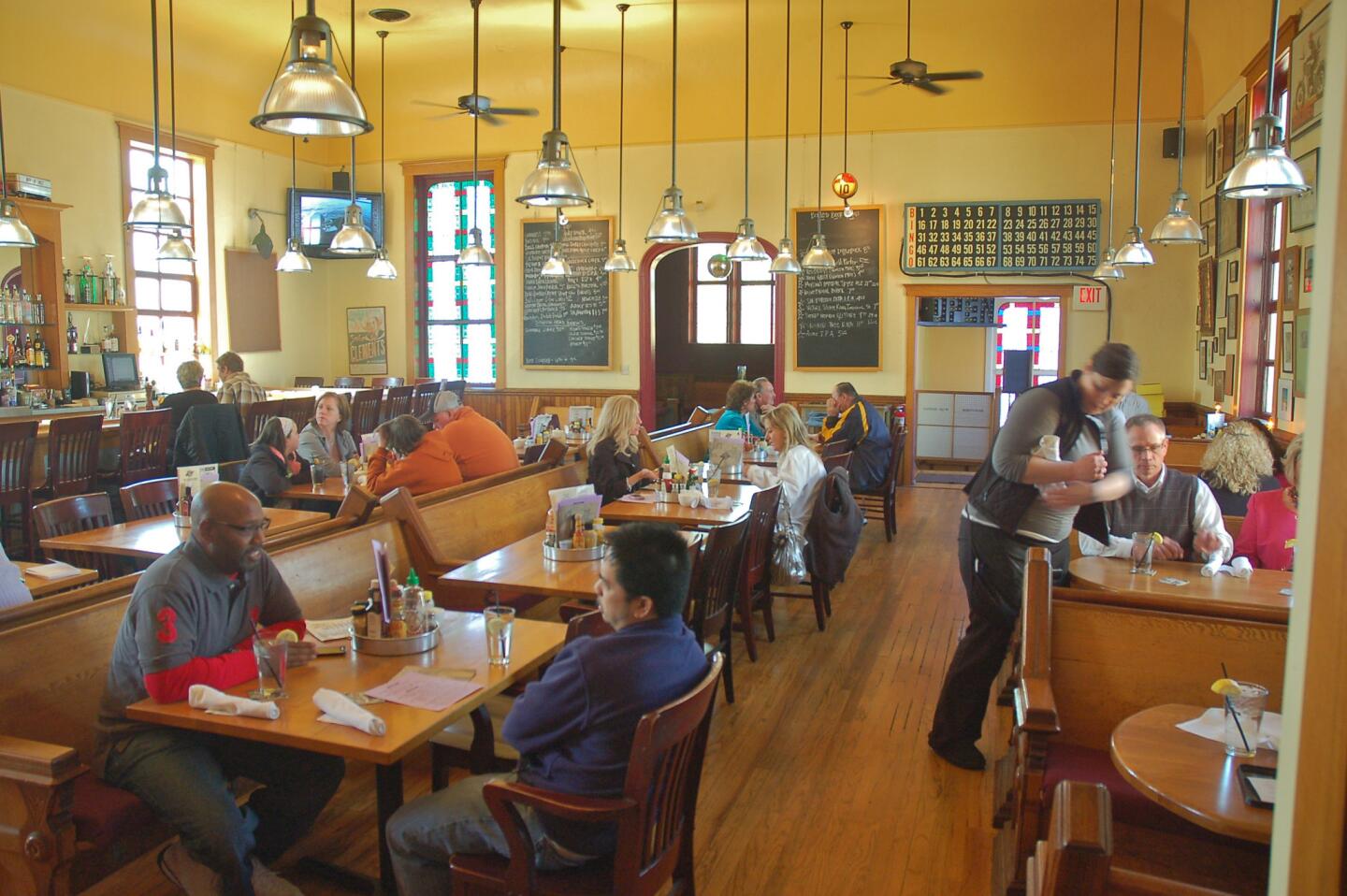
About 40 miles northwest of Detroit, there’s a town called Clarkston. In that town there’s a Main Street and on that street there’s a sturdy old building that used to be a church in the 1840s. But now it’s Union Bar & Kitchen, clarkstonunion.com, a secular shrine to mac, cheese and the other bright lights of the comfort food pantheon. Great food, cold beer, oak pews. Those numbers on the wall are a remnant of bingo games past. Shot in 2010.
More info: City of the Village of Clarkston (Christopher Reynolds / Los Angeles Times)
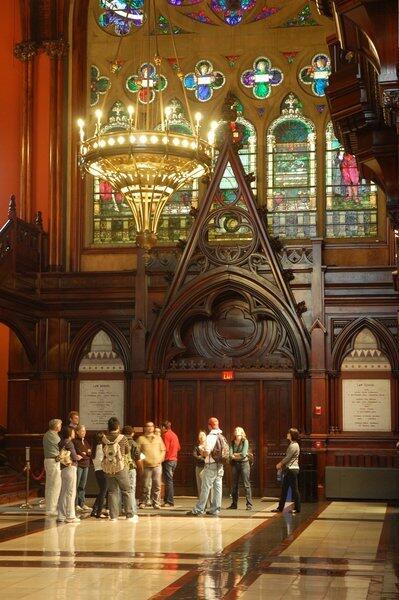
It’s probably hard to be a freshman at Harvard University, so what a relief it would be to hunker down for a little comfort food in the snug and folksy confines of Annenberg Hall. What’s that? Doesn’t look so folksy to you? Tough luck. This grand space is where all first-year students are encouraged to dine. Outsiders are discouraged. In fact, if you take the free tour of the Cambridge campus, you get only a quick look at this entryway. To see more, apply, get accepted and cover the cost of tuition, room, board and fees. For 2012-2013, that’s $54,496. Photo shot 2009.
Read more: A Cambridge crash course
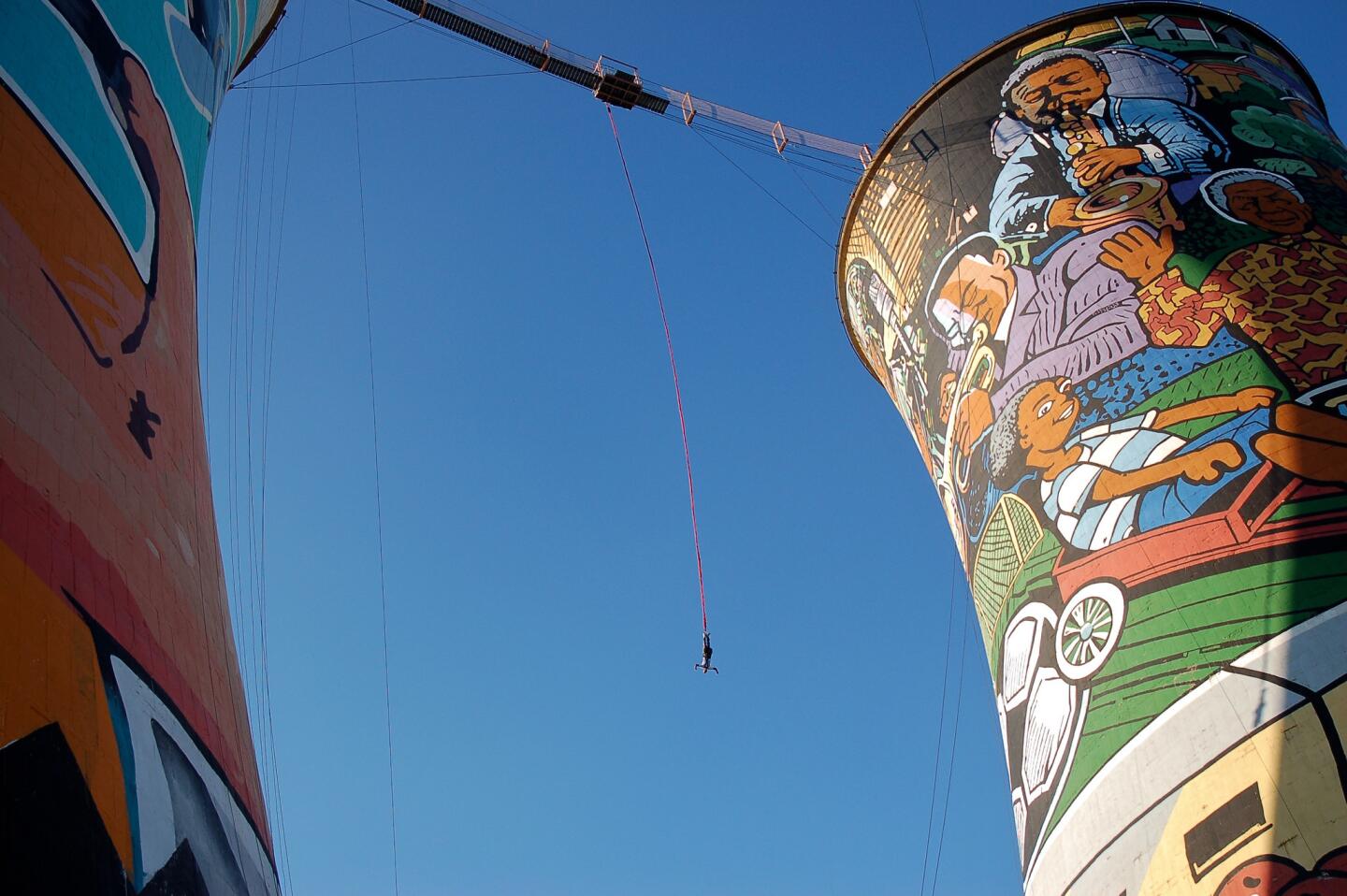
As if Soweto weren’t strange and fascinating enough, some daredevil entrepreneur took over two old (and mural-covered) utility towers and opened Orlando Towers as a bungee-jumping venue. Yes, I tried it. And no, I couldn’t quite spot the Nobel Laureate and retired Anglican bishop’s home, but it was nearby. Taken in 2010.
Read more: South Africa: On the ball between matches (Christopher Reynolds / Los Angeles Times)
Advertisement

I like Pi Day (3/14; get it?) because it reminds me of Pie Town, a classic roadside-attraction hamlet about 160 miles southwest of Albuquerque on lonely U.S. Route 60. Shot in 2001. You should stop for pie, of course, as we did at the Pie-O-Neer Cafe. Now, if you don’t mind, I’m off to search for Icecreamsandwichville.
Read more: On the path to the perfect storm (Christopher Reynolds / Los Angeles Times)
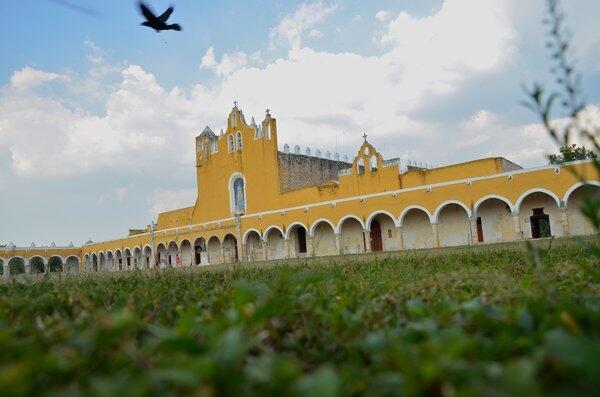
Decades ago, somebody decided that the town of Izamal, near Merida in the state of Yucatan, should be yellow. And so it remains, especially downtown, and most especially the Convento San Antonio de Padua, a landmark built on the base of an old Maya temple.
Read more: History lives in the Yucatan (Christopher Reynolds / Los Angeles Times)
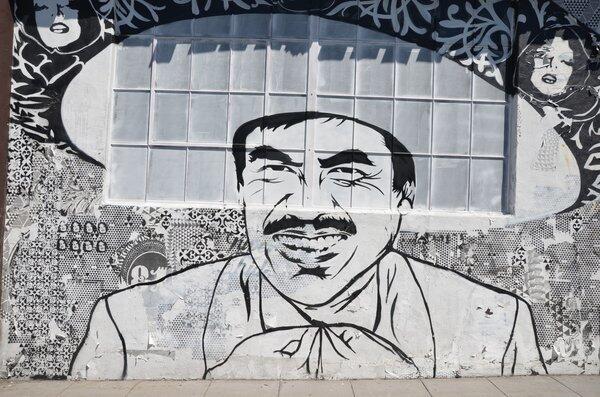
Graphics pop on the walls of this Mexican restaurant and bar, which I would have named El Sombrero Grande. The proprietors, however, prefer El Camino. It’s on India Street, between Mission Hills and Little Italy.
Read more: Southern California Close-Ups: San Diego, Coronado and La Jolla (Christopher Reynolds / Los Angeles Times)
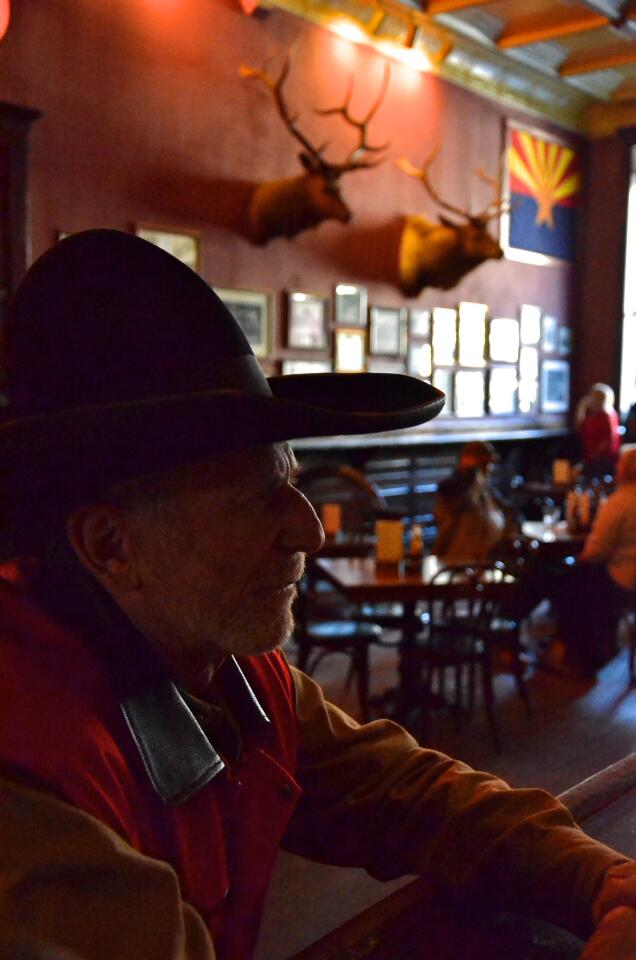
In the central plaza of downtown Prescott, Ariz., you’ll find a bunch of bars in what’s known as Whiskey Row. The grandest of them is the Palace Saloon. The man in the black hat, who looks like he might be fixin’ to rob the place, is actually the owner, Dave Michelson. Shot in 2012.
Read more: 100 cool places in Arizona (Christopher Reynolds / Los Angeles Times)
Advertisement
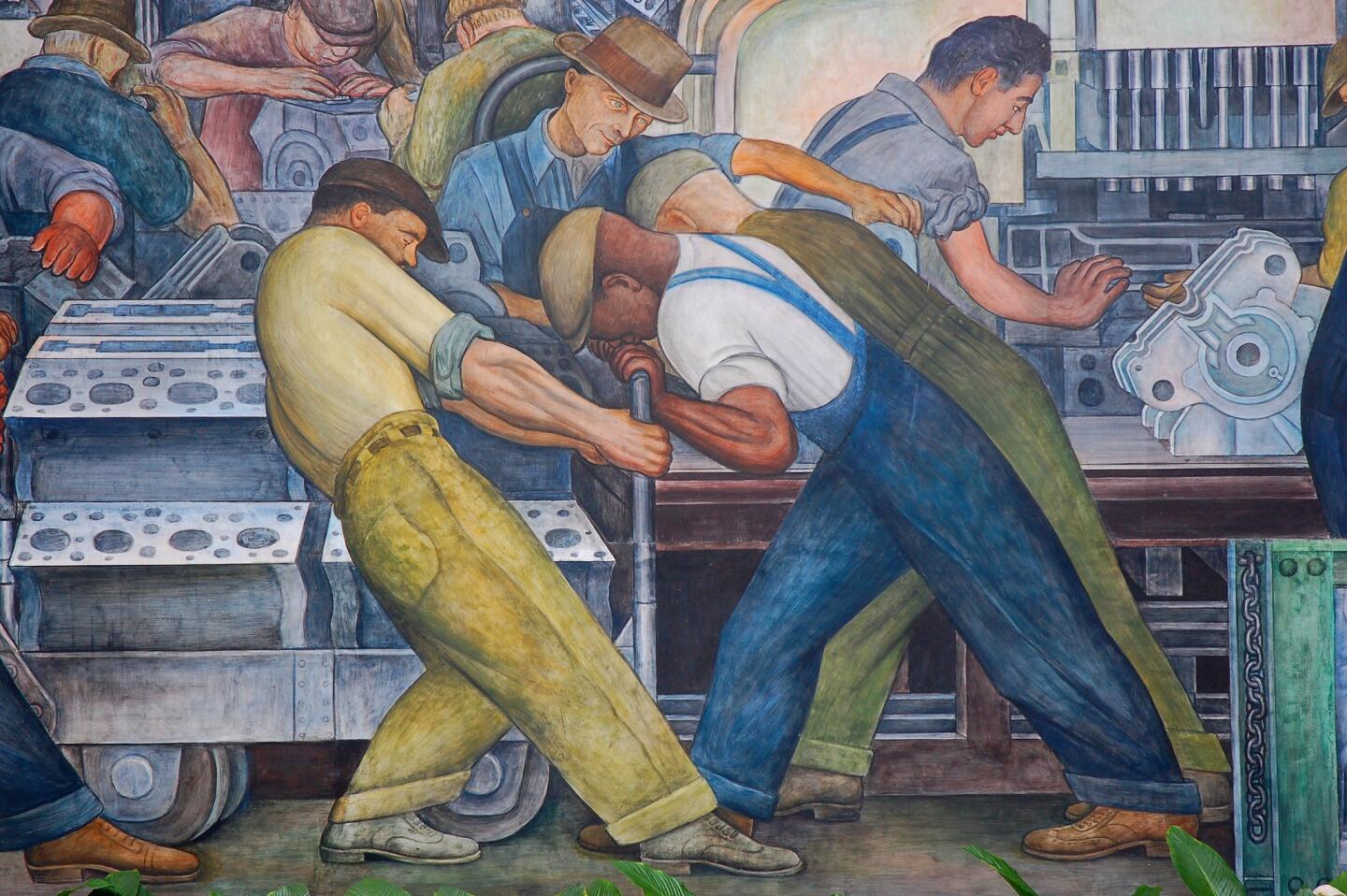
Somehow, 20th century serial subversive Diego Rivera persuaded all sorts of American big shots to underwrite his murals. One result: This assembly-line epic fills all four walls of a big room at the Detroit Institute of Arts Museum. Shot in 2010.
More info: Detroit Institute of Arts (Christopher Reynolds / Los Angeles Times)



